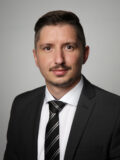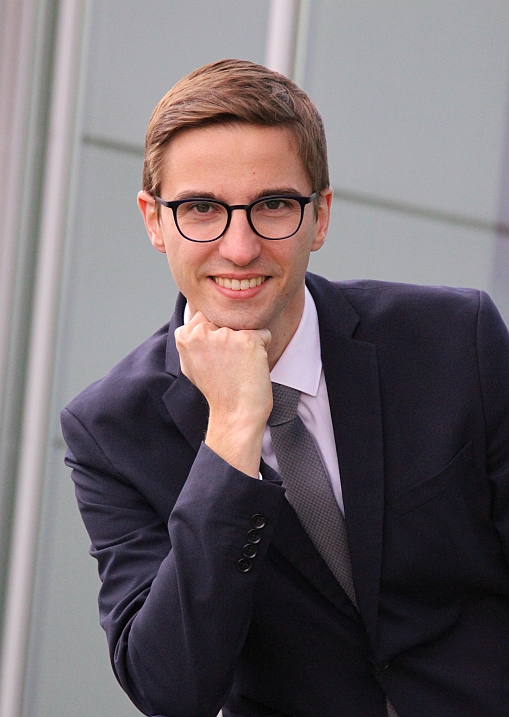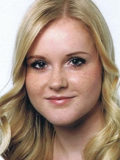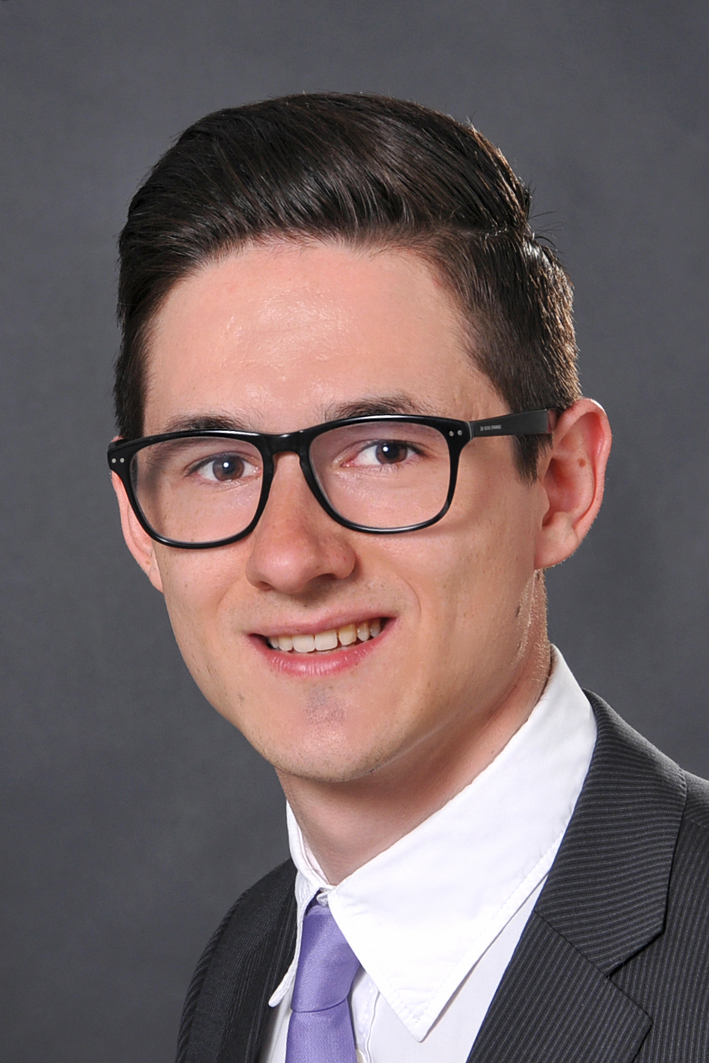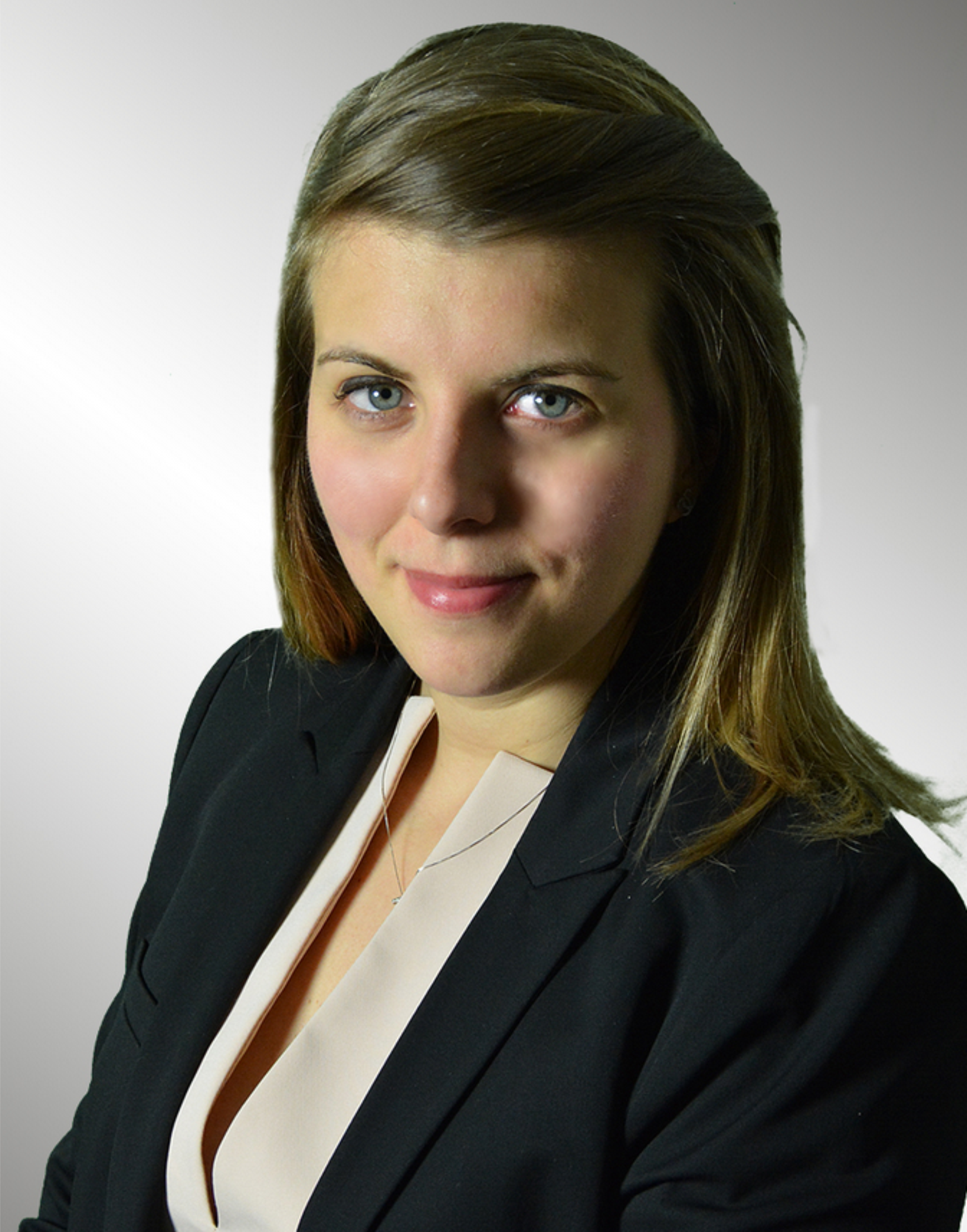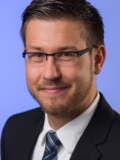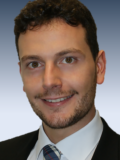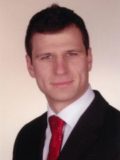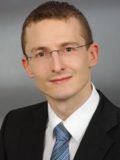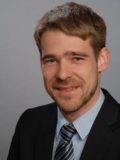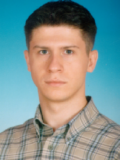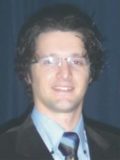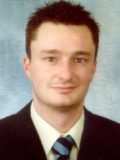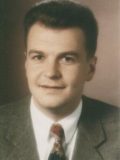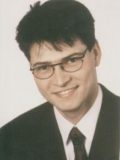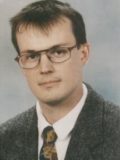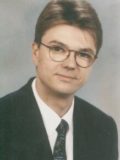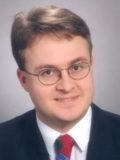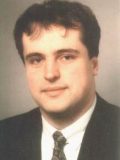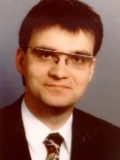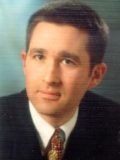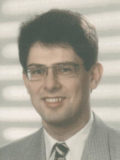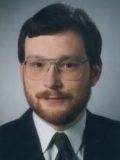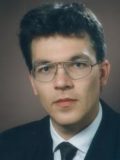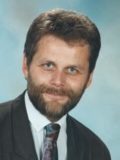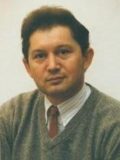Dissertations
All PhD-Thesises written at the LFT are available online following here link.
2024
Fundamental process understanding for the manufacturing of components with textured surfaces by micro-coining
Date: 14.11.2024
Reporter Prof. Dr.-Ing. habil. Marion Merklein, Prof. Dr.-Ing. Alexander Brosius
Due to the increasing demand for components with a high functional density, metallic components with textured surfaces are gaining in importance. The required manufacturing precision severely limits the choice of manufacturing processes for microtextured metal components. Although current micromachining processes deliver precise and repeatable structures, they are often time-consuming and costly. In contrast, forming technology enables efficient production of components with surface textures and high material utilization with to short cycle times. The objective of the thesis was therefore to develop a fundamental understanding of the process for the single-stage forming production of micro-coined surface structures. In addition to component- and process-specific challenges, mechanisms of action are derived in a systemic influence analysis. Based on this, methods for extending the process limits are developed. Industrial use is being researched by means of wear and tool life analyses.
Method for consideration of fluctuations of the tribological semi-finished product properties for the forming production of car body parts in the series process.
Datum: 25.10.2024
Reporter Prof. Dr.-Ing. habil. Marion Merklein, Prof. Dr.-Ing. Stephan Tremmel
With regard to a sustainable production, it is important to avoid reject due to quality defects in car body parts produced using forming technology. The causes of quality defects include fluctuations in the semi-finished product properties that influence the forming process but are not sufficiently considered when designing the parts. One reason for this is that fluctuations of the semi-finished product properties that influence friction have not yet been adequately investigated. The aim of the thesis was therefore to develop a consistent understanding of the process, from which a method for considering fluctuations in the tribological semi-finished product properties for the forming production of car body components in the series process has been derived. The investigations have shown that the prediction accuracy of the FE simulation can be improved. Consequently, reject can be reduced by modelling the real tribological conditions in the series production process.
Dr.-Ing. Barbara Hansen
Residual stresses in forward rod extrusion – development, control and stability
Datum: 09.04.2024
Reporter Prof. Dr.-Ing. habil. Marion Merklein, Prof. Dr.-Ing. habil. Mirko Schaper
Cold forming processes are used as efficient manufacturing methods. Inhomogeneous plastic strain distributions lead to residual stresses remaining in the material, which influence the fatigue behavior.
The aim of this work was to develop a method for residual stress-sensitive process design. Using a reference process, the development of residual stresses during full forward extrusion of stainless steel X6Cr17 was investigated numerically and experimentally. Control and disturbance variables for residual stress adjustment were qualified and their effects were quantified. Under typical component loading, different relaxation patterns were identified and model-based correlations between the load level, the load duration and the residual stress stability were derived.
It was shown that it is possible to influence the fatigue strength of extruded components by controlling the residual stress during forming. By adapting the process, the long-term strength could be increased cost-effectively.
Fundamental investigations of cold extrusion processes from sheet metal for the production of small pin structures
Datum: 26.03.2024
Reporter Prof. Dr.-Ing. habil. Marion Merklein, Prof. Dr.-Ing. Gerson Meschut
The miniaturization of products coupled with functional integration is a global trend that saves weight, space, material and costs. Particularly in mass production, forming processes offer technological, economical and ecological advantages compared to other technologies. Nevertheless, when scaling down the dimensions below a certain component size, so-called size effects may occur, which impede process stability, forming and handling. One possible solution offers multi-stage cold extrusion from sheet metal. Despite the challenges caused by the complex material flow, the investigations conducted within the framework of this PhD thesis have shown that the process has the potential to counter the existing restrictions. The gained fundamental knowledge for process optimization is expected to contribute in future to enhance the efficiency of bulk forming of metallic pin structures from sheet metal and to further develop it for the industrial mass production.
Dr. Martin Kraus
Systematic Investigation on the Sheet Metal Forming of Hybrid Components
Datum: 25.03.2024
Reporter Prof. Dr.-Ing. habil. Marion Merklein, Prof. Dr.-Ing. Michael Schmidt, Prof. Dr.-Ing. Peter Hoffmann
Current trends in the industry and the resulting challenges are pushing conven-tional manufacturing processes to their limits. Hybrid components, which consist of a sheet metal base body and additively manufactured structures, represent a promising solution. The possibilities of this approach can only be fully utilized if the individual processes and their effects on the components are understood. For this reason, a holistic investigation of hybrid components within the sheet metal forming process with a focus on deep drawing was carried out as part of the work. The components included the pro-cess strategy for building functional ele-ments on sheet metal substrates, material characterization and modelling and final-ly the investigation of hybrid components within deep drawing with adapted punch geometry. Based on the results obtained, the design of hybrid components can be improved and thus the potential of the approach can be fully utilized.
Methode to select an alternative material grade for a hot stamped Tailor Rolled Blank body-in-white structural component
Datum: 07.02.2024
Reporter Prof. Dr.-Ing. habil. Marion Merklein, Prof. Dr.-Ing. Bernd-Arno Behrens
The objective of the PhD thesis is to develop a method that enables the efficient selection of an alternative material for the use of tailor rolled blanks in the direct hot forming process. To achieve this objective, a material limit curve was developed to evaluate material suitability depending on the calculated product and process boundary conditions and the chemical composition of the material. Furthermore, the method describes an efficient characterization so that the compatibility of component design, desired process control and the selected material system can be evaluated at an early stage. This developed method uses uniaxial hot tensile tests to describe the material flow behavior and calculates the microstructure transformation kinetics by applying the JMAK equations. The validation is carried out by means of experimentally determined CCT diagrams, cup tests and analysis with hot formed TRB b-pillars. This acquired knowledge now makes it possible to select alternative materials in a more cost-efficient and resource-saving manner and to extend the process limits of current press hardening processes.
Dr.-Ing. Benedikt Göddeke
Prestressing and fatigue failure of cold forging tools for non-circular symmetrical part geometries
Datum: 17.01.2024
Reporter Prof. Dr.-Ing. habil. Marion Merklein, Prof. Dr.-Ing. Sebastian Härtel
Tool failure due to high forming loads impedes the applicability of ressource efficient cold forging processes for complex part geometries, which are increasingly in demand. The aim of the thesis was therefore the analysis of tool load and fatigue failure of dies with a non circular symmetrical inner geometry depending on the prestressing system. For this purpose, simuations and a newly designed fatigue test were used, in which the inner tool pressure typical for forging is applied by the cyclic compression of elastomers. Critical tensile stresses and fatigue cracks occur locally in tool areas that deviate the most from a circular inner geometry. For that reason, a locally adapted reinforcement pressure as well as stress pins pressed in to the dies were analysed as measures for a local prestressing. The numerically verified improved stress state led to a die life improvement in the fatigue test by 16% for stress pins and by 150% for adapted reinforcements.
2023
Improvement of the tribological behavior during hot stamping by using laser-implanted tool surfaces
Datum: 11.12.2023
Reporter Prof. Dr.-Ing. habil. Marion Merklein, Prof. Dr.-Ing. M. Rethmeier
The overall objective of the PhD thesis is to reduce friction and wear during hot stamping by using laser-implanted tool surfaces. For this purpose, basic requirement on the tool modification had to be defined at first. Friction, wear and cooling tests were then used to identify cause-effect relationships and to generate tailored tool surface modifications. Finally, the effectiveness of the technology was verified by means of hot stamping tests using an industry-related demonstrator geometry. Based on the knowledge, it is possible to manufacture hot stamped parts in a resource-efficient and stress-appropriate manner, thus creating sustainable economic and ecological benefits in the form of higher component quality, lower scrap rates and longer tool service lives.
Dr. Stephan Schirdewahn
Development of a basic understanding of gear cold forging for the application in the material pairing metall-polymer
Datum: 01.12.2023
Reporter Prof. Dr.-Ing. habil. Marion Merklein, Prof. Dr.-Ing. Dipl.-Wirtsch.-Ing. P. Groche
Dry-running gears of the metal-polymer material pairing combine the specific advantages of both materials. Depending on the properties of the metallic partner, however, high wear occurs, which is why only machined steel pinions have been used to date. However, gear manufacturing by cold forging offers potential due to short process times, high material efficiency and advantageous mechanical properties
Um das Einsatzpotential fließgepresster Zahnräder aus Leichtmetallen zu steigern und den Verschleiß zu reduzieren, wurde ein Verständnis zur betriebsangepassten Herstellung erarbeitet. Dies beinhaltet die Ermittlung von Einflussgrößen auf den Verschleiß sowie die Identifikation der Verschleißmechanismen. Zudem wurden Stellhebel auf die Prozess- und Bauteileigenschaften fließgepresster Zahnräder ermittelt. Abschließend wurden anwendungsgerechte Empfehlungen zur Herstellung betriebsangepasster, einsatzfertiger metallischer Zahnräder für die Materialpaarung Metall-Kunststoff durch Kaltfließpressen abgeleitet.
Fundamental investigations on the forming of semi-tubular self-piercing rivets made of high strain hardening materials
Datum: 07.11.2023
Reporter Prof. Dr.-Ing. habil. Marion Merklein, Prof. Dr.-Ing. H. C. Schmale
Mechanical joining technologies, such as semi-tubular self-pierce riveting, are essential for lightweight design. The production of rivets is energy-intensive, time-consuming and costly due to heat treatment and coating. The use of high strain hardening, stainless rivet materials makes these process steps unnecessary. The process knowledge for the production of rivets from such materials was missing until now.
The objective, therefore, was to establish a fundamental process understanding for the forming of rivets using high strain hardening rivet materials. For this purpose, process- and material-related factors influencing the process and the rivet properties were identified and analyzed using an experimental-numerical approach. Subsequently, cause-effect relationships and process limits were deduced from the analysis. In contrast to conventional rivets, the rivets exhibit graded mechanical properties because heat treatment is not required. Thus, the potential for the production of rivets with properties tailored for joining was demonstrated.
Dr. Clara-Maria Kuball
Investigation into material flow control during joining by forming high-strength aluminum alloys using local short-term heat treatment
Datum: 02.11.2023
Reporter Prof. Dr.-Ing. habil. Marion Merklein, Prof. Dr.-Ing. habil. V. Kräusel
Joining by forming of 7000 series aluminum alloys is a challenge due to their high strength in the aged state. The mechanical properties of the materials can be adjusted by a heat treatment, leading to the improvement of their formability. Localized heat treatments can be used to influence the material flow during forming. Within the scope of this work, a basic understanding for controlling the material flow during mechanical joining of precipitation-hardenable aluminum alloys by means of localized retrogression annealing was developed. For the example of the shear-clinching process, it was shown that the joinability of 7000 series aluminum can be improved by applying locally limited heat treatments. By controlling the material flow, the undesired displacement of the material from the joining zone is reduced and the joint strength is increased.
Finite Element Analysis of thin packaging steel: Development of a suitable characterisation and validation procedure
Date: 26.04.2023
Reporter Prof. Dr.-Ing. habil. Marion Merklein, Prof. Dr.-Ing. habil. A. Brosius
In order to reduce CO2 emissions, increasingly high-strength packaging steels are being developed that allow the use of thinner sheet thicknesses. At the same time, numerical simulations offer great potential to meet the growing challenges regarding the product and process design. The modelling of higher strength material behavior in the simulation by means of flow curves and yield locus models has so far only been possible to a limited extent due to high temper rolling degrees and strong aging phenomena. Within the scope of this work, the hardening description was therefore carried out by optimizing the tensile test and using hydraulic bulge tests. The description of the anisotropic plastic material behavior focused on the description of the first yield locus quadrant as well as on the determination of r-values by inverse modeling. For the developed material models, the improved quality of the simulation in comparison to the state of the art could be shown in a validation procedure derived for packaging steels.
Dr.-Ing. Fabian Knieps
Tailored material characterization for the numerical design of sheet metal forming processes
Datum: 09.03.2023
Reporter Prof. Dr.-Ing. habil. Marion Merklein, Prof. Dr.-Ing. G. Meschut
In many industries, there is a trend towards lightweight design to reduce the overall weight of the product. The challenge in this context is the reduced formability of these innovative materials with lightweight design potential. Especially the material behavior at plane strain is of crucial importance, since the lowest formability is present here. The primary objective is therefore the fundamental investigation of the material behavior at plane strain and the influence on the mapping accuracy of the modeled yield locus in the context of plane strain. For this purpose, new testing and evaluation methods are being developed. The resulting material parameters will subsequently be used for an improved modeling. The ap-proach will be validated by means of error indicators based on a sample process. The aim is to achieve an efficient material characterization and identification of the essential model parameters in order to improve the simulation quality. With the knowledge gained, it is possible to reduce the number of tests required and thus the financial and time expenditure to the necessary minimum, while at the same time making the process design more efficient.
Dr. Matthias Lenzen
2022
Analysis of local short-term heat treat-ment methods to improve the forming behavior and the component properties of aluminum extruded hollow profiles
Date: 24.11.2022
Reporter Prof. Dr.-Ing. habil. Marion Merklein, Prof. Dr.-Ing. habil. O. Keßler, Prof. Dr.-Ing. M. Schmidt
The local short-term heat treatment represents a flexible approach to extend the forming limits of precipitation-hardenable aluminum sheet semi-finished products. As part of the work, an investigation was carried out into the application of this technology to improve the forming behavior of extruded hollow profiles in the bending process. The consideration of influencing factors specific to the material, semi-finished product and process presented a particular challenge. Based on a holistic characterization of the material behavior as a function of the short-term heat treatment temperature and the derivation of suitable material models, a numerical and experimental analysis of the influencing factors on the short-term laser heat treatment and the subsequent bending process was carried out. The understanding of the process that had been built up was then used to design tailor short-term heat-treated aluminum extruded hollow profiles, with which the material flow can be controlled in a targeted manner and the forming limits can be enhanced.
Basic investigations and development of a methodology for the manufacturing of process adapted semi-finished products based on a novel flexible rolling process
Datum: 22.07.2022
Reporter Prof. Dr.-Ing. habil. Marion Merklein, Prof. Dr.-Ing. N. Ben Khalifa
The use of process-adapted semi-finished products offers great potential for increasing material efficiency in forming processes. For the production of tailored blanks, incremental processes in particular show great potential with regard to the application of higher-strength materials. Within the scope of this work, a holistic process understanding for the production of tailored blanks by means of a novel flexible rolling process was established. For this purpose, a novel tool concept was developed, the process limits were determined and a fundamen-tal process and influence analysis was carried out. Through experimental development of cause-effect relation-ships, physical causalities could be derived, which were used to derive a holistic, analytical design method. Transferability studies demonstrated the general validity of the method for higher strength materials and varying semi-finished product thicknesses. Finally, the poten-tial of rolled tailored blanks in a down-stream forming process was evaluated.
Dr. Manfred Vogel
Ultrasonic-assisted forming and caulk-ing of steel materials
Date: 21.07.2022
Reporter Prof. Dr.-Ing. habil. Marion Merklein, Prof. Dr.-Ing. P. Groche
Dr.-Ing. Uwe Leicht
Sheet-bulk metal forming of functional components from coil
Date: 18.07.2022
Reporter Prof. Dr.-Ing. habil. Marion Merklein, Prof. Dr.-Ing. S. Wartzack, Prof. Dr.-Ing. S. Tremmel
Compared to the forming of pre-cut blanks, the production of components with integrat-ed functional elements by sheet-bulk metal forming from coil enables a significant in-crease in output quantity. Within the scope of the work, a basic process understanding for the sheet-bulk metal forming of compo-nents from coil was developed. The com-monalities and differences in material flow and tool load compared to forming of pre-cut blanks were identified. The influence of se-lected semi-finished product properties on the process was investigated. The causes of non-uniform material flow were analyzed as a coil-specific challenge. Based on this, several workpiece-, process- and toolsided approaches were identified to control the mate-rial flow during forming from coil and to improve the geometrical accuracy of parts. The wear behavior of the tailored tool sur-faces, one of the material flow controlling measures, was investigated by forming 90,000 parts. Thus, the suitability of this approach for high-volume production from coil was proved.
Development of an overall process understanding of deep drawing processes with drawbeads based on mechanical and tribological analyses
Date: 21.06.2022
Reporter Prof. Dr.-Ing. habil. Marion Merklein, Prof. Dr.-Ing. A. Brosius
In the correlation of saving resources, lightweight construction still plays a key role. For the failure free production of car body components in deep drawing, drawbeads are used to control the mate-rial flow. Whereas there is a lack of a broad understanding of the effect of a drawbead on the mechanical and tribo-logical system. Subsequently, the overall objective was to work out an integrally understanding and to evaluate and in-crease the prediction accuracy for pro-cesses with drawbeads. Therefore, a model test and a deep drawing setup with drawbeads was used. The work was also focused on the qualification of suitable measurement methods, such as an optical in-situ strain measurement, in order to carry out a multilevel process analysis and to derive correlations. Furthermore, the simulation accuracy was evaluated on the basis of experimental measure-ments and the quality of the prediction was improved by transferring the find-ings. Within the scope of a validation on deepdrawn components, the findings could be transferred and also additional-ly differentiated for linear and convex drawbeads.
Basic investigations on the grading of mechanical properties of hot stamped parts by a localized carburization
Date: 02.06.2022
Reporter Prof. Dr.-Ing. habil. Marion Merklein, Prof. Dr.-Ing. B.-A. Behrens
Hot stamping is an established process for the production of safety-relevant body components. Further lightweight potential is offered by components with tailored properties. In this context, the process combination of carburizing and hot stamping is promising. Due to the lack of process knowledge, the overall objective of the present dissertation was to develop a basic process understanding for grading the mechanical properties by localized carburization. For this purpose, process-side and semi-product-side influencing factors during carburization were first analyzed. Through a holistic characterization, a basic process knowledge was developed. Based on this, the extent of the transition zone of graded components and the influence of grading on the mechanical properties were investigated. The derived findings were verified on the basis of a sample component.
Material and forming behaviour of high-strength aluminium sheet materials for body-in-white applications
Date: 11.04.2022
Reporter Prof. Dr.-Ing. habil. Marion Merklein, Prof. Dr.-Ing. habil. O. Keßler
A promising approach to achieve resource efficiency through lightweight design in vehicle body-in-white construction is the investigation of 6000 alloys at the limits or outside the specification of conventionally used aluminum sheet materials in body-in-white. In this context, an understanding of the influence of the mechanical properties as a function of temperature, time and plastic strain in the conventional process route, in an economically integratable post forming heat treatment and a property-oriented partially age-hardened T61 state is the basis for the definition of the process windows. Finally, the findings are validated under series production conditions and verified using the B-pillar application in order to evaluate the potential for industrial implementation.
Dr.-Ing. Artur Klos
2021
Investigations on the formability of hybrid parts consisting of sheet metal body and additively manufactured structure
Date: 20.12.2021
Reporter Prof. Dr.-Ing. habil. Marion Merklein, Prof. Dr.-Ing. habil. M. Bambach, Prof. Dr.-Ing. M. Rethmeier
The combination of forming and additive manufacturing offers the potential of ressource efficient part processing. The application of hybrid parts consisiting of a sheet metal body with additively manufactured structures enables shorter production times and use of less material than pure additive manufacturing. In order to exploit the potentials of this approach, a broad process understanding is required. Therefore, in this work the material and part properties, formability under bending stress and the application to a demonstrator part are investigated. In this context parameters of impact on the formability are analyzed and effect mechanisms when forming hybrid parts are identified. The gained knowledge can be used to design forming of hybrid parts.
Influence of the pre-material on multi-stage cold forming processes from wire
Date: 15.11.2021
Reporter Prof. Dr.-Ing. habil. Marion Merklein, Prof. Dr.-Ing. K. Roll
In the production of fasteners, wire materials are usually used as pre-material. Due to the strong cost pressure in a globalized sales market, the pre-material as a potential factor for reducing manufacturing costs moves into focus. However, an incorrect choice of pre-material carries the risk of impairing process capability, as can be seen from the model process investigated in this work. A detailed analysis of a boron-manganese steel made it possible to determine how the wire manufacturing process affects the plastic material properties. The developed modeling approaches which take into account the properties from preliminary processes in numerical models now allow the quantification of properties of different manufacturing variants of a wire material. In addition, an investigation of important basic forming operations shows that the targeted use of pre-material conditions can also be used to extend process limits.
Dr.-Ing. Bastian Zimmermann
A contribution to the digital design of joining processes in the Body in White shop with focus on remote laser welding using flexible clamping technology
Date: 15.11.2021
Reporter Prof. Dr.-Ing. habil. Marion Merklein, Prof. Dr.-Ing. K. Roll
The use of pneumatically actuated clamping rolls attached to welding robots enables an increase in flexibility in remote laser welding in the Body in White shop. The design of the clamping forces, the joining devices and the component tolerances suitable for production represent a challenge. In this work, the clamping and joining process of remote laser welding with a clamping roll was investigated. The investigation was carried out by experiments and simulations with sheet metal parts made of steel and aluminum, as well as for cast aluminum components. For the simulative investigation, validated finite element simulation models were developed, which represent the use of a flexible clamping roll in the Body in White shop for the first time. Based on the investigations, process- and component-related solutions for reducing the required clamping forces and the resulting joining gaps were identified and a fundamental process understanding for the novel manufacturing process was developed.
Dr.-Ing. Felix Bauer
Resistance element welding with upset auxiliary joining elements - Forming interactions
Date: 27.10.2021
Reporter Prof. Dr.-Ing. habil. Marion Merklein, Prof. Dr.-Ing. G. Meschut
Resistance element welding with upset auxiliary joining elements enables joining of multi-material pairings in the automotive bodyshop through conventional resistance spot welding technology. In the course of this work, the forming-technical interactions for influencing the joint strength were identified. For this purpose, the main influence factors were analyzed, the applicability of resistance spot welding was proven and the associated influence of the failure behavior in conventional stress cases was discussed. As a considerable process control variable, the material flow could be identified during the upsetting of the auxiliary joining elements. Consequently, the material flow was summarized with the other significant influencing factors on joint strength in a material flow model. Thus, through this research, a basic process understanding could be developed, which forms the basis for further applications of the analyzed joining process.
Dr.-Ing. Mario Meinhardt
Design and application of process-adapted semi-finished products for sheet-bulk metal forming
Date: 27.07.2021
Reporter Prof. Dr.-Ing. habil. Marion Merklein, Prof. Dr.-Ing. H. J. Maier
Within the scope of the work, process-adapted semi-finished products were designed in order to improve the properties of functional components that are produced by a single-stage process combination of deep drawing and upsetting. As a basis for the investigations, the requirements-based design of a target-oriented tool geometry was carried out using a numerical variant simulation, which was subsequently supplemented by a more efficient design approach. The central requirements include the avoidance of identified defect patterns on the externally geared functional components, which are produced by the single-stage process combination. The designed tool insert allows a process-adapted material pre-distribution to increase the material flow control in the forming process and to improve the filling of the functional elements and enables the intended defect avoidance. The potential of process-adapted semi-finished products was demonstrated for various steel grades.
Surface structuring of metal inserts by forming within a progressive die for media tight polymer-metal hybrid parts
Date: 12.05.2021
Reporter Prof. Dr.-Ing. habil. Marion Merklein, Prof. Dr.-Ing. D. Drummer
Due to the growing demand for electronic systems, the production of polymer-metal hybrid parts, in which a metal insert is overmolded with an insulating polymer component, is of particular importance. Media tightness is a key requirement, which is currently only achieved with expensive additional processes. In this work, edge rounding and the embossing of transverse grooves in metallic inserts in a progressive die were investigated. The aim was to create an understanding of the manufacturability of structured inserts and to identify the process limits. It was shown that, compared to untreated, sharp-edged inserts, the use of rounded edges can increase the durability of the sealing effect of the polymer-metal hybrid parts. The use of surface structuring by forming technology made it possible to reduce the leakage rate by more than an order of magnitude compared to unstructured inserts.
2020
Surface modification and development of an evaluation methodology for wear characterization in hot stamping
Date: 16.12.2020
Reporter Prof. Dr.-Ing. habil. Marion Merklein, Prof. Dr.-Ing. M. Schmidt
The hot stamping process is an established method in order to manufacure safety-relevant body parts. The use of AlSi-coated semi-finished parts leads to a material transfer of AlSi particles to the tool surface during deep drawing, which requires a high maintanace effort. Due to the process temperatures over 900 °C it is not possible to use lubricants as wear reduction. Within the scope of this work the influence of different alloying elements and alloying concentration on the wear behavior was analysed in order to increase the wear resistance of the tools. As a result a specific adaption of a surface modification for hot stamping tools was realized. A further focus was to develop an analysis method for the quantitative evaluation of the wear behaviour. By this method it was possible to determine the adhesive and abrasive wear seperately.
Qualification of laser-additively manufactured components for the utilization in tools for bulk metal forming
Date: 07.12.2020
Reporter Prof. Dr.-Ing. habil. Marion Merklein, Prof. Dr.-Ing. M. Schmidt
The use of additive manufacturing processes offers the opportunity to meet the growing desire for individualized products. However, additively manufactured components reach their limits in the production of highly and dynamically loaded components. Forming manufacturing processes have become established for these components. Within this work, the properties of additively manufactured tool steels were analyzed and compared with those of conventional tool steels. It could be proven that additively manufactured tools achieve the requirements of bulk metal forming. With a modified heat treatment, the incremental thermal manufacturing principle of the laser-additive process even enables an improvement of the mechanical properties of the materials. The use of additive manufacturing processes in tool production enables a reduction in throughput times, especially when developing new tools.
Accumulative Roll Bonding - Evaluation of the forming properties of multi-layered sheet materials of the precipitation hardenable alloy AA6014
Date: 17.06.2020
Reporter Prof. Dr.-Ing. habil. Marion Merklein, Prof. Dr.-Ing. habil. M. Schaper
Accumulative Roll Bonding is a process for the production of semi-finished sheet material with an ultra-fine grained microstructure. Against the background of lightweight design, the increase in strength tha can be achieved is a significant advantage. The aim of this work is the evaluation of the forming properties of the ultra-fine grained aluminum alloy AA6014. The focus is on a new approach to tempering the working rolls in the rolling process. A temperature range from room temperatur to 200 °C was investigated. Based on the analysis of the mechanical material properties as a function of the parameters of the rolling process, the forming limits for bending and deep drawing processes were examined. The rolling process with temperature-controlled working rolls enables increased ductility and enhanced forming limits of the semi-finished products compared to the cold rolling process. On the basis of the results of this work, the performance of the investigated materials for use in metal forming technology is demonstrated.
Cold forging of gearing elements on sheet metal
Date: 20.05.2020
Reporter Prof. Dr.-Ing. habil. Marion Merklein, Prof. Dr.-Ing. B.-A. Behrens
Increasing demands on parts in terms of strength, weight and functional integration are pushing established forming processes for sheet metal and bulk forming to their limits. A combination of the process classes sheet and bulk forming combines their specific advantages, extends the limits of established forming processes and enables the production of geometrically complex components. This work focuses on the production of sheet-bulk metal formed components by a forward and lateral extrusion process. Up to now, the achievable geometrical accuracy and the failure-critical tool load have been considered as major challenges and hinder an industrial application. With this in mind, this work aims at creating a fundamental process understanding for the extrusion of minute gearing elements using the example of running and locking gears on sheet metal. The process knowledge is the starting point for research into measures to extend current forming limits.
2019
Development of a process understanding for improving the tribological conditions during hot stamping
Date: 18.12.2019
Reporter Prof. Dr.-Ing. habil. Marion Merklein, Prof. Dr.-Ing. habil. V. Kräusel
The focus of this research work was the establishment of a comprehensive process understanding regarding the prevailing friction and wear mechanisms. This served as the basis for the identification of tool-sided measures for reducing friction and wear. Therefore, a methodology for the characterization of tribological conditions during hot stamping was developed as part of this work. A specific and reproducible investigation on the influence of critical process parameters is hereby possible via flat strip drawing tests. Based on this investigation, different surface processing methods, the influence of the composition of the alloy and the heat treatment of the tool material were studied. Furthermore, the application of tool coatings was analyzed. Finally, tests were performed to determine the transferability of these findings from laboratory tests to a geometry with increased complexity.
Cold forging of spur and helical gears
Date: 11.12.2019
Reporter Prof. Dr.-Ing. habil. Marion Merklein, Prof. Dr.-Ing. S. Wartzack
This research work focussed on cold forging of spur and helical gears using the "Samanta" process. This process entails multiple blanks being pressed sequentially through a die. The decisive advantage compared to classical lateral and forward extrusion processes is the avoidance of an ejection operation of the formed components. Thus, a negative influence on the gearing quality is prevented. The project also documented the feasibility of producing different gear geometries out of the common steel grades 16MnCr5 and C15C. Based on these results, practical methods were researched in order to favourably influence the component and process properties. The investigations were carried out using experimental and numerical analyses, and the findings were then summarized and evaluated in terms of the practical benefits in order to provide recommendations for gear manufacturing using the "Samanta" process.
Evaluation of the failure behavior of sheet metal using the forming limit diagram
Date: 09.12.2019
Reporter Prof. Dr.-Ing. habil. Marion Merklein, Prof. Dr. L. Fratini
Using the formability of sheet metal to its full potential is crucial for process optimization. This is especially case in the automotive industry where currently the development of lightweight structures is trend. Nevertheless, current standard evaluation methodology shows general weakness for lightweight and brittle materials. This study carried out a detailed analysis of the failure mechanisms of different material classes in order to improve the forming limit evaluation. The aim was to analyze the validity of the definition of the onset of necking and to ensure a correct prediction of the forming limits for materials, including those that show no localization. The acquired knowledge was done in order to define the validity range of formability using pattern recognition methodology and to optimize the forming limit evaluation while taking into consideration the peculiarities of the different materials.
Fundamental investigations on the maufacturing of high-strength aluminium sheet metal parts within a combined forming and quenching process
Date: 27.11.2019
Reporter Prof. Dr.-Ing. habil. Marion Merklein, Prof. Dr.-Ing. habil. M. Bambach
The use of high-strength aluminium alloys allows the lightweight potential to be increased. Due to the limited formability of these materials, temperature-based processes are needed to realize the production of sophisticated component geometries. A new approach is the combination of the forming and quenching processes. It is possible to improve the formability and the hardenability of the alloy while shortening the process chain by performing a solution heat treatment in combination with simultaneous forming at elevated temperatures and tool-side quenching. Aim of this research work was a fundamental investigation in order to determine the process’s potential. The focus was on defining the boundary conditions regarding the heat treatment, as well as the process design and final process evaluation, using a hat profile component.
Data acquisition for the application of learning algorithms in the production of shaped sheet metal parts
Date: 07.11.2019
Reporter Prof. Dr.-Ing. habil. Marion Merklein, Prof. Dr.-Ing. B. Vogel-Heuser, Prof. Dr.-Ing. M. Wagner
The industrial manufacturing process of shaped sheet metal parts is influenced by numerous fluctuating factors. Therefore, quality problems appear to occur randomly which leads to defective parts and a loss of productivity. A suitable way to improve these processes is the use of data analysis and statistical methods like machine learning. However, the required database is missing in order to use these methods. As a result, a generally valid and transferable method for recording and saving relevant influencing and resultant variables during the series production of sheet metal parts was developed in this work. Data collected in this way allows the analysis of correlations within the process, the prediction of the quality via learning algorithms and the calculation of suitable press settings. In addition, to the development of data acquisition, the data's possible applications were tested and thus the functionality of the developed method could be confirmed.
Dr.-Ing. Stephan Purr
Investigation of functional relationships between self-piercing nuts and semi-finished sheets
Date: 30.07.2019
Reporter Prof. Dr.-Ing. habil. Marion Merklein, Prof. Dr.-Ing. K. Roll
The increasing usage of higher strength and high strength steels requires continuous development of the self-piercing nut technology. In practice, the parameter identification and optimization of the joining is only conducted experimentally. Not only does this trial and error approach lead to long development times, but it also fails to establish a broad understanding of the joining process. In this work finite element modeling was used to identify influencing variables and their effects on the joining strength. The primary objective of this work was to gain a fundamental understanding of the self-piercing nut technology. Based on the conducted material flow analysis, correlations between the specific geometric nut characteristics and the geometric joining zone were determined. These findings were finnaly used in conjunction with the validated FE model in order to optimize the self-piercing nut geometry to expand the process limits of the joining technology.
Fundamental investigation of the process and material behaviour during ultrasonic-assisted forming
Date: 16.07.2019
Reporter Prof. Dr.-Ing. habil. Marion Merklein, Prof. Dr.-Ing. B.-A. Behrens
The superposition of mechanical tool vibrations with ultrasonic frequencies is an approach that enables a considerable reduction of forming forces. So far the incomplete understanding of the detailed process behaviour constrains the technology's broad industrial applications. This thesis was focused on the identification of the mechanisms responsible for the vibration-based softening phenomenon and the investigation of the ultrasonic influence on material forming limits. Apart from the known effect of vibration-induced force reduction, substantial specimen heating was recorded during fundamental process analysis. In addition, a strongly altered forming behaviour was observed. Thermal softening and material related influences have been identified as crucial mechanisms regarding force reduction. It was found that all investigated materials experience a significant reduction of their forming limit due to the influence of the ultrasonic vibrations.
Enhancement of the formability of multi-layered aluminum sheet metal with ultrafine grain structure
Date: 18.06.2019
Reporter Prof. Dr.-Ing. habil. Marion Merklein, Prof. Dr.-Ing. A. Brosius
Multilayered aluminum sheet metal with ultrafine grain structure, which is produced in the Accumulative Roll Bonding (ARB) process, offers relevant potential for lightweight construction due to its increased strength. However, the formability of these materials is rather limited and the process has only been established at the laboratory scale so far. In this work the ARB process was analyzed and the required methods and process parameters were identified in order to enable the production of large-sized sheet metal with ultrafine grain structure. Furthermore, methods for a local heat treatment were developed in order to implement tailored property gradients across the sheet plane and thickness, which should lead to an enhancement of the formability. Thereafter, the particular effects on the forming behavior of sheet metals with up to 256 layers were evaluated, and corresponding guidelines for the design of blanks consisting of multilayered aluminum were established.
Principled investigations, mathematical modelling and derivation of an design method for robotic joint drives based on the spider leg principle
Date: 20.05.2019
Reporter Prof. Dr.-Ing. habil. Marion Merklein, Prof. Dr.-Ing.K. Paetzold, Prof. Dr.-Ing. R. Hornfeck
The biomimetic transfer of mechanisms and modes of action has great potential for technological advancements. From a biomimetic perspective, biological spider legs are destined for robotic drives. They offer not only enhanced sensitivity within a lightweight and compact design, but also allow powerful and dynamic movements. Aim of this work is the transfer of the biological model into a technical pivot drive which was done using the biology‐push‐principle. Initially, mathematical modelling and experimental verification of the theoretical behaviour was carried out. Furthermore, a design method was developed based on the knowledge gained. To demonstrate a possible implementation of the technology, a biomimetic joint actuator for an eight legged walking robot was showcased. As such, this joint mechanism is universally applicable and the spider leg actuator can be used as a novel actuator in robotics.
Dr.-Ing. Stefan Landkammer
2018
Realization of lubricant free deep drawing processes with tailored tool surfaces
Date: 06.12.2018
Reporter Prof. Dr.-Ing. habil. Marion Merklein, Prof. Dr.-Ing. A. Brosius
Since lubricants and cleaning detergents contain environmentally harmful substances and lead to longer process chains, this work aimed to find a way to realize dry deep drawing. To begin, the consequences of the abandonment of lubricants were analyzed in forming tests with a zinc coated deep drawing steel and two aluminum alloys. The aluminum alloys, in particular, experienced wear and damage on the sheet surfaces when direct contact was made with the tools due to an increased tendency for friction and adhesion. To reduce friction, the tool surfaces were finished with different strategies and coated with varying diamond-like carbon coatings. Several strip drawing and dry deep drawing tests revealed that a low tool roughness leads to beneficial tribological behavior independent from the sheet material. However, a tungsten doping of the coatings results in increased tool wear. The influence of laser generated micro structures depends on their depths and degree of coverage. Overall, it was shown that dry deep drawing can be realized depending on the properties of the contact partners and the selected surface modifications.
Fundamental studies on the influence of production-related properties on the fatigue strength of cold-forged components
Datum: 27.11.2018
Reporter Prof. Dr.-Ing. habil. Marion Merklein, Prof. Dr.-Ing. N. Hanenkamp
A resource-efficient production of components with very good mechanical properties is made possible by means of cold forging. As part of this work, a holistic characterization of the influence of different process steps from the process chain of cold bulk forming on the resulting component properties was carried out. Based on these findings, the dynamic load capacity was determined with the aid of component-specific test devices. The developed test devices were used to determine the Wöhler curves for the different component variants. Finally, an analysis of the influence of production-related component properties on the fatigue strength was carried out. By correlating the component properties with the determined dynamic load capacities, the basic influences and their interactions for different dynamic loads could be identified. Due to the investigations, it is possible to use cold-forged components more optimally. Moreover, the dynamic load capacity can be considered in the design process in addition to the static load capacity.
Virtually predicting the geometry of wet moulded car body parts made of multi-layered unidirectional non-crimp fabrics
Date: 12.07.2018
Reporter Prof. Dr.-Ing. habil. Marion Merklein, Prof. Dr.-Ing. V. Schulze
The scope of this work was the development of a simulation method to predict process-induced distortions of wet moulded car body parts, which not only considers the commonly known deformation modes of spring-in and warpage, but also a bending deformation that has been insufficiently analysed to date. Besides the development of a suitable finite element discretisation strategy, the influence of process specific parameters like radius correction and fibre reorientations was investigated. To realise the latter one, the subprocess simulations for forming and geometry prediction were coupled. The application of the simulation method was validated with the help of several CFRP car body parts that exhibited a dominant bending deformation alongside the known spring-in deformation. Subsequently, several recommendations were derived, based on the validated simulation method, for future dimensioning of composite parts with increased dimensional accuracy.
Dr.-Ing. Christoph Amann
Simulative design of clamping and fastening concepts in body-in-white shops: Evaluation of the dimensional accuracy of assemblies in consideration of fluctuating input factors
Date: 30.05.2018
Reporter Prof. Dr.-Ing. habil. Marion Merklein, Prof. Dr.-Ing. K. Roll
This research work investigated which material and process factors have a significant influence on the dimensional accuracy of assemblies. The main aim of this study was the development of cause-effect relationships in order to design the clamping and fastening concepts of assemblies. The result is a method that is independent of the assembly with which the influence of fluctuating framing station parameters can be estimated. Recommendations, in the form of process windows, were generated for the future design of assemblies, enabling lower shape deviations.An improvement of the dimensional accuracy of fundamental and real body assemblies were realized by optimizing the statistically distributed input variables of the clamping and fastening processes.This research topic will remain relevant in the future, as making changes to the clamping and fastening concept is more cost effective than tool changes.
Eine Verbesserung der Maßhaltigkeit von prinzipiellen und realen Karosseriebaugruppen konnte durch die Optimierung statistisch verteilter Eingangsgrößen der Spann- und Fixierprozesse erreicht werden. Veränderungen des Spann- und Fixierkonzeptes sind im Vergleich zu Werkzeugänderungen kostengünstiger. Aufgrund dieses Einsparpotentials wird das Thema in Zukunft seine hohe Bedeutung behalten.
Dr.-Ing. Tobias Konrad
Development of a methodology for manufac-turing tailored blanks with defined proper-ties by an orbital forming process
Date: 03.05.2018
Reporter Prof. Dr.-Ing. habil. Marion Merklein, Prof. Dr.-Ing. B.-A. Behrens
Within the scope of this work, an orbital forming process was investigated for manufacturing tailored blanks with defined properties out of steel material with varying strengths. By analyzing the main process parameters the fundamental cause-effect relationships as well as the influence on the resulting part properties were determined. Based on these results, process limits were identified and a methodology for a specific adjustment of the tailored blank properties was derived. This methodology was validated by additional experiments in order to verify statements regarding the generalization of the findings. Overall, this leads to a broader, deeper process understanding regarding the influence of different process parameters on the properties of orbital formed tailored blanks out of various steels. This enables the realization of defined properties specifically adapted for their field of application and ultimately an improved material efficiency.
Investigation of the combined cutting and forming process in joining by forming of dissimilar materials using shear-clinching technology
Date: 10.04.2018
Reporter Prof. Dr.-Ing. habil. Marion Merklein, Prof. Dr.-Ing. G. Meschut
The main idea of this research work was to subdivide the shear-clinching process into its subprocesses, cutting and joining, to analyze the main process influences separatly, and to identify possible interdependencies between the process stages. Therefore, a damage based numerical process model and an adapted modular tool system for basic research work were developed. Furthermore, numerical and experimental tests identified the influences of the workpiece material, the tool geometries, and other process criteria. These influences were quantified in regard to the development of the joint geometry, the progression of the force during the process, and the resulting quasistatic joint strength. The results allow for the formulation of practical instructions for industrial applications and make it possible to reduce the variation of process results while increasing the robustness of the shear-clinching technology in the future.
Fundamental scientific research on the combined process chain of forming and additive manufacturing
Date: 07.02.2018
Reporter Prof. Dr.-Ing. habil. Marion Merklein, Prof. Dr.-Ing. M. Schmidt
The aim of this work was to postulate and analyze fundamental research on the combined process chain consisting of forming, followed by additive manufacturing, and a successive heat treatment to produce hybrid metallic parts. As such, the scientific requirements of this work were not only the proof of concept, but also to provide research results for the combined process chain. Therefore, two additive manufacturing processes, laser and electron beam melting, as well as various forming processes, such as bending, deep drawing, and super plastic forming, were investigated for a select titanium alloy. These manufacturing technologies were analyzed with a focus on their applicability and benefits for the combined process chain. Next to the investigation of each manufacturing technique and the resulting material characteristics, the fabrication of hybrid components consisting of additively manufactured functional elements with flat base bodies were investigated and the resulting properties characterized.
Manufacturing of functional elements of varying shapes on blanks using flow forming as a Sheet-Bulk Metal Forming process
Date: 24.01.2018
Reporter Prof. Dr.-Ing. habil. Marion Merklein, Prof. Dr.-Ing. S. Wartzack
The goal of this work was to develop the necessary knowledge to enable the forming of thin walled functional parts to be formed with forming elements of varying shapes, for example synchronizer rings, by flow forming operations. To achieve this, both a forward and a lateral extrusion process were designed which enables different teeth- and tappet geometries to be formed from sheet metal blanks. The influence of the shape and position of the elements on the process were investigated using finite element simulations. The results revealed that perfect forming of the elements can not be achieved due to constraints on the material flow as a result of local strain hardening. Based on these findings, measures were developed and investigated to control the material flow. Corresponding experiments prove that the forming of functional elements can be improved and part distortion reduced by using Tailored Surfaces, Tailored Blanks and geometrical flow restrictions.
Developement of a methodology for the semiempirical determination of the transformation kinetics of through hardening bearing steels for heat treatment simulation
Date: 23.01.2018
Reporter Prof. Dr.-Ing. habil. Marion Merklein, Prof. Dr.-Ing. habil. M. Bambach
The numerical simulation of heat treatment processes is becoming increasingly important in the design of large, complex bearing components. Since the accuracy of the simulation results depends critically on the available material properties, the transformation behavior of bearing steels was systematically investigated in this work, and a methodology was developed for the simplified characterization of new material batches as well as known material batches with different austenitizing conditions. These findings allowed for a more efficient approach to the simulation of heat treatment processes, as the time and financial burden of characterizing new material batches and known materials with different austenitizing conditions was considerably reduced. In addition, the quality of the simulation results was significantly improved due to the transformation behavior being mapped with higher accuracy.
2017
Process chain modeling for the manufacturing of high strength structural parts made of friction stir welded aluminum blanks
Date: 18.12.2017
Reporter Prof. Dr.-Ing. habil. Marion Merklein, Prof. Dr.-Ing. habil. M. Schaper
Lightweight structural parts for air and space travel must meet certain requirements, such as a low weight and high strength, while not exceeding a limited budget. A promising approach in production engineering depicts the processing of friction stir welded aluminum blanks in forming technology process chains. This project seeks to find a method to depict a model-based process chain that enables the systematic design of parts and processes. The primary challenge was gaining a basic understanding of the material behavior of a local joint zone during forming and heat treatment. Based on experimental research and FE simulations, the material behavior was analytically depicted, characteristic fault images were classified, and the influence of a conditioning heat treatment was evaluated. By building on these findings, process routes can be specifically selected and the component strength can be raised.
Control of sheet-bulk metal forming processes using tailored tribological systems
Date: 14.12.2017
Reporter Prof. Dr.-Ing. habil. Marion Merklein, Prof. Dr.-Ing. habil. K. Willner
The industry is faced with a lot of requirements exemplary regarding a shortening of the process chains, a high functional integration or ecological aspects. Conventional sheet- and bulk forming operations are limited while facing such requirments. One method to meet the existing challenges is the combination of both process classes using sheet-bulk metal forming processes. Such a combination leads to a simultaneous occurance of conditions from sheet- and bulk forming operations during forming especially regarding the load conditions. These process characteristics leads to an uncontrolled material flow, in many cases yielding a reduced product quality. Within the thesis global methods to control the material flow using local adaptions of the tribological system were analyzed and evaluated regarding their effectiveness. To realizes this, the tribological mechanisms of modified tool- and workpiece surfaces were identified. These mechanisms can be used to guarantee the applicability of the results in sheet-bulk metal forming independently from the investigated parameter range within the thesis.
Development of a transferable method for the Three-Roll-Push Bending
Date: 29.11.2017
Reporter Prof. Dr.-Ing. habil. Marion Merklein, Prof. Dr.-Ing. habil. K. Willner
The complex bent tube components are due to required process flexibility increasingly and with preference formed by kinematical freeform tube bending processes. However the lack of process understanding makes the freeform tube bending inaccurate and too slow for the industrial application. Thus, the methodology developed in this work importantly contributes to the implementation of a general valid process design strategy for the industrial realization of a freeform bending based on the roll-push-bending processes. For the time-efficient and accurate determination of the process parameters an innovative numerical model was presented, whereat and considering the bending result the modelling of the machine´s structure plays a particularly important role. Therefore, to ensure a high calculation accuracy, the elastic deformations of the machine´s structure were particular precise examined and implemented in the model. Finally, the model was optimized and validated by experimentally obtained data.
Characterisation and modelling of the stress state-dependent material behaviour of magnesium alloy AZ31B for numerical process design
Date: 28.08.2017
Reporter Prof. Dr.-Ing. habil. Marion Merklein, Prof. Dr.-Ing. A. Brosius
The use of light-weight materials, such as magnesium alloys, offers great potential for reducing pollutant emission. In addition, the complex material behaviour is to be modeled exactly in the design of sheet forming processes. In the scope of the work, the stress state-dependent material behaviour of the magnesium alloy AZ31B was investigated to improve the prediction accuracy of sheet metal forming processes. Besides material characterisation, the focus of the investigations was the development, verification and validation of a novel material model for the consideration of anisotropic hardening at a process temperature of 200 ° C. By including the anisotropic hardening behaviour in material modelling, the mapping accuracy of forming processes could be decisively improved.
Investigation of a thermal by supported production chain for the production of formed components of the high-strength aluminum alloy EN AW-7020
Date: 06.07.2017
Reporter Prof. Dr.-Ing. habil. Marion Merklein, Prof. Dr.-Ing. R. F. SiInger
The aim of this study was to reveal of fundamental contribution for the transfer ot the retrogression and reaging treatment. For the production of formed components from the high-strength aluminum alloy EN AW-7020 using the retrogression and reaging treatment (RRA). The transferability to an overall production chain with integration of the forming process into the course of RRA treatment is discussed and acquired a recommendation. For this purpose, the mechanical material behavior as well as the corrosion behavior are characterized according to the respective process steps in order to elaborate an overall process window in the examined limits for temperature and time during the RRA treatment.
Dr.-Ing. Nora Unger
Design of Manufacturing Processes for the Cold Bulk Forming of Small Metal Components from Metal Strip
Date: 29.06.2017
Reporter Prof. Dr.-Ing. habil. Marion Merklein, Prof. Dr.-Ing. G. Hirt
The scope of this work was the research of fundamentals to manufacture functional optimized components by partial hot stamping using locally different heated tools. One focus of this work was the identification of the influence of the deformation on the transformation kinetics of the boron-manganese steel 22MnB5, which was done by analyzing the impact of relevant process parameters on the resulting microstructure development. Furthermore, the impact of different contact conditions and process relevant parameters on the thermomechanical system tool-workpiece was investigated. Thereby, process characteristic values as the heat transfer coefficient were deter-mined as well as the resulting mechanical properties and microstructures developing in dependency of the different process pa-rameter settings and contact conditions were analyzed. For aspects of verification experiments using a model geometry and a demonstrator geometry have been performed supplemented by numerical calculations.
2016
Damage and failure behaviour of high strength lightweight materials under bending load
Date: 20.12.2016
Reporter Prof. Dr.-Ing. habil. Marion Merklein, Prof. Dr.-Ing. Dr.-Ing. E.h. A. E. Tekkaya
Due to their high potential for saving weight high strength lightweight materials are increasingly used in various fields of industry. Currently, the main challenge within manufacturing and processing these materials is bending of sharp radii because of reduced formability as well as changing damage and failure behaviour compared to conventional materials. For these reasons a general methodology for the simulation-based determination of damage and failure under bending load for materials with high lightweight potential was developed within this work. In this context, a fundamental understanding about the damage and failure mechanisms during bending sharp radii was simultaneously created both in experimental and simulation-based studies. Consequently, the developed methodology and the acquired knowledge make a device contribution to design bending dominated forming operations economically, accurately and reliably in practice as well as to predict and prevent the probability of damage and failure prior to manufacture and production in the future.
Process behaviour of silicon as tool material for micro blanking of thin metal foils
Date: 14.12.2016
Reporter Prof. Dr.-Ing. habil. Marion Merklein, Prof. Dr.-Ing. M. Schmidt
The trend towards further miniaturisation and functional integration of electronic products and metallic components causes high demands on tools for mechanical manufacturing processes. Traditional tool production methods reach their economical and technical limits. Consequently, within this work a wafer-based approach applying silicon etching was chosen for the manufacture of micro punches with widths under 100 µm for blanking of thin copper foils. The main challenge for using silicon as tool material is its high brittleness, resulting in cracks and fracture within the blanking process. Based on experimental investigations and FE-simulations a fundamental knowledge about the process behaviour of silicon as tool material for micro blanking of thin copper foils was created. The applicability of this information was demonstrated by a modification of the cutting edge geometry as well as by the evaluation and avoidance of critical process errors within blanking, which leads to decreased tool loads and finally higher tool life
Thermally assisted forming of aluminum sheets
Date: 13.12.2016
Reporter Prof. Dr.-Ing. habil. Marion Merklein, Prof. Dr.-Ing. habil. O. Keßler
The formability of aluminum alloys must be considered as limited, especially in comparison to steels. A promising approach to enhance the forming limits of 6xxx-aluminium is the use of a technology called Tailor Heat Treated Blanks (THTB). Thereby, the mechanical properties of a blank are adjusted by a local, short-term heat treatment to generate an optimal distribution of strength for the subsequent forming stages.Within this work, the framework for a technology transfer of THTB to industrial aplications was developed. One main focus was the investigation of different heating technologies and process chains with THTB. Another priority was the developement of a material model for forming simulation. Furthermore, the conditions were investigated under which the formation of stretcher strain marks at the materials surface can be avoided. Afterwards all results were validated by forming experiments with THTB producing outer panel car body parts. The results of this work provide the foundation for using the THTB technology to produce arbitrary component geometries.
Im Rahmen dieser Arbeit wurden die Grundlagen für einen Technologietransfer von THTB in eine industrielle Anwendung geschaffen. Neben der Auslegung der Prozesskette und der Erwärmungstechnik lag der Fokus dabei auf der Entwicklung eines ganzheitlichen Materialmodells für die FE-Simulation. Außerdem wurde untersucht, unter welchen Bedingungen die Bildung von Fließfiguren an der Bauteiloberfläche vermieden werden kann. Anschließend wurden die Ergebnisse durch Herstellung von PKW-Außenhautbauteilen aus THTB validiert. Die Arbeit bildet damit die Grundlage zur Planung und Herstellung beliebiger Bauteilgeometrien aus THTB.
Dr.-Ing. Alexander Karimanidis
Virtual ensuring the of the forming operation of the wet moulding process with non-crimp fabrics
Date: 18.07.2016
Reporter Prof. Dr.-Ing. habil. Marion Merklein, Prof. Dr.-Ing. D. Drummer
The forming operation within the manu-facturing process of carbon fibre rein-forced plastic parts can cause fibre waviness and wrinkles. These imperfections in the fibre orientation can result in parts that are not fulfilling their functional requirements. In this work, a methodology was developed which enables predicting these imperfections. Thus, the methodology allows a virtual design of the forming operation in an industrial environment. By characterising and modelling of the bending behaviour as well as the influ-ence of the stitch structure on the forming behaviour, the predictive quality regarding wrinkles could be improved compared to the state of the art. Furthermore, it was shown by an experimental and numerical analysis of an innovative restraining system that the latter is capable to prevent the formation of wrinkles. Finally, two experimental methods for validating the simulation models were presented which allow characterising the fibre orientation in the intermediate plies of multi-layer composites.
Dr.-Ing. Thomas Senner
Application of technological tests for the extension of failure prediction at body parts out of AHSS
Date: 24.05.2016
Reporter Prof. Dr.-Ing. habil. Marion Merklein, Prof. Dr.-Ing. K. Roll
The insufficient accuracy of failure prediction within the FE-simulation for advanced high strength steels impedes the production of car body components. Process specific load cases like pure or superimposed bending are not sufficiently considered by common material characterization methods. Moreover, these load cases are typically for the described material class.
Through the application of an additional stress based failure criterion, the rupture risk evaluation can be improved early on in the development of components. The consideration of bending loads in the definition of stress limit curves ensures a process based evaluation. For the definition of limit curves, the experimental procedure and the determination of critical stress states within technological tests as well as the transmission on the failure criterion are developed and presented. Furthermore, specific proposals for the improved execution of technological tests are given, to make them more comparable.
Gängige Versagenskriterien bedürfen daher einer entsprechenden Ergänzung. Der Einsatz von Grenzspannungskurven, die in der Arbeit auf Basis einer prozessnahen Werkstoffcharakterisierung und unter Berücksichtigung des Versagensverhaltens unter Biegebelastungen definiert werden, erlaubt dem Anwender die Bewertung des Rissrisikos bereits in einer frühen Phase der Bauteilentwicklung. Zur Definition entsprechender Grenzkurven wird das ex-perimentelle Vorgehen und die Bestimmung kritischer Spannungen im technologischen Versuch sowie die Übertragung auf die Grenzkurve entwickelt und vorgestellt.
Elaboration of principles for mapping the tribological system in the FE simulation
Date:11.04.2016
Reporter Prof. Dr.-Ing. habil. Marion Merklein, Prof. Dr.-Ing. A. Brosius
Distinctive geometries in the outer skin of cars lead to high demands on the sheet metal forming process of car body components. For the feasibility analysis of these parts it is necessary to model the forming operations as realistic as possible in the FE simulation. Currently, the tribological conditions of the forming process are modelled by a constant friction coefficient. This simulation approach means a simplification. Therefore, in the context of this work, an analytical approach was developed which considers the friction coefficient in dependency of the mean influencing factors, the contact pressure. This approach was firstly validated by investigations on laboratory tests. Afterwards a verification of the approach by tests on real car body parts was carried out. By using the analytical approach the prediction accuracy of the FE simulation is increased in comparison to a simulation with a constant friction coefficient and thus the process reliability of series production is ensured.
Manufacturing of thin-walled functional components out of sheet metal using sheet-bulk metal forming processes
Date: 07.04.2016
Reporter Prof. Dr.-Ing. habil. Marion Merklein, Prof. Dr.-Ing. B.-A. Behrens
The major objective of the work was to generate a holistic understanding of manufacturing thin-walled functional components out of sheet metal by Sheet-Bulk Metal Forming in order to increase the technical opportunities of metal forming processes. In this context, the potential of single-stage process strategies combining conventional sheet and bulk forming processes was analysed. Within the framework of these investigations it was worked out in detail for the first time that the combination of deep drawing and upsetting is suitable for the manufacture of various functional components out of thin sheets. The essential functional correlation between tool design, process parameters and component properties has been identified. In addition, it was shown that component quality and resource efficiency can be improved by the suitable selection of technical parameters and by the application of innovative process strategies using tailored blanks and tailored surfaces.
2015
Contribution for the investigation of tribological conditions within sheet-bulk metal forming – provision of friction tests and realization of tailored surfaces
Date: 07.12.2015
Reporter Prof. Dr.-Ing. habil. Marion Merklein, Prof. Dr.-Ing. habil. K. Willner
Within this research work a methodology for investigating the tribological conditions within sheet-bulk metal forming has been developed and realized. For the first time it is possible to investigate the different appearing load cases within sheet-bulk metal forming operations with the same sheet metal raw material by using the strip drawing test and the specifically adapted ring compression and pin extrusion test. Thus, the friction coefficient as well as the friction factor can be determined under comparable conditions, which is essential for numerical investigations. With this methodology it was also possible to recommend a suited tribological system for sheet-bulk metal forming by investigating different lubricants and workpiece topographies towards their applicability. Furthermore, the studies on the tailored surfaces, which are locally and tribologically adapted workpiece surfaces, have shown that it is possible to influence the material flow in sheet-bulk metal forming in a directed way and thus to achieve a significant increase in mold filling.
Fundamental investigations on the manufacturing of cyclic symmetrical components with variants by using sheet-bulk metal forming
Date: 04.12.2015
Reporter Prof. Dr.-Ing. habil. Marion Merklein, Prof. Dr.-Ing. Dr.-Ing. E.h. A. E. Tekkaya
The application of bulk forming operations on sheet metal represents a new process class. The so-called sheet-bulk metal forming is very challenging in terms of the process and tool design. At the beginning of the investigations, neither the influencing factors nor layout guidelines were known for such a forming process. In the focus of the present work is a reference process for the manufacturing of circumferential gearings on a sheet metal blank with a thickness of 2.0 and 3.0 mm. In particular the realization of an adequate mould filling in compliance with the maximum process forces has been emerged as a challenge. Therefore, several ways to control the material flow have been developed. A very promising approach to control the material flow is a local adaptation of the tribological conditions. A method for process modelling, which has been applied in the context of the work, is the mathematical construction of a parametric model of the reference process. Using this model in combination with the Monte Carlo method and known variations of the process parameters, a calculation of the process result quantities is possible for the first time in sheet-bulk metal forming.
Influence of surface integrity on the behavior of cold forging tools
Date: 30.11.2015
Reporter Prof. Dr.-Ing. habil. Marion Merklein, Prof. Dr.-Ing. B. Denkena
The thesis investigated the interdependencies between tool machining, surface integrity and the resulting behavior of cold forging tools. Within the studies conventional process chains as well as adapted process combinations were comparatively analyzed. Cemented carbides and tool steel were applied as tool materials in order to prove universal validity of the results. In laboratory tests a distinct influence of the size of the surface defects and the near surface residual stresses on the fatigue behavior could be detected. Regarding the tribological behavior, the topography of the tool surface is crucial. From the gained functional correlations between surface properties and tool behavior, process chains were derived which lead to favorable tool behavior. Three possibilities were identified as useful adaptions: the substitution of electrical discharge machining by grinding during machining of tool geometry, the integration of combined blasting and shot peening in the process chain as well as a shift from manual polishing to automated polishing. In serial production tests the transferability of the gained functional correlations under laboratory conditions to industrial production could be proven.
Prof. Dr. Kolja Andreas
Tailor Quenched Blanks – Design and production of stress optimized alumini-um sheets
Date: 26.11.2015
Reporter Prof. Dr.-Ing. habil. Marion Merklein, Prof. Dr.-Ing. M. Schmidt
Precipitation hardenable aluminum alloys currently belong to the most important lightweight materials. For this reason, they are applied in many fields of day-to-day life. But for most products - from smartphones to airplanes like the Airbus A380 - the limited formability is still an unsolved challenge. Therefore, within this fundamental research project a new and innovative technique to improve formability of precipitation hadenable aluminum alloys was developed. Through the patented technology of Tailor Quenched Blanks, it’s possible to achieve mechanical properties which are stress optimized for a required application, by applying a locally tailored quenching velocity after solution heat treatment. The holistic understanding of the underlying principles will make an important contribution in order to fulfil customers quality and individuality demands in an resource and environmental friendly way.
Investigations to manufacture functional optimized components by partial hot stamping using local different heated tools
Date: 31.08.2015
Reporter Prof. Dr.-Ing. habil. Marion Merklein, Prof. Dr.-Ing. habil. M. Schaper
The scope of this work was the research of fundamentals to manufacture functional optimized components by partial hot stamping using locally different heated tools. One focus of this work was the identification of the influence of the deformation on the transformation kinetics of the boron-manganese steel 22MnB5, which was done by analyzing the impact of relevant process parameters on the resulting microstructure development. Furthermore, the impact of different contact conditions and process relevant parameters on the thermomechanical system tool-workpiece was investigated. Thereby, process characteristic values as the heat transfer coefficient were deter-mined as well as the resulting mechanical properties and microstructures developing in dependency of the different process pa-rameter settings and contact conditions were analyzed. For aspects of verification experiments using a model geometry and a demonstrator geometry have been performed supplemented by numerical calculations.
Development of a methodology for the prediction of adhesive wear on tools for direct hot stamping
Date: 04.08.2015
Reporter Prof. Dr.-Ing. habil. Marion Merklein, Prof. Dr.-Ing. A. Brosius
The scope of this work was the development of a methodology for the prediction of adhesive wear on tools used for direct hot stamping. The relevant process parameters blank temperature and contact pressure were investigated with respect to the heat treatment of the blank. Their impact on adhesive layer build-up was transferred into a formulation to calculate wear height. A focus of this work lay on the identification of deterioration of the investigated pre-coating of the semi-finished product. This behavior has major impact on the adhesive layer build-up. The utilization of this developed formulation provides an adequate qualitative accordance of adhesive wear, which develops on tools used for direct hot stamping. This formulation can be used as basis and be enhanced to include different tool materials to identify the tool areas with the highest wear load.
Potential evaluation of the precipitation hardening effects for formability enhancement of hardenable aluminum alloys
Date: 20.07.2015
Reporter Prof. Dr.-Ing. habil. Marion Merklein, Prof. Dr.-Ing. habil. K. Willner
The scope of this work was the precipitation hardening of hardenable aluminum alloys of the 6xxx-series and the qualification of its application potential for the forming technology. Based on the design of experiments the key influencing parameters of the heat treatment were identified and their impact on the strength increase of the material was quantified. One focus of the work remained in the methodological development of a process window for adjusting thermally induced hardening effects. In consideration of several influencing parameters with partly inverse effects the process window allows an efficient and reproducible control of the heat treatment procedure. A significant hardening with a high formability of the material was realized at the same time. During the manufacturing of adapted sheet metals, so called Tailor Heat Treated Blanks, with tailored material properties it is consequently possible, to adjust a broader spectrum of the material properties by means of the developed process window and therefore to extend the limit of the forming operation to higher values.
Fundamental investigations on wear characterization of coated cold forging tools
Date: 07.07.2015
Reporter Prof. Dr.-Ing. habil. Marion Merklein, Prof. Dr.-Ing. Dr.-Ing. E.h. A. E. Tekkaya
Within the scope of this work the basis for an objective wear characterization of coated cold forging tools is provided. Focus was a newly developed, application related wear test and a specifically for wear characterization developed approach for evaluation of tool surfaces. The evaluation method allows the determination of dominant wear mechanisms and a quantification of wear amount. On the basis of wear characterization an objective comparison of wear behavior of coated tool surfaces, and thus a load adjusted application of coatings is possible. Attained enhancement of tool life provides a considerable potential for reduction of tool costs in cold forging companies.
Development of a material-oriented manufacturing process window to enhance the forming limits of aluminum alloys under using an intermediate heat treatment
Date: 30.06.2015
Reporter Prof. Dr.-Ing. habil. Marion Merklein, Prof. Dr.-Ing. K. Roll
Aluminum alloys exhibit material-specific forming limits which reduces the use as chassis components with the given requirments. As a part of the work, the new process technology of intermediate heat treatment was introduced and investigated. In detail, its potential for increasing the failure limits e.g. of naturally hardened aluminum alloy AA5182. The main objective here was to develop a basic understanding of temperature-dependent and pre-strain-dependent material and forming properties. The process strategy was evaluated in this work based on two different heating strategies, global furnace and local induction heating, with respect to the series-production conditions of chassis components. From the material results a material-orientated process window has been defined. Furthermore, a method approach was presented to take account of the material properties achieved in industrial FE simulation. The implementation into the production of production-orientated components geometries completes the work.
Dr.-Ing. Kathleen Klaus
2014
Sensitivity analysis of the three-roll-push-bending process using the finite element method
Date: 15.12.2014
Reporter Prof. Dr.-Ing. habil. Marion Merklein, Prof. Dr.-Ing. J. Franke
The three-roll-push-bending process is a modern, flexible bending process. In contrast to conventional tool-based bending processes, 3-dimensional components with almost any curvature and torsion distribution can be produced. However, a widespread use and a substitution of other bending processes are currently restricted by a number of unsolved issues. In this context, the ability to limit process deviations is a central issue.In the scope of this work, the deviations of geometrical and mechanical input factors have been quantified. Their impact on the resulting bending geometry has been determined by numerical simulation. Thereby, the investigation of three-dimensional bending operations was emphasized. Moreover, the mechanisms of action involved in the forming process and their variations caused by noise factors have been shown. It could be demonstrated how a variation of different input parameters influences the extent of the mechanisms of action, and by this the resulting bending geometry.
Im Rahmen der Arbeit wurden die Schwankungen der geometrischen und mechanischen Eingangsgrößen quantifiziert und deren Auswirkungen auf das Biegeergebnis durch numerische Simulation ermittelt. Ein Schwerpunkt lag dabei auf der Untersuchung 3-dimensionaler Biegevorgänge. Des Weiteren wurden die am Prozess beteiligten Wirkmechanismen und ihrer Beeinflussung durch die Störgrößen dargestellt. Es konnte gezeigt werden, wie sich eine Veränderung der verschiedenen Eingangsgrößen auf die Ausprägung der Wirkmechanismen und somit die Bauteilgeometrie auswirkt.
Enhancement and improvement of test setup and evaluation for the determination of forming limit curve
Date: 02.12.2014
Reporter Prof. Dr.-Ing. habil. Marion Merklein, Prof. Dr.-Ing. M. Schmidt
The scope of this work is the enhancement and improvement of the test set-up and the evaluation method for the determination of forming limit curves. Within the investigations the significant influencing parameters concerning experiment and evaluation were identified and their effect quantified. In addition to comprehensive studies on friction and bending effect to the sample, a new time-based evaluation method was presented and validated with measurement results of real car body parts. In further experimental analysis a method for tests at elevated temperatures was developed. Thermography measurements deepened the understanding of the process and enabled an improvement of the test procedure by ensuring a homogeneous temperature distribution in the sample. This method can be used for reliable and reproducible temperature dependent forming limit curves. The work improved the material characterization at industrially relevant conditions.
Blank hydroforming using granular material as a forming medium
Date: 17.11.2014
Reporter Prof. Dr.-Ing. habil. Marion Merklein, Prof. Dr.-Ing. R. Kolleck
Using granular material like small ceramic spheres for shot peening operations allows to combine benefits of warm forming of ultra-high strength steel and advantages of blank hydroforming. Additionally, this kind of forming medium shows low risks of leakage compared to gases or fluids. However, the medium itself has to be modelled for numerical process design because stress distribution inside the medium is not hydrostatic. Within the research, compression strength of single particles was investigated as a continuum model for modelling the medium in numerical simulation was build up. Together with temperature dependent flow curves and forming limit diagrams, the forming process of blanks using granular material as a forming medium was implemented in the numerical simulation and approved by comparisons with experiments. Elevated temperatures of the warm forming process as the possibility to decrease blank holder forces significantly lead to a strong increase in molding for parts made out of ultra-high strength steel grades.
Load recording for validation of FE-models used for design of cold forging tools.
Date: 16.09.2014
Reporter Prof. Dr.-Ing. habil. Marion Merklein, Prof. Dr.-Ing. A. Brosius
The scope of this thesis was the development of a methodology to enhance the validation of FE-models. Achieving this, the load prediction of the FE-models used for tool design is improved significantly. Thus highly loadable tools can be designed utilizing FE-models. This is fundamental for cold forging of high strain hardening materials like high nitrogen steels. Using this group of materials components with high strength and extended range of use can be manufactured without the need of quenching and tempering. Hence negative implications, like worsening of surface quality and dimensional accuracy, completely can be avoided. Also the process chain can be shortened considerably. Additionally within the thesis it is shown that components made out of high nitrogen steel offer a much higher strength then components manufactured out of common steels. Device made out of common steels additionally have to be quenched and tempered.
Failure prediction in the process simulation of bending and hemming
Date: 22.04.2014
Reporter Prof. Dr.-Ing. habil. Marion Merklein, Prof. Dr.-Ing. K. Roll
The scope of this workwas the development of a simulation-based method for identifying the process boundaries of bending and hemming techniques. For a basic evaluation of the simulation accuracy, qualitative and quantitative reference features are essential and required for the planned scope of the investigation. For this reason, the mechanical bending properties have been characterized and the failure limit of the used material has been investigated phenomenologically. In order to detect the failure conditions from experimental bending tests with the simulation, a phenomenological failure mo-del was involved in the finite element simulation. The developed model based on the 3-point bending device was the focus of the study to apply the procedure on the process of roller hemming and tabletop hemming. The results of the study have shown, that the applied modelling strategy for developing hemming processes is able to get them efficiently working. Therefore, the possibility is offered to optimize future hemming processes, tools and specific products.
Dr.-Ing. Martin Zubeil
Simulative prediction of geometry of indirect hot stamped body parts for industrial applications
Date: 20.03.2014
Reporter Prof. Dr.-Ing. habil. Marion Merklein, Prof. Dr.-Ing. K. Roll
The prediction of the part geometry of indirect hot stamped car body parts and its final mechanical properties by means of the finite element method is one of the most important aspects in vehicle development. By means of the thermo-mechanical and metal-physically coupled material model introduced in this work, the mechanisms and boundary conditions of the indirect hot stamping process can be calculated closely to reality. Thus, the part geometry can be predicted in order to develop and assure geometrical compensation methods. Furthermore, the final mechanical properties can be calculated using the information of type, amount and distribution of phase fractions in the final microstructure. Additionally a method for mapping the resultant mechanical properties from the finite elements used in forming simulations to the finite elements used in crash simulations to assure the vehicle design in terms of passive safety.
Dr.-Ing. Paul Hippchen
Computer aided engineering of solid bonding phenomena
Date: 04.03.2014
Reporter Prof. Dr.-Ing. habil. Marion Merklein, Prof. Dr. L. Fratini
Traditional welding processes are based on the melting of the materials to be joined. These processes can result in several defects cause by the solidification process, the deformation of the weld seam and metallurgical inconstancies. On the contrary solid bonding processes allow for failure free joints with small residual stresses and little distortion. But these processes are characterized by a complex material flow making process design a challenge. This research work aimed at the computer assisted investigation of two manufacturing processes that are based on solid bonding. The processes in question were Linear Friction Welding (LFW), which was used to join partners that were not axial symmetric and Accumulative Roll Bonding (ARB), a process used to improve the mechanical properties of sheet metal semi-finished products. Experiments were used to investigate the influence of the most important process parameters on the product quality. This led to the development of a process window. In addition the mandatory data for the building and validation of the numerical models was collected. These models were used to further investigate the effects of the process parameters.
Dr. M. Sc. Davide Campanella
2013
Hydroforming of metal sheets using magnetorheological fluids as forming and sealing medium
Date: 18.12.2013
Reporter Prof. Dr.-Ing. habil. Marion Merklein, Prof. Dr.-Ing. habil. K. Willner
The scope of this thesis was to enhance theprocess window of hydroforming processesfor single metal sheets. This was achievedby using a magnetorheological fluid andsimultaneously applying an external magneticfield. The mentioned suspension therebyacts as forming and sealing medium atthe same time.The shift of the sealing limit, which is animportant process boundary for blank hydroformingprocesses, is due to the activationof the magnetorheological effect by theexternal magnetic field. This effect leads toa higher process robustness and enhancedforming possibilities. To characterize thefluid behaviour it was necessary to build upa qualified tooling and systems technology.The development of the experimental setupsand the comparison between experimentaland numerical results additionally requiredthe simulation of the magnetic fields, theleakage and the forming operation itself.Finally the essential findings were concludedin a methodology for sheet metal hydroformingprocesses with magnetorheologicalfluid as active fluid medium.
Analysis of effects and interactions on the forming behaviour at microforming processes induced by characteristic parameters
Date: 18.12.2013
Reporter Prof. Dr.-Ing. habil. Marion Merklein, Prof. Dr.-Ing. M. Schmidt
This investigation was focused on the qualificationand quantification of effects andinteractions, which occur when miniaturisinga forming process to microscale. Up tonow, size effects usually have been investigatedisolated for single process parameters.Within the project, the interactions ofseveral characteristic process parameters(temperature, grain size, lubrication, punchvelocity and punch size) process have beendetected on the forming behaviour whileminiaturizing the process. A full factorialdesign of experiments has been used tocompare the reachable pin height at a fullbackward extrusion process for several differentparameter combinations. With theseresults, it was possible to determine anddescribe the different effects on the formingbehaviour. In addition to the investigation ofthe interactions, the design and the constructionof the experimental setup were afundamental element of this project.
Concept to control the process fluctuations in the press shop
Date: 16.12.2013
Reporter Prof. Dr.-Ing. habil. Marion Merklein, Prof. Dr. P. Hora
The increasing complexity of design, crashand weight requirements of body parts inthe automotive industry lead to smaller processwindows which guarantee producedparts of good quality. As a result, minimalfluctuations of the influencing parameterslead to failure of the parts. The aim of thestudy was the development of a conceptwhich enables an automatically reaction onthe fluctuations of the process parameters ofthe deep drawing operation in the pressshop in order to get best quality parts. Forthis purpose, appropriate measurementtechniques were identified and further qualifiedto record the significant influencingparameters in series production. Based onthe system that was developed for seriesproduction and subsequently integratedmetrological, the influencing parameters ofeach stroke could be recorded over numerouspressing jobs of the series part and thusanalyzed. This approach allowed a study ofthe cause-effect correlation of the timedependentinfluencing parameters and thedefinition of potential control and actuatingvariables of the process for the realizationof an automatic control loop.
Dr.-Ing. Anja Neumann
Micro-structural and mechanical properties of spot welded Aluminum to Steel compounds for vehicle construction
Date: 04.12.2013
Reporter Prof. Dr.-Ing. habil. Marion Merklein, Prof. Dr.-Ing. habil. M. Schaper
The scope of this thesis was resistance spotwelding of aluminum to steel by using additionalprocess tapes. Caused by new materialconcepts with elevated strengths the limitsof mechanical joining technologies arereached. The welding parameters and machineparts were varied systematically toadjust reproducible joining characteristicsand force the intermetallic phases to growin a specifically range. Thereby the influenceof different alloys and coatings on thephase formation was analyzed by metallographic,energy dispersive X-ray spectroscopy,electron backscatter diffraction andthe mechanical characterization with tensiletests. The central goal was to develop a fundamentalunderstanding of the welding processand the identification of substantiallyinfluencing factors on the phase formation.Based on these results the welding processcould be verified in a simulation. Furthermorea forecast of the intermetallic phaseformations is possible, which enables acharacterization of the joint.
Dr.-Ing. Christian Neudel
Influence of the variation of material properties on the formability of steel grades
Date: 19.11.2013
Reporter Prof. Dr.-Ing. habil. Marion Merklein, Prof. Dr.-Ing. S. Wartzack
Due to the increasing complexity of carbody components, the process window toproduce them free of defects is limited. Consequently,in a serial production processeven small variations of material propertiesmay lead to rejections.The aim of this work was to develop a methodologycapable of detecting the impact ofsignificant varying material properties onthe forming result in an efficient manner. Asa result it should be possible to design arobust process even at the time of processlayout.In a first step, the variation of materialproperties of mild steel grades was determinedin standardized and enhanced testprocedures. The findings were used to analysethe effect on the forming result by aid ofexperimental geometries in FE-simulationand reality. In order to achieve the transferof the results to arbitrary geometries, ascheme within the relation between influencingparameters and the forming result wasdeveloped. This was approved within practicalexperiments with complex car bodycomponents.
Manufacturing of process adapted semi-finished products with variable sheet thickness by the application of sheet-bulk metal forming
Date: 17.07.2013
Reporter Prof. Dr.-Ing. habil. Marion Merklein, Prof. Dr.-Ing. A. Brosius
Die Zielsetzung der Arbeit bestand in der umformtechnischen Herstellung prozessangepasster Ronden variabler Blechdicke durch Verfahren der Blechmassivumformung, womit die Anwendung von Massivumformverfahren auf Blechhalbzeuge beschrieben wird. Infolge der räumlichen Formänderung flächenhafter Halbzeuge resultieren zeitgleich wirkende dreiachsige Dehnungs- und Spannungszustände. Die Herausforderungen liegen im Auftreten hoher Prozesskräfte und der gezielten Steuerung des Stoffflusses. Im Rahmen der Untersuchungen
kamen die Umformverfahren Stauchen, Taumeln und Walzen zum Einsatz, welche sich durch die wirkenden Kontaktverhältnisse und die resultierenden Prozesskräfte sowie die Möglichkeit zur Beeinflussung des Stoffflusses abgrenzen. Im Rahmen der Arbeit wurden die Einflüsse verschiedener Prozessparameter untersucht und ein grundlegendes Prozessverständnis für die Herstellung von Blechronden variabler Blechdicke unter Berücksichtigung der Umformcharakteristika aufgebaut.
Production-orientated design of the process chain for heat-supported forming of aluminum sheet metal
Date: 14.06.2013
Reporter Prof. Dr.-Ing. habil. Marion Merklein, Prof. Dr.-Ing. K. Roll
The objective of this work was to establishthe basis for an economical and effectivedesign for the extension of the shape changingcapacity of parts made of aluminumsheet through the implementation of heatsupportedforming. Thereby, underlying parametersof industrial serial productionwere taken into consideration. In the focusof the investigations suitable heating processesfor heat-supported forming were considered.Thereupon, basic research had tobe carried out in order to apply inductivesurface heating. This heating method hasbeen researched up to this point not extensively.In addition to the knowledge gainedregarding the setup and application of surfaceinductors, heat resistant lubricantswere characterized to define the processwindow for the heat-supported forming ofthe aluminum alloy EN AW-5182. In orderto apply the process under the conditions ofindustrial series production, a specifiedprocedure must be established in which theheat treatment layout can be determinednumerical for any sheet metal parts.
Dr.-Ing. Andreas Sulzberger
Development and qualification of a shear-clinching process
Date: 24.04.2013
Reporter Prof. Dr.-Ing. habil. Marion Merklein, Prof. Dr.-Ing. O. Hahn, Prof. Dr.-Ing. K. Roll
The mechanical joining technologies haveincreasingly reached their process limits incombination with aluminum alloys and ultrahigh strength steels. During this study theshear clinching technology is developed inorder to extend the previous process limitsof mechanical joining for composite designconnections in combination with ultra highstrength steels. Compared to establishedjoining technologies, the new clinching processworks without any additional joiningparts or upstream process steps, such aspre-punching operations. The numericaland experimental tests of this study create abasic understanding of how the processworks and the potential for using cut clinching.
Dr.-Ing. Stephan Busse
2012
Analysis and description of the mechanical material behavior of presshardenable boron-manganese steels
Date: 18.12.2012
Reporter Prof. Dr.-Ing. habil. Marion Merklein, Prof. Dr.-Ing. R. Kolleck
In the scope of this work was the improvement of the accuracy of FE models with regard to forming process following the temperature-time profile of the hot stamping process. Caused by a temperature gradient in the sheet metal during the forming step because of varying cooling behavior, different forming velocities can be observed. Hence very high strain rates are present in the free forming zone due to the appearance of the highest temperature. In the focus of the investigations the forming behavior of boron manganese steels had been determined and described in dependency of process relevant influencing factors. Furthermore a methodology for the determination of true stress-strain curves at elevated temperatures in the layer compression test had been determined, enabling the rating of the stress state on the forming behavior of boron manganese steels.The distinctive improvement of the quality of the FE modeling of hot stamping processes utilizing the knowledge of this work had been shown in a comparison of the sheet thickness evolution of a numerically mapped and a experimentally formed component.-1 ermittelt und in Abhängigkeit prozessrelevanter Einflussfaktoren beschrieben. Ein weiterer zentraler Arbeitspunkt war die Erarbeitung einer Methodik zur Aufnahme von Warmfließkurven im Schichtstauchversuch um den Einfluss des Spannungszustandes auf das Fließverhalten von Bor-Manganstählen untersuchen zu können. Die aus der Implementierung der Kennwerte resultierende Steigerung der Abbildungsgenauigkeit der FE-Modellierung im Hinblick auf Presshärtprozesse konnte anhand eines Vergleiches einer simulierten Napfgeometrie mit einem im Realversuch umgeformten Bauteil gezeigt werden.
Bending of advanced high strength steels – Forming behavior and limits of bendability
Date: 19.10.2012
Reporter Prof. Dr.-Ing. habil. Marion Merklein, Prof. Dr.-Ing. Dr.-Ing. E. h. A. E. Tekkaya
The significant strength-based structural lightweight construction capability of advanced high strength steels is still limited by its moderate formability and its altered failure behavior compared to conventional mild steel grades. Thus in the scope of the work both the forming behavior and the resulting limits of formability were deeply investigated and the knowledge about appearing damage and its interference was significantly enhanced. First of all, the failure phenomena were detected and underlying damage mechanisms were identified. In the next step, a new methodology based on optical strain measurement was developed and verified to analyze the failure stages with quantitative measures and in a user-independent manor. This procedure can well be applied to conventional steel and aluminum sheet materials, too. Altogether, the work provides new approaches and knowledge for industrial scale bending of sheet material and therefore gives a prerequisite for improved and material specific process and component design in industrial relevant issues.
Model-based process layout for cold forging in consideration of tool and press deflection
Date: 09.08.2012
Reporter Prof. Dr.-Ing. habil. Marion Merklein, Prof. Dr.-Ing. habil. K. Willner
Within the investigations, an analytic model was developed for common cold forging processes that represents the workpiece dimensions depending on several influencing parameters in consideration of the interactions between process, tooling system and press. It enables an automated optimization of different setting parameters to ensure high workpiece accuracy. Moreover, the model permits an estimate of achievable tolerance ranges. The analytic model is based on several simulation runs with a combined FE model that includes both the forging process and the deflection characteristics of press and tooling system. The investigations include approaches for an efficient determination of the entire deflection characteristics and its condensed modeling in combination with the FE simulation of a cold forging process to ensure high accuracy and low computing time of the combined FE model. In addition, a considerable reduction of the required amount of simulations was achieved by the utilization of typical process characteristics.
Deformation and failure behavior of TRIP-steel
Date: 27.06.2012
Reporter Prof. Dr.-Ing. habil. Marion Merklein, Prof. Dr.-Ing. K. Roll
The scope of this thesis was the analysis of the temperature dependant deformation and failure behavior of TRIP-steel. Failure occurs during or after the deep drawing process, which cannot be identified by using the FLC criterion. The main focus lies on the identification and characterization of damage mechanisms in TRIP steel, the assessment of the interdependence of the forming process, deformation induced temperature development and component damage. To analyse failure initialization, components with rotational symmetry, modified before deep drawing, are used, to create locally non-linear deformation paths. Additionally the geometry of modified components is analyzed by numerical simulation techniques and correlated with the damage occurrence of experimental samples. Material damage with and without surface contact can result, dependant on sample temperature and modification geometry. These damage structures in the area of deep drawing are not covered by the FLC criterion.
An approach to the production of hot-formed body in white parts with functionally graded material properties: temperated forming tools. Process window, process simulation and functional characterization
Date: 01.06.2012
Reporter Prof. Dr.-Ing. habil. Marion Merklein, Prof. Dr.-Ing. K. Roll, Prof. Dr.-Ing. A. Fröba
During this study, the manufacturing technology "partial press-hardening with heated forming tools" was investigated in detail. The central goal was to develop a fundamental understanding of the manufacturing process window, and to illustrate approaches for simulation-based tool and process design. In addition to investigating the process on the basis of simplified experiments, the focus always lay on the knowledge-transfer to the real manufacturing process.
Improvement of prediction of spot weld failure for ultra high strength steel grades
Date: 28.03.2012
Reporter Prof. Dr.-Ing. habil. Marion Merklein, Prof. Dr.-Ing. habil. K. Steinhoff
To increase the prediction quality of spot weld failure a method to determine load capacity values for all body-in-white spot-welded joints was developed within this study. These can then later be used for structural simulation purposes. To characterize the load and failure behavior of spot-welded joints, a new specimen for quasi-static tests was developed. Afterwards, a limited number of different material pairings was analyzed at tensile tests under different loading directions to establish an experimental database. Based on these results and on metallographic analysis a calibration of correlation models representing all joints was carried out. Furthermore, it was intended to identify at the crash simulation stage where and when spot weld cracks could occur if ultra high strength steels are used. This has been done with use of calibrated substitute elements by compliance with conventional modeling techniques in finite element simulation. Finally, it could be concluded that the developed methods show a clear potential to increase prediction quality of the failure of and at spot welded joints.
Dr.-Ing. Martin Brandhuber
2011
Material adapted design of cold forging tools exemplified by powder metallurgi-cal tool steels and ceramics
Date: 13.12.2011
Reporter Prof. Dr.-Ing. habil. Marion Merklein, Prof. Dr.-Ing. A. E. Tekkaya
Since every single characteristic of the tool material in cold forging is heavily dependent on the process, meaning that there is no one optimum combination of mechanical, chemical and thermal properties that is suitable for all possible cold forging applications, an adaptation of the tool design by means of proper prestressing systems, numerical simulation of the production process, etc. becomes crucial in order to get the most out of the advantages of a tool material. To emphasize the importance of this material adapted design of cold forging tools two processes, utilizing powder metallurgical steel and industrial ceramic (Si3N4) as tool materials, have been investigated within this work. Carbide structure, hardness, compressive strength and therefore achievable level of prestress have been determined as primary parameters of influence in case of PM steels. For silicon nitride ceramic a complete elimination of tensile strains taking into consideration the thermal interactions between ceramic insert and steel prestress rings is of great importance for a fatigue free application of this material in cold forging processes.
Load-oriented cold forging tools by local optimised tool surfaces
Date: 06.12.2011
Reporter Prof. Dr.-Ing. habil. Marion Merklein, Prof. Dr.-Ing. M. Schmidt
Im Rahmen dieser Arbeit wurden höchstbeanspruchte Werkzeuge der Kaltmassivumformung untersucht, bei denen Ermüdung wegen hoher zyklischer Werkzeugdehnungen sowie Verschleiß und Oberflächenzerrüttung aufgrund eines ausgeprägten Werkstoffflusses auftreten und zu einem frühen Werkzeugversagen führen. Dafür wurden drei unterschiedliche Verfahren untersucht: Glatt- / Festwalzen, Laserstrahlwärmebehandeln und Laserstrahlstrukturieren. Es konnte die effektive Anwendbarkeit der Oberflächenbehandlungsverfahren an höchstfesten Werkstoffen in der Kaltmassivumformung nachgewiesen werden. Dabei wurde untersucht, in welcher Art und Weise die Verfahren die Oberflächeneigenschaften der hochfesten Werkzeugwerkstoffe beeinflussen. Mit dieser Kenntnis konnten geeignete Behandlungsparameter auf Beispielwerkzeuge aus der Kaltmassivumformung übertragen und in der Serienproduktion erfolgreich eingesetzt werden. Die Werkzeugoberflächen wurden durch eine selektive und lokale Oberflächenbehandlung an die Beanspruchung während des Umformprozesses angepasst, dadurch konnte die Werkzeuglebensdauer deutlich gesteigert werden.
2010
Multi-objective optimization of complex actuator systems for laser micro adjustment
Date: 27.10.2010
Reporter Prof. Dr.-Ing. habil. Marion Merklein, Prof. Dr.-Ing. M. Schmidt
The scope of this work was the research of fundamentals for the computer assisted multi-objective design of complex actuator systems for laser micro adjustment. Several criteria for the design of such actuator systems were identified. These criteria are in part conflicting. A focus of this work lay on the automatic evaluation of actuator design variants in respect of the single criteria. To this end several new data formats and algorithms were developed. The assessment of the adjustment capabilities within the course of a computer assisted, iteratively optimizing design process was made possible through the approach of fast simulation via virtual thermal forces introduced in this work. The algorithms were implemented into a design system using multi-objective genetic algorithms. The fast simulation of laser micro adjustment via virtual thermal forces developed in this work can be transferred to other problems. It is applicable where laser forming of small sheet metal constructs has to be evaluated in a timely fashion.
Strategies to improve the forming results by the hydroforming of tubes and sheet pairs
Date: 09.08.2010
Reporter Prof. Dr.-Ing. habil. Marion Merklein, Prof. Dr.-Ing. R. Kolleck, Prof. Dr.-Ing. Dr.-Ing. E.h. mult. Dr. h.c. mult. Manfred Geiger
The aim of this work was the development and validation of innovative process strategies by the hydroforming of tubes and sheet pairs to improve the achievable forming results. The investigations focused on the analysis of the material flow during the forming process as a key factor for the improvement of the part properties in terms of achievable bulging and thickness distribution in the critical regions of the component. First the sealing of the fluid by sheet hydroforming was analysed in order to understand the mechanism leading to the sealing of the part and determine the sealing limit in sheet hydroforming processes. The results of these investigations were used to improve the technology of hydroforming of tubes and sheet pairs in one tool. Through enhanced material flow a complex hollow part made by a tube and a sheet pair was manufactured. Further investigations focused on the development and the validation of a strategy for hydroforming double sheet parts made of inhomogeneous sheet pairs. In this strategy a counterpressure is applied to control the material flow during the process.
Basic investigations on the contact state between tool and workpiece of forming processes considering tribological aspects
Date: 19.04.2010
Reporter Prof. Dr.-Ing. habil. Marion Merklein, Prof. Dr.-Ing. A.E. Tekkaya, Prof. Dr.-Ing. Dr.-Ing. E.h. mult. Dr. h.c. mult. Manfred Geiger
Friction in metal forming processes is mainly influenced by the contact state between tool and workpiece. Thus, the scope of this work was the basic characterisation of the contact state at boundary lubrication conditions and the influence of different lubricants. It has been shown by flattening experiments of physical models of asperities that a second order roughness emerges within the real contact area. This second order roughness leads in conjunction with specific lubricants to a different flattening behaviour. These mechanisms have been found indirectly during flattening experiments of technical surfaces as well. These findings represent the basis for a variety of industry relevant topics like the improvement of physically motivated friction models for numerical process simulation or the design of tailored surfaces for a specific adjustment of friction.
Size Effects in bending processes - development of a methodology for identification and quantification
Date: 12.04.2010
Reporter Prof. Dr.-Ing. habil. Marion Merklein, Prof. Dr.-Ing. H. Hoffmann, Prof. Dr.-Ing. Dr.-Ing. E.h. mult. Dr. h.c. mult. Manfred Geiger
The systematical design required for sufficient process stability of an economically efficient production of small metallic parts using metal forming technology is up to now hindered by so called size effects, that can be neglected in conventional length scale processes. Within this work a methodology enabling the identification and quantification of the influence of size effects on forming processes of metal foils exhibiting strain gradients is developed and verified using a scaled bending process. Resulting from these findings, the development and validation of approaches for an improved description of micro sheet metal forming processes via FE-simulation using the exemplary bending process applied in this work as reference was derived. Here, important foci were on the extension of the experimental data basis characterising the material behaviour being a determining input parameter regarding FE-simulation and the implementation of strain gradient dependent material behaviour into the FE-simulation.
Design and development of a mesoscopic model to consider size-effects at bulk metal forming by using finite element simulation
Date: 25.02.2010
Reporter Prof. Dr.-Ing. habil. Marion Merklein, Prof. Dr.-Ing. G. Hirt, Prof. Dr.-Ing. Dr.-Ing. E.h. mult. Dr. h.c. mult. Manfred Geiger
The scope of this work was to develop a strategy in order to map the impact of scaling-effects at bulk metal forming processes on the forming results by the use of finite element simulations. Due to the significant impact of the grain structure on the deformation behaviour, a strategy to create synthetic material structures has been defined. The thereby created material structures are passed to the FE-Simulation program as input parameter. Additionally if the synthetic material structure is designed, an analytical model has been created based on metal physics in order to describe the local material properties in dependency of the grain size, its orientation and position within the specimen. This strategy has been verified and discussed by using the cylindrical flat upsetting test. Also this strategy has been used to investigate the deformation behaviour of the can-backward extrusion process in order to ensure the portability to various deformation processes. Thus, the capability to describe non-homogeneous local deformation behaviour of materials at microscale has been proven.
2009
Qualitative and quantitative evaluation of the crash appropriateness of high-strength steels
Date: 17.12.2009
Reporter Prof. Dr.-Ing. habil. Marion Merklein, Prof. Dr.-Ing. A. E. Tekkaya, Prof. Dr.-Ing. Dr.-Ing. E.h. mult. Dr. h.c. mult. Manfred Geiger
Within this work an evaluation method was developed which allows the characterization of the deformation behaviour of high strength steels and the risk of brittle material failure within dynamic exposure by means of a material parameter. The material parameter was validated on the one hand by comparative investigations of the materials in the drop test bench with uniform sample geometries. On the other hand further investigations including tensile tests, optical strain measurements of crash profiles and microscopical investigations were performed. For the investigations different cold and hot formable steels were employed. The hot formed steel was investigated both in the hardened and in the annealed state. In doing so it is possible to investigate the processing parameters, detect potentials for the optimization of the mechanical properties and due to the higher number of tests the validity of a possible alternative material parameter can be increased.
Dr.-Ing. Till Laumann
Efficient process design for the forming of local heat treated and welded aluminium sheet metal
Date: 07.12.2009
Reporter Prof. Dr.-Ing. habil. Marion Merklein, Prof. Dr.-Ing. R. Kolleck, Prof. Dr.-Ing. Dr.-Ing. E.h. mult. Dr. h.c. mult. Manfred Geiger
The scope of this work was the generation of basic principles to the efficient forming process design of local heat treated and welded aluminum sheet metal. The main process characteristic is a selective heat treatment to adapt the mechanical properties of unwelded or welded aluminum sheets for the subsequent forming process. The fundamental objective of the dissertation was the development of a simulation based process design by means of an inverse procedural method. In contrast to an ordinary approach the heat treatment layout is already determined within in the forming step. Thus a robust forming process is generated before the heat treatment parameters are defined. The benefits of this inverse approach are less extensive simulations loops of both forming and heat treatment calculations. Supported are these investigations by means of relevant material properties and the continuous validation of the heat treatment and forming process.
Design of aluminum Tailored Heat Treated Blanks under quasi-series conditions
Date: 24.07.2009
Reporter Prof. Dr.-Ing. habil. Marion Merklein, Prof. Dr.-Ing. K. Roll, Prof. Dr.-Ing. Dr.-Ing. E.h. mult. Dr. h.c. mult. Manfred Geiger
The scope of this work was the development of fundamental principles for the design of Tailored Heat Treated Blanks (THTB) for the production of complex car body parts under quasi-series conditions. In this context, the interdependencies between matter and heat flux as well as process windows for the local heat treatment and design principles for the heat treatment layout of an THTB were analyzed. The focus of these studies lay on the design of the initial strength pattern and the distribution of the maximum temperature, respectively, in the sheet metal plane in order to avoid fracture. Subsequently, the derived design principles were consolidated in an integrative framework according to the Axiomatic Design. Finally, the results and insights of all work emphases were applied and verified in a study on a b-pillar that cannot be produced without fracture using a conventional sheet metal blank.
Friction stir welding of roll-plated precursor material and aluminium sheet metal for the production of aluminium-foam-sandwich structures
Date: 23.06.2009
Reporter Prof. Dr.-Ing. Dr.-Ing. E.h. mult. Dr. h.c. mult. Manfred Geiger, Prof. Dr.-Ing. H. Meerkamm
Within the scope of this work, basic phenomena observed during friction stir welding have been clarified with numerical simulations as well as experimental work. To improve the understanding of the complex physical interactions within the welding zone, existing numerical approaches for friction stir welding had to be amended by a phenomenological constitutive law connected to the Navier-Stokes-Equations and thus connected to the level-set-approach. This improved model enables the prediction of the complex stirring process including the mixing of different aluminium alloys within the welding zone and helps to explain phenomena, observed during practical experiments. The modelling approach of this work is not only limited to the simulation of the friction stir weling process, but can easily be adapted to other manufacturing processes by changing the boundary conditions. Precondition for that are similar conditions concerning temperature, strain and strain rate. As an example and outlook, the thesis introduces the reader to the modelling of the metal coextrusion process.
Laser transmission welding of transparent polymer parts
Date: 12.02.2009
Reporter Prof. Dr.-Ing. Dr.-Ing. E.h. mult. Dr. h.c. mult. Manfred Geiger, Prof. Dr.-Ing. Dr. h.c. G. W. Ehrenstein
Focus of this work was researching the basics for laser transmission welding of two transparent plastic parts. The central idea of the investigations is realizing temporally and locally defined energy deposition inside the parts to heat and weld them at the without use of additional absorbers. In order to calculate the temperature field and deformations caused by the laser irradiation a three dimensional thermomechanical simulation model of the process was implemented. This model was used to layout apt focussing optics for welding the transparent parts. The investigations carried out with these optics were analysed by specially adapted thermography which enables depth resolution of the thermal fields. With this access to heat distribution inside the materials direct correlation between the simulation calculations and the experiments was possible. This combined approach led to the finding that the intrinsic absorption of polymer materials suffices to weld them with the right joice of the laser system and focussing optics.
Dr.-Ing. Steffen Polster
2008
Investigations to improve process robustness in sheet hydroforming with pre- or post laser welding operations
Date: 10.12.2008
Reporter Prof. Dr.-Ing. habil. Marion Merklein, Prof. Dr.-Ing. Dr. h.c. mult. A. Weckenmann, Prof. Dr.-Ing. Dr.-Ing. E.h. mult. Dr. h.c. mult. Manfred Geiger
The scope of this work was the generation of fundamental basics to design robust process chains under the participation of hydroforming and laser processing steps to manufacture high quality sheet metal parts in a low and middle volume production. Therefore a suitable process chain was determined and investigated with Failure Method and Effect Analysis (FMEA) in order to increase the process robustness. The detected weak spots were investigated more closely and suitable strategies to increase the robustness of the whole process chain were determined. In particular results of basic investigations of leakage phenomena in double sheet hydroforming are presented. Furthermore several strategies for laser welding contaminated sheets in overlap configuration are discussed and compared to each other on the basis of experimental results. Finally a new method for designing laser annealing processes is presented and verified on experimental investigations of laser welded dual phase steel sheets.
Fundamental investigations on the description and the modeling of quenchenable boron-manganese steels
Date: 09.12.2008
Reporter Prof. Dr.-Ing. habil. Marion Merklein, Prof. Dr.-Ing. A. E. Tekkaya, Prof. Dr.-Ing. Dr.-Ing. E.h. mult. Dr. h.c. mult. Manfred Geiger
The main objective of the performed investigations was to reveal a fundamental contribution to the characterization and description of the forming and the phase transformation behavior of the boron-manganese steel 22MnB5 according to the typical time-temperature-characteristic of the hot stamping process considering the main influencing process parameters. To meet this challenge within the scope of this work different experimental setups and methodologies had been established, which enable the analysis of the material properties at elevated temperatures as well as the determination of the essential thermal and tribological material process characteristics like heat transfer coefficient and friction coefficient regarding a FE-based process design of hot stamping.
Processtechnical investigations in friction stir welding of metallic materials
Date: 16.07.2008
Reporter Prof. Dr.-Ing. Dr.-Ing. E.h. mult. Dr. h.c. mult. Manfred Geiger, Prof. Dr.-Ing. F. W. Bach
Friction stir welding, which is characterized as a solid phase welding technique, as none of the welding partners is molten, hot cracks, defects or pores are completely avoided. This enables applications and products in a very high quality and at the same time of economic interest, especially as cost intensive post refinishing is reduced. With regard to economy as well as science the methodical procedure permits the successful realization of friction stirred similar and dissimilar joints in sheet thicknesses of about 1 mm. As the state of the art uses for technical applications until now mainly sheet thicknesses of more than 3 mm for aluminium and more than 6 mm for steel, these results enlarge the potential of friction stirred parts significantly, e.g. for automotive industry. Additionally new solutions for implementing temperature depending viscosities generated by flow curves at elevated temperatures and cases for friction and adhesion are developed for computational fluid dynamic simulation.
Basic investigations of excimer laser ablation under liquid films
Date: 01.07.2008
Reporter Prof. Dr.-Ing. Dr.-Ing. E.h. mult. Dr. h.c. mult. Manfred Geiger, Prof. Dipl.-Ing. Dr. techn. D. Schuöcker
In the context of the work a solution is examined on basis of a liquid film, in order to avoid material deposits during ablation of ceramics and metals using excimer laser radiation. This solution should be reliably and at small technical effort. The investigations show that by using a thin liquid layer on the irradiated surface the disposal of debris can completely be avoided. The energy transferred to the liquid by means of thermal conduction leads to the formation of local steam bubbles, which collapse after the laser pulse has ended. During their developing phase and the following collapsing of the steam bubbles pressure waves arise and displace the melt within the irradiated surface and move away the particles from the surface.
Fundamental Investigations on the Experimental Determination and on the Modeling of Yield Loci at Elevated Temperatures
Date: 03.03.2008
Reporter Prof. Dr.-Ing. Dr.-Ing. E.h. mult. Dr. h.c. mult. Manfred Geiger, Prof. Dr.-Ing. Dr. h.c. mult. Dr.-Ing. E.h. Reiner Kopp
Within this thesis the theoretical and experimental fundamentals for the characterization of sheet metals under biaxial tensile stress conditions and at elevated temperatures have been built. By developing a novel setup in combination with an independent strategy for the evaluation of the onset of yielding the experimental determination of yield loci has been enabled. With the magnesium wrought alloy AZ31 as reference material various yield criteria have been investigated that build the basis for the implementation of the modeling of material behavior in the finite-element-simulation.
2007
Stochastic Simulation for the Optimisation of Tool Life and Net-Shape Production in Cold Forging
Date: 20.12.2007
Reporter Prof. Dr.-Ing. Dr.-Ing. E.h. mult. Dr. h.c. mult. Manfred Geiger, Prof. Dr.-Ing. A. E. Tekkaya
Aim of the work is the development and application of stochastic simulation considering the scatter of process parameters in production, which is impossible in conventional simulation programs. The most essential part is the description of the process behaviour by response surface method in combination with a numerical statistical model of the parameter scatter. Specific enhancements for the calculation of tool life were implemented, describing nonlinear damage accumulation and allowing the consideration of tool- and workpiece specific scatter. Applying the developed stochastic simulation methods for tool life prediction a high accordance with the characteristic tool life scatter in production could be achieved. The optimization of tool design by local strain approach and the parametric process model reached a high increase of tool life.
Fundamental Investigations on Sheet Hydroforming of Reinforced Frame Structures
Date: 14.12.2007
Reporter Prof. Dr.-Ing. Dr.-Ing. E.h. mult. Dr. h.c. mult. Manfred Geiger, Prof. Dr.-Ing. H. Meerkamm
Modern light weigth concepts are characterised by a specific application of tailored materials, new production technologies as well as complex components. This work, dealing with the hydroforming of complex frame structures made of Tailor Welded Blanks, faces up therefore one of the main topics of lightweigth. Aim of this work was on the one hand the fundamental investigation of sheet hydroforming applied to frame structures, in order to define suitable process strategies and process limits with the support of analytic and numeric methods. On the other hand the potential of sheet hydroforming as a forming technology for Tailor Welded Blanks should be considered, aiming at the definition of general process design strategies for the production of a complex frame structure.
Investigation of the process decisive beam / matter interaction for laser transmission welding of plastics
Date: 14.11.2007
Reporter Prof. Dr.-Ing. Dr.-Ing. E.h. mult. Dr. h.c. mult. Manfred Geiger, Prof. Dr.-Ing. E. Schmachtenberg
The purposes of this thesis is an optimization of the laser transmission welding process in terms of improved gap bridging capability and higher weld seam strengths. A necessary precondition for process optimization is a profound process knowledge. Therefore, the laser beam / matter interaction is investigated in dependence of polymer structure and material temperature and modeled in a FE-based process simulation. In order to optimize the welding process an elongation of the melt pool is carried out by means of alternative beam shaping strategies. Experimental test series prove that due to an elongated melt pool and a modified temperature field higher weld seam strengths and improved gap bridging capabilities are possible.
Prof. Dr.-Ing. Thomas Frick
Hydroforming of deep-drawn performs with special consideration of tailor-made products
Date: 07.09.2007
Reporter Prof. Dr.-Ing. Dr.-Ing. E.h. mult. Dr. h.c. mult. Manfred Geiger, Prof. Dr.-Ing. habil. K. Willner
The application of tailor-made semi-finished products offers an extensive potential for the production of innovative lightweight components. However, this potential for mass reduction can only be used to full capacity if the applied forming processes permit an optimum utilization of the available forming limits. Therefore, the major objective of this work consists in the development of a process sequence of deep drawing and a subsequent hydroforming operation. First a fundamental characterisation of the employed semi-finished products, laser beam welded tailored blanks and patchwork blanks, was performed. Based on sheet metal components with an increasing complexity, it is shown that the developed process sequence, allows to open up synergetic effects form both process stages for the extension of the forming limits of tailored products.
Material Characterization and Process Control of Double-Sheet Hydroforming of Magnesium Alloys
Date: 31.08.2007
Reporter Prof. Dr.-Ing. Dr.-Ing. E.h. mult. Dr. h.c. mult. Manfred Geiger, Prof. Dr.-Ing. habil. K. Steinhoff
Todays available magnesium sheets pave the way for implementing ultra-lightweight sheet metal parts, manufactured by sheet metal forming processes. For the design of eligible processes, investigations on the plasticity with specific regard to the impact of temperature and strain rate, the forming limit curve, as well as tribological conditions concerning the interaction between sheet and tool surface or between adjoining sheets in the case of a double sheet hydroforming process, served to create a profound data basis. With respect to the characteristic circumstances of small batch production lines, a heated tool for a double-sheet hydroforming process was built. A clam-shell similar part of complex shape was manufactured and the achieved quality of the parts with regard to the accuracy was analyzed.
Investigation of the influencing process parameters on hot forming of the high strength steel 22MnB5
Date: 30.08.2007
Reporter Prof. Dr.-Ing. Dr.-Ing. E.h. mult. Dr. h.c. mult. Manfred Geiger, Prof. Dr.-Ing. K. Roll
The hot stamping of the high strength steel 22MnB5 is used to produce crash relevant structural car body parts. For this purpose firstly the blanks are austenitized and subsequently formed and simultaneously quenched in a water-cooled tool. By reaching the critical cooling rate the martensitic transformation of the steel is induced. This results in a component strength of circa 1500MPa.
Within the thesis the main influencing parameters during the different process steps as well as their interaction is examined. Emphasis is laid on the investigation of the heat transfer between blank and tool and the determination of the heat transfer coefficient during the different contact situations. In addition to that the characterization of the material properties of the steel 22MnB5 under the specific conditions of the hot stamping process is another focus of the work.
Im Rahmen der Arbeit werden die wesentlichen Einflussgrößen in den unterschiedlichen Prozessschritten sowie ihre Wechselwirkungen untereinander untersucht. Schwerpunkt der Arbeit ist einerseits die Untersuchung des Wärmeübergangs zwischen Platine und Werkzeug sowie die Bestimmung des Wärmeübergangskoeffizienten bei unterschiedlichen Kontaktsituationen. Andererseits steht die Charakterisierung des Stahls 22MnB5 unter den prozessspezifischen Bedingungen im Vordergrund.
Knowledge-based methods for the simulation-aided process design of sheet metal hydroforming processes
Date: 15.06.2007
Reporter Prof. Dr.-Ing. Dr.-Ing. E.h. mult. Dr. h.c. mult. Manfred Geiger, Prof. Dr. K. Meyer-Wegener
Sheet metal hydroforming offers for the automobile industry new and cost-effective ways for the manufacture of load- and function-optimized light-weight components. However, the determination of optimal process parameters for hydroforming processes needs extensive process knowledge. Despite the use of numeric simulation methods it still is the result of several time consuming trial and error iterations. In this thesis suitable methods and data models have been developed that provide the automated identification of nonlinear process-control strategies adjusted to the specific boundary conditions of the forming process. The developed methods and data models were implemented into a knowledge-based software system based on finite element simulation.
Simulation based process layout for Tailored Heat Treated Blanks – enlargement of the process limits for deep drawing of aluminium sheet metals
Date: 26.03.2007
Reporter Prof. Dr.-Ing. Dr.-Ing. E.h. mult. Dr. h.c. mult. Manfred Geiger, Prof. Dr.-Ing. H. Hoffmann
The deep drawing of so called Tailored Heat Treated Blanks (THTB) is an innovative manufacturing technology for aluminium sheet metal light weight parts. By a selective heat treatment the mechanical properties of aluminium blanks can be adapted for the subsequent forming process.
Aim of this dissertation is to realize a simulation based procedure for the layout of the process chain for manufacturing aluminium components with the THTB-technology. Results of this work are material properties and calculation methodologies, which enable a robust layout of THTB sheet metal parts. Using the derived design guidelines together with the FE-simulation the manufacturing process chain for complex parts can be developed in an effective way.
Ziel dieser Dissertation ist es, eine simulationsgestützte Vorgehensweise zur Auslegung der Prozesskette zur Herstellung von Bauteilen mit der THTB-Technologie zu realisieren. Als Ergebnis dieser Arbeit stehen Werkstoffdaten und Berechnungsmethoden zur Verfügung, welche die robuste Auslegung von THTB-Bauteilen ermöglichen. Mit den abgeleiteten Gestaltungsrichtlinien und der FE-Simulation können komplexe Bauteile effektiv und sicher ausgelegt werden.
2006
Laser beam induced pyrolysis of preceramic polymers
Date: 14.11.2006
Reporter Prof. Dr.-Ing. Dr.-Ing. E.h. mult. Dr. h.c. mult. Manfred Geiger, Prof. Dr.-Ing. G. Ziegler
The application of functional ceramic coatings on complexly shaped surfaces or the generation of selective surface structures are often problematic when conventional coating techniques are applied. Laser pyrolysis of polymeric precursor layers could help to solve this problem. Due to the insufficient knowledge about the detailed mechanism of laser induced pyrolysis it is not yet a standard technique for generating functional coatings and structures. At present laser pyrolysis is commercially used only for the production of fine ceramic powders. The powders are normally generated by a CO2 laser. Research about the fundamental mechanisms of laserprecursor interaction especially with Nd:YAG lasers is rare. Thus, the aim of this research work is to develop a better understanding of the laser pyrolysis process. The applied precursor coatings are therefore pyrolysed by CO2 and Nd:YAG lasers. The different influence factors to the morphology and the chemical structure and composition of the generated ceramic layers are analysed by different methods. In view of future technical applications (e. g. high temperature sensors) electrically conductive ceramic lines are created. Their behaviour under rapid temperature changes is investigated.
Basic Investigation of Laser Texturing of Cold Forming Tools
Date: 31.10.2006
Reporter Prof. Dr.-Ing. Dr.-Ing. E.h. mult. Dr. h.c. mult. Manfred Geiger, Prof. Dr.-Ing. habil. K. Steinhoff
Cold forming is indispensable for the economic mass production of parts in high quality. The tools used in cold forming encounter a high tribological load due to the sliding work piece and the very high contact stress in the contact area. This results in wear and limits the tool life. To increase tool life it is therefore necessary to reduce wear ? especially the surfaces of tool and work piece are important in this context. With respect to the tools it is common to have surfaces with a high quality finish, to use high quality materials or to utilize hard coatings. Within this work a different approach was chosen to improve the tool life. Small valleys in the tool?s surface with dimensions in the range of microns are produced by laser ablation. They act as so called lubricant pockets. That means they store lubricant at the beginning of the forming process and release it during the production. This improves friction and wear significantly leading to increased tool life. A suitable texturing strategy and appropriate texturing parameters for real forming tools were found by means of different basic experiments. The micro texture was applied to real forming tools and investigated in the press shops of industrial partners. The results, as measured by the tool life, clearly indicate the improvement by laser texturing. With several types of tools it was possible to achieve nearly a doubled tool life.
Non-thermal Micro-Adjustment by Ultrashort Laser Pulses
Date: 06.10.2006
Reporter Prof. Dr.-Ing. Dr.-Ing. E.h. mult. Dr. h.c. mult. Manfred Geiger, Prof. Dr.-Ing. habil. F. Vollertsen
Laser micro adjustment is a very versatile and flexible technique for contact free and high accuracy positioning of single components or of systems which already are in assembled state. All laser adjustment processes researched and established up to today are based upon laser induced temperature fields generating targeted stress and strain conditions in the actuator material. Thermally based techniques are however linked to a number of process inherent disadvantages which are gaining in importance especially if miniaturization aspects are involved. Therefore a new, alternative concept of laser micro forming which does not rely on thermally induced tensions is investigated by theoretical and experimental research. As ultrashort laser pulses due to their special physical interaction principles with matter a mostly "cold" laser processing, they represent a suitable basis for the desired process. By non-thermal material removal at specifically suitable process parameters the stress conditions in the actuator sample are changed and a defined and reproducible change in its shape is generated. The process mechanism is based on the mechanical shock impact, which is caused by the fast plasma expansion following the ultrashort pulse irradiation of the samples surface.
Dr.-Ing. Manfred Dirscherl
Detection and Prevention of Hot Cracks during Laser Welding of Aluminium Alloys Using Advanced Simulation Methods
Date: 05.10.2006
Reporter Prof. Dr.-Ing. Dr.-Ing. E.h. mult. Dr. h.c. mult. Manfred Geiger, Prof. Dr.-Ing. G. Sepold
Laser beam welding is already an established process in the industry to join various materials, including aluminium alloys. The advantages of this process against the conventional welding processes are overwhelming, even though there are some process conditional problems as well. Most of these problems have been solved, or can be controlled to a certain extent, so the demands of the present applications can be fulfilled. However, these problems hinder a wider spread of this process for more demanding applications such as the laser beam welding of outer skin parts of an aircraft. The most important difficulty in the case of aluminium laser beam welding is the hot cracking in connection with certain aluminium alloys. The proposed objective of the thesis was therefore the definition of a methodology to detect hot crack free welding parameters using the finite element method for any arbitrary welding task. The introduced methodology is based on the determination of the maximum CHoCO value for a given material or material combination. It is a maximum value since a simulation which results a value above this limit is very probably not hot crack minimised. With the appointment of this value, the evaluation of the hot cracking susceptibility using finite element simulations can be performed for an arbitrary welding task, significantly reducing the number of required experiments. Thus, with the help of this method time and costs can be saved during the process design.
Hybrid laser plastic welding
Date: 19.07.2006
Reporter Prof. Dr.-Ing. Dr.-Ing. E.h. mult. Dr. h.c. mult. Manfred Geiger, Prof. Dr.-Ing. E. Schmachtenberg
Laser transmission welding of plastics is industrially employed since the mid 90?s driven by the development and the related cost-efficiency of laser systems. The use of this welding method was limited to small and simply shaped welding contours up to now due to its poor gap-bridging ability. A hybrid welding method for polymers employing laser radiation as well as radiation emitted by halogen lamps has been developed based on the conventional contour transmission welding method. Such a hybrid welding system has been implemented in order to carry out studies of the new process. The effects of the hybrid irradiation on the seam strength, the gapbridging ability and the formation of residual stresses have been investigated. The observed modifications have additionally been analysed by means of a thermal finiteelement simulation. Enhancing the conventional laser transmission welding process by the hybrid variant, welding large and complexly shaped products shall become feasible now.
Dr.-Ing. Alexander Hofmann
Basic investigations on the measurement of the real prestressing conditions of cold forging tools by ultrasonics
Date: 01.03.2006
Reporter Prof. Dr.-Ing. Dr.-Ing. E.h. mult. Dr. h.c. mult. Manfred Geiger, Prof. Dr.-Ing. habil. K. Steinhoff
In cold forging the load on the die significantly depends among others on the quality of the prestressing conditions that counteract the process load. Mainly due to manufacturing tolerances the prestressing conditions can be inhomogeneous or insufficient. This leads to a prestressing situation that deviates from the ideal supposed one, which can have early tool failure as a consequence. Aim of this work therefore was the development of an ultrasonic measurement system for the non destructive determination of the real prestressing conditions in cold forging tools with high sensitivity and resolution. The measurement principle is based on the amount of reflection of ultrasonic waves at the interface, which consists of the real contact area (RCA) and remaining gaps. The intensity of the reflection reveals information about the contact status between die and prestressing ring that is a result of the contact pressure as well as the usually not totally completed flattening of the surface asperities of both metallic contact partners. In this work, the basics for the non destructive measurement of the real prestressing conditions of cold forging tools were developed. This enables the securing of prestressing conditions that have a significant influence on tool life already before the usage in the press. These results have a significant meaning for the process stability and therefore for the production planning.
Automated Layered Manufacturing with Metallic Foils ? System and Process Technology
Date: 21.02.2006
Reporter Prof. Dr.-Ing. Dr.-Ing. E.h. mult. Dr. h.c. mult. Manfred Geiger, Prof. Dr.-Ing. F.-W. Bach
For an enlargement of the technical boundaries in the field of injection moulding and thus economy the technology of automated metal foil LOM shows a very big potential. This new process chain can be divided into two main steps, the automatic manufacture of metal foil stacks, which means layer systems geometrical equivalent to the planned object, and the postprocessing. A 3d CAD model is transferred to a ?green part? after the slicing procedure by fixing each layer to the layer before followed by generating the contour. Both processes are realized with a laser beam, the first by spot welding and the second by cutting or ablation depending on how much space is below the contour which has to be produced. As the stability and the strength of such a foil stack is insufficient for any application the post-processing by diffusion welding serves to optimize the mechanical properties. The roughness of the resulting surface can be reduced by manual finishing. Research activities in the future should deal with three main issues: Enlargement of the system technology, improvement of the surface quality and optimization of the diffusion welding of complex geometries. Last but not least examinations on properties concerning the application in the field of mould making are necessary: Heat conductivity and its anisotropy, integrated hardening as well as suitability for polishing, etching and structuring.
Tool life estimation of cold forging tools
Date: 08.02.2006
Reporter Prof. Dr.-Ing. Dr.-Ing. E.h. mult. Dr. h.c. mult. Manfred Geiger, Prof. Dr.-Ing. Dr.-Ing. E.h. R. Geiger, Prof. Dr.-Ing. habil. G. Kuhn
Tools for cold forging are subjected to extreme cyclic loads by the forming process. They very often fail by developing cracks due to material deterioration caused by low-cycle fatigue. The tool costs can reach a significant portion of the total production costs and straightforward methods for optimization of tool service life are of high economical interest. However, optimization of service life by tool design can be very tedious because it is in many cases still done by trial and error and highly depends on the experience of the designer. Tool life can be enhanced by altering several parameters such as the prestressing of the die, stiffness of the tool assembly and the die geometry itself.For a straightforward tool design a concept for tool life estimation by an energetic damage parameter was further developed. The basis was test data of high strength PM tool steels obtained in static and cyclic material tests.The verification of the numerical tool life estimation was done by taking complex cold forging tools as representative examples. It was possible to show that a straightforward tool design with realistic lifetime estimation can be done and corresponds well with actual lifetimes observed in industrial production. The location of failure was predicted correctly. The damage calculation and tool life prediction was fully integrated into an existing FEM environment, an important aspect for their applicability and acceptance in industrial tool design.
Dr.-Ing. Markus Meidert
2005
Fundamental Investigations for Manufacturing of Lightweight Sandwich Components with Aluminium Foam Core
Date: 26.09.2005
Reporter Prof. Dr.-Ing. Dr.-Ing. E.h. mult. Dr. h.c. mult. Manfred Geiger, Prof. Dr.-Ing. R. F. Singer
In the automotive industry substantial measures were taken in recent years in terms of lightweight construction. Besides increasing requirements relating to weight reduction to minimise fuel consumption and emission output drivers of this efforts are the also the rising demands of customers for higher comfort and improved passenger safety and the herewith contrariwise growing vehicle weight according to necessary integration of additional components. andwich components are characterised by high stiffness and at the same time low weight of the part. Furthermore aluminium foams due to their material properties show an excellent potential to be used as the core structures in such composites. However the forming properties of aluminium foams are very poor. Main goal of this work is to solve the existing deficit of cognition relating to forming of aluminium foam and to develop an adapted process and tool layout. Further intention is to make available knowledge about suitable joining techniques that enable manufacturing of sandwich components made of aluminium foam and sheet metal materials. To achieve these objectives within this work the material behaviour and the forming properties of aluminium foam at elevated temperatures are investigated. To qualify appropriate methods for manufacturing sandwich parts different joining techniques are characterised and evaluated regarding to their applicability.
Laser Beam Melt Ablation - Process Analysis and Modelling
Date: 04.08.2005
Reporter Prof. Dr.-Ing. Dr.-Ing. E.h. mult. Dr. h.c. mult. Manfred Geiger, Prof. Dr.-Ing. Dr.-Ing. E.h. mult. H.K. Tönshoff
Despite of its numerous advantages laser beam melt ablation can still not be regarded as a competitive alternative of the material removal processes in use today. One of the main reasons for this is the lack of understanding of the process itself, which makes process control and optimisation extremely difficult. However, both of these are urgently necessary, since in the range of industrially relevant ablation rates a rapid degradation of the resulting surfaces arises. In order to gain a better understanding of the process and so to be able to develop strategies for stabilisation and improvement, the achievement of a better insight into the physics of this process has been necessary. Through the analyses performed substantial new insights could be won. For the first time the different process states of laser beam melt ablation could be identified, and also correlated with physical processes. The definition of the normalised mean amplitude opened up the possibility of process control and on-line surveillance. Beside these, the direction for the improvement of surface quality and process optimisation was pointed out theoretically and also proven practically. Thereby the conditions of industrial application could be improved substantially.
Design and Manufacturing of Highly Precise Fibre Collimator Arrays
Date: 31.05.2005
Reporter Prof. Dr.-Ing. Dr.-Ing. E.h. mult. Dr. h.c. mult. Manfred Geiger, Prof. Dr.-Ing. R. Lerch
The implementation of optical data transmission in systems and computer technology as well as the immense data volume which has to be transmitted in wide area networks often require multiple parallel data channels. For the coupling of light in or out of parallel fibres it makes sense to use so called ?fibre collimator arrays? (FCAs). These are fibre arrays, directly coupled to lens arrays. For the realisation of high quality transmission systems an adaptation of the FCAs is necessary, especially regarding the tolerances of the respective system. Generally complex simulation tools have to be used for such tasks. Moreover proper methods especially for the cost efficient and precise alignment of fibres within an array arrangement are not sufficiently investigated. In this thesis, a new and straightforward method for the optimisation of free space coupling systems, the ?differentiated worst case analysis?, has been developed and investigated, employing an actual system for verification and reliability analysis. A comparison with results from an established simulation software approves the principle suitability of this new method. For the adjustment of fibres within an array the applicability of laser based micro alignment was investigated. Specific actuators were developed and optimised by means of simulation. Both, simulation and test results show that laser based micro alignment is applicable for this challenging alignment task. This method promises a cost efficient fabrication of highly precise FCA.
Dr.-Ing. Markus Stark
High-Volume Capability of Dry Film Lubricated Aluminium Sheet Metal - Basic Investigations Focused at Tribology, Deep-Drawing Performance and Real-Part Trials
Date: 13.05.2005
Reporter Prof. Dr.-Ing. Dr.-Ing. E.h. mult. Dr. h.c. mult. Manfred Geiger, Prof. Dr.-Ing. H. Hoffmann
The production of automotive body parts and panels is a very complex process. It starts with the raw material and finally ends in the paint shop. Due to the fact that aluminium sheet metal has to be lubricated before forming the whole process-chain has to be considered. Lubricants have to protect the material?s surface, reduce friction whilst drawing the panels and should not compromise further treatments. Of course, different types of lubricants show different characteristics. Compared to liquid lubricants dry-film lubricants do not run off the blanks? surface and are distributed homogeneously. This paper shows the effect of lubrication on friction of aluminium sheet metal through several basic experiments and evaluates the different tribological systems. Main focus is the description of an ideal tribological system. Furthermore it describes pros and cons not only for drawing, but also for assembly lines and the painting process. The issues are carried out on stability testings of bonded, riveted and clinched real-part assemblies. Additionally, experiences made in the press shop at BMW?s Dingolfing plant were carried over to a long-term strategy of pre-lubrication of aluminium sheet metal. This includes adhesive compatibility as well as the above mentioned assembly process.
Dr.-Ing. Markus Meiler
Laser Assisted Bending of High Strength Multi Phase Steels
Date: 10.05.2005
Reporter Prof. Dr.-Ing. Dr.-Ing. E.h. mult. Dr. h.c. mult. Manfred Geiger, Prof. Dr.-Ing. T. Schuöcker,
The aim of this project is to extend the material caused forming limits by the bending process of high-strength steel sheets, which are difficult to form, by a local heating up of the sheet in the zone of the bending line. For that purpose the highstrength multi-phase steels, the complexphase steel CP-W800 and the martensitephase steel MS-W1200 should be bend laser assisted up to 180³ with a preferably small bending radius. The enlargement of the bending angle by the laser assistance can be achieved with both steel grades. By the martensite-phase steel the maximum bending angle can be increased by the laser assistance of more than 200%. The maximum bending angle at room temperature at the not irradiated sheet surface is α20°C=43° and at a temperature of 678°C at the not irradiated sheet surface the maximum bending angle is α678°C=133°. The reason for the increase of the maximum bending angle is the thermal activation of additional sliding systems and the structure change of the steel. The laser assistance makes it possible to increase the maximum bending angle of complex-phase steel of 85%. Bending the complex-phase steel at room temperature enables only a maximum bending angle of 72° without any crack. By the laser assisted bending at a temperature of 783°C at the not irradiated sheet surface a bending angle of 134° can be achieved.
Bending Using Elastomere Tools ?- Modelling, Process Design and Distinguishment by the Example of Tube Bending
Date: 15.04.2005
Reporter Prof. Dr.-Ing. Dr.-Ing. E.h. mult. Dr. h.c. mult. Manfred Geiger, Prof. Dr.-Ing. M. Kleiner
Decreasing product cycle times as well as more and more individual prospects on products make modern manufacturing technologies necessary which enable an efficient and flexible production of parts. A group of technologies fulfilling these demands is ?forming using an elastomere tool?. For an amelioration of the industrial applicability of these technologies the producible parts spectrum has to be enlarged. An enlargement of the spectrum on workpieces which not only have a plane contact zone with the elastomere tool is possible by using flat elastomere pads. These pads are able to adapt themselves to the contour of the workpiece. This work shows, exemplarily for bending of tubes using an elastomere pad, strategies for a virtual process design as well as for an online process control. For a virtual process design by using finite element simulation, suitable methods for the characterisation, for the choice of a material model and the modelling of the process are presented. Within the scope of a process control a foil measurement system has been realised. By using this system contact stresses between elastomere tool and workpiece can be detected and monitored. The potential of the technology of bending using an elastomere tool is shown on the basis of the resulting properties of the produced parts.
Qualification of a Process Chain for Laser Sintering of Metal Parts
Date: 23.03.2005
Reporter Prof. Dr.-Ing. Dr.-Ing. E.h. mult. Dr. h.c. mult. Manfred Geiger, Prof. Dr.-Ing. W. Schweiger
Laser sintering of metal parts is a quite new process for the production of metallic parts. The main application field of this process is Rapid Prototyping, Rapid Tooling and Rapid Manufacturing. However, a detailed knowledge on the process induced temperature- and stress fields, and the effects of the process parameter on these, has been missing, due to the short history of this manufacturing process. During the laser sintering process cracks can occur in the part due to internal stresses, and internal stresses can cause a deformation of the work piece One objective of the presented work was to stabilise the process of laser sintering through a better understanding of the effect of delamination, and to show the effects of the process parameters on this phenomenon. To achieve this, a FE-based process model was developed, verified and applied. This leads to strategies for reducing the effect of delamination. Results showed furthermore, that warpage is mainly dependent on the induced energy. A two step processing with an additional infiltration is therefore preferable in means of part quality and process stability. A process chain was developed with a fast laser sintering process and a qualified infiltration process. The resulting part quality with this process chain equals conventional laser sintered parts in means of mechanical properties, is faster than the conventional one step laser sintering and more economical.
2004
Bulk metal forming of metallic microparts at elevated temperature
Date: 15.12.2004
Reporter Prof. Dr.-Ing. Dr.-Ing. E.h. mult. Dr. h.c. mult. Manfred Geiger, Prof. Dr.-Ing. habil. F. Vollertsen
When scaling down the dimensions of work pieces grain size of the material to be formed usually remains constant. As a result the forming zone in micro forming only consists of a view grains yielding to a clear irregularity of the forming behavior with effects to the process control, process stability and work piece quality. Due to this fact, in cold micro forming the material behavior possesses the character of an inhomogeneous continuum. The focus of this work is placed to the analysis of the influence caused by an increased process temperature in micro forming onto the forming behavior. The temperature influence is investigated using different key variables which are important for the practical application, as there are forming force, material flow, hardness and deviation in shape. The investigations have been carried out at two different materials, CuZn15 and X4CrNi18-10. First of all the experiments were performed with the basic test cylinder up-setting. In the next step the experiences have been transferred to the processes cup backward extrusion and lateral extrusion. The gained results will support to enlarge the process comprehension for micro forming processes and, thus, to facilitate micro forming technology as an additional production technology to be applied in industry.
Investigations on the determined control of the material flow in sheet metal hydroforming
Date: 30.11.2004
Reporter Prof. Dr.-Ing. Dr.-Ing. E.h. mult. Dr. h.c. mult. Manfred Geiger, Prof. Dr.-Ing. K. Roll
Lightweight design is a strongly ongoing trend especially in the automotive industry, following the cultural and legal expectations towards environmental friendly products. The development activities in the car body production concentrate on modern lightweight materials, new car body concepts and innovative design solutions as well as on new manufacturing technologies. One of these technologies, the hydroforming of sheet metal pairs, is still at the beginning of its industrial realisation, especially because of the lacking knowledge of promising process strategies for the forming of complex structures. The main aim of this thesis was the systematic analysis of an active counter punch system used to influence the forming process in sheet metal hydroforming of a simplified model geometry. The performed investigations on the effect of tribology conditions, non-linear strain paths and the used material model on the forming results in the FE-analysis enabled a deeper understanding of counter punch assisted processes. Significantly improved results were achieved in a multi step forming process, which was mainly influenced by the punch movement, pressure control and friction conditions. The efficacy of the developed forming strategy as well as the evaluation of the influencing factors was finally validated and verified by laboratory trials.
Development of process monitored closed loop control systems for flexible forming systems
Date: 02.09.2004
Reporter Prof. Dr.-Ing. Dr.-Ing. E.h. mult. Dr. h.c. mult. Manfred Geiger, Prof. Dr.-Ing. Dr. h.c. A. Weckenmann
Flexible forming processes like laser forming are using form independent tools and are thus suitable for fast and efficient product development. However, changing semi finished product properties and the lack of a forming tool lead to poor reproducibility and accuracy of the products. Thus for the industrial application a closed loop control is mandatory. Therefore process controlling methods and algorithms for the closed loop control of flexible forming processes have been developed in this thesis. Efficiency and speed of the control are important. To be able to realise a fast comparison of actual and nominal geometry, a complete surface reconstruction is not feasible. Thus the comparison is done based on significant features. The developed methods and algorithms have been implemented exemplarily for applications of laser forming. The closed loop control for the laser forming of extrusions is based on an existing technology processor. It could be applied in the field of the space frame concept. The second closed loop enables the adjustment of complex free form shapes like they can be found in the car body industry. Both closed loop controls apply the same methodology. The demonstrated successful integration of information and manufacturing technology opens new fields of application for automated flexible forming processes in the future.
Fundamental investigation on a novel Rapid Tooling technology for sheet metal forming
Date: 06.08.2004
Reporter Prof. Dr.-Ing. Dr.-Ing. E.h. mult. Dr. h.c. mult. Manfred Geiger, Prof. Dr.-Ing. H. Hoffmann
Rapid Tooling technologies are innovative manufacturing technologies allowing rapid and fully automated production of tools. Based on the existing Laminated Object Modelling (LOM) Rapid Prototyping (RP) technique, this doctoral thesis enhances the used material system as well as the manufacturing process to be able to produce load optimised tools. To increase the mechanical strength of the paper built LOM-tools an additional process step of the complete infiltration with epoxy resin is added. The characteristic values needed for the material description are determined by experimental tests. The RP characteristic layered structure requires the determination of the mechanical and tribological parameters in relation to the stress direction. Based on these anisotropic material characteristics the modelling of the metal forming process is executed by volume-meshed tools. Thus, a prediction of the formability, influenced by the deformation of the stressed tool, is possible.
Dr.-Ing. Thorsten Schell
Laser adjustment with actuators ? Development of a modular system for the computer aided design and optimisation of complex actuator geometries
Date: 12.07.2004
Reporter Prof. Dr.-Ing. Dr.-Ing. E.h. mult. Dr. h.c. mult. Manfred Geiger, Prof. Dr.-Ing. W. Schweiger
The increasing miniaturisation in the industrial production of electronic, optical and micro mechanical components requires an improved assembly technology. Sub-micrometer adjustment hast to be obtained within seconds. Laser adjustment offers a new approach to the assembly process of micro-parts with tolerance areas in the sub micrometer range. The application of laser adjustment requires an optimised construction of an actuator geometry. Therefore, the construction of an actuator geometry, or even such a single geometric element, makes great demands on the designer. The technical requirements on the actuators are determined by the number of necessary degrees of freedom, the maximum and the minimum adjustment area. This research aims at developing a concept and an implementation of a modular system to design and compute an actuator geometry for the respective problem. Therefore, the actuator system is described as a kinematic chain of single geometric elements. Additionally, a construction catalogue has been developed, in which fundamental actuator geometries are classified. This construction catalogue can be accessed while developing the geometry. Using the computational assistance of the modular system, the complex task of actuator design will be much more efficient.
Fundamental investigation on the influence of part shape and material properties in sheet hydroforming
Date: 07.06.2004
Reporter Prof. Dr.-Ing. Dr.-Ing. E.h. mult. Dr. h.c. mult. Manfred Geiger, Prof. Dr.-Ing. M. Kleiner
Sheet metal hydroforming is an innovative forming technology for the manufacturing of complex hollow bodies with optimal strength to weight ratio. This work presents several theories, methods and techniques which help to understand the essential relationships between part shape, material properties and forming results, based on analytical models, finite element analysis and laboratory trials. In particular the hereby defined hydroforming shape factors for the free and constrained bulging (HSF1 and HSF2), the hydroforming material factor (HMF) and the analytical model of the constrained bulging in the edge areas represent some effective and useful methods for the designer and process engineer. They enable the definition of guidelines for ?design for hydroforming?, the choice of an appropriate material combination in double sheet hydroforming and the prediction of the process parameters during the hydroforming operation. Additionally, this work presents several practical suggestions and recommendations for a correct part and process design, as well as some technical solutions for improving the process robustness and the final forming results. In particular the use of a sealing medium in suspension in the hydroforming fluid constitutes an innovative and effective sealing technology for the double sheet hydroforming process. Using the developed sealing medium better forming results could be achieved while the robustness of the process could be improved.
Tribological properties of ceramic sheet metal forming tools - influence of a surface finish by excimer laser radiation
Date: 19.01.2004
Reporter Prof. Dr.-Ing. Dr.-Ing. E.h. mult. Dr. h.c. mult. Manfred Geiger, Prof. Dr.-Ing. Dipl.-Wirtsch.-Ing. P. Groche
The tribological state in the contact zone between tool and workpiece has significant influence on process boundaries, process stability, product quality and tool life. The tool, whose tribological properties are primarily determined by the material and the surface, plays a major role. Ceramic materials are especially because of their high wear resistance of increasing interest for sheet metal forming tools and are already used successfully in some cases. Actually a wider use of ceramic tools is prevented by the high costs and a knowledge deficit concerning the operating properties of ceramic parts under typical sheet metal forming loads. This thesis focuses on the influence of the surface of ceramic tools (Si3N4) on their friction and wear properties. Firstly the surface finish is done by conventional methods (grinding, lapping). Finally the two methods of surface finishing by excimer laser radiation (surface modification and micro texturing) are investigated. The tribological properties are determined by means of three model tests (strip drawing test, cup drawing test, special wear test).
2003
Design of highly dynamic sensor and control systems for adaptive laser processing
Date: 15.12.2003
Reporter Prof. Dr.-Ing. Dr.-Ing. E.h. mult. Dr. h.c. mult. Manfred Geiger, Prof. Dr.-Ing. R. Lerch
Intelligent beam tools liberate their users from the necessity of precise process planing and from having to know the process window of the application. Utilising closed-loop control, they prevent inadmissible process fluctuations and a faulty process control with static, a priori fixed actuator positions. To equip lasers with the attractive properties of intelligent beam tools, an automated, timely and locally adjusted energy deposition is required. This work illustrates a path to this objective. It then concentrates on the resulting main questions of sensor-based determination of the energy density applied to the laser treated object and the density?s manipulation by actuators. Since the influence or effectiveness of actuators can rapidly vary due to the process state and accompanying disturbing effects, numerical procedures for sensor-based determination of unknown varying control path dynamics are developed. An example illustrates the use of the presented (real-time) numerics for control purposes. The numerics allow for the execution of several adaptive closed-loop control circuits on cost-effective PC hardware in parallel and each with speeds in the multi-kHz range. The axial distance measurement plays a key role in determining energy density. Several new techniques with attractive features are introduced and evaluated. To gain relevance for industrial application, all presented techniques were designed under the premiss of robustness and low system complexity.
Computer-Aided Adaptation of Machining Paths for Laser Cutting to Workpiece Deviations
Date: 11.12.2003
Reporter Prof. Dr.-Ing. Dr.-Ing. E.h. mult. Dr. h.c. mult. Manfred Geiger, Prof. Dr.-Ing. H. Bley
Usually offline-programmed machining paths for laser cutting of complex shaped parts have to be corrected manually in prototype manufacture. The correction is sometimes necessary, because the actual workpiece´s geometry differs from the nominal geometry used in offlineprogramming systems. The reasons for deviation, e.g. residual stresses or wrong clamping, are very complex and cannot be predicted exactly. In addition, the prototype parts are not clamped with the same effort like parts in serial production. The manual adaptation is very time-consuming, thereby the prototype manufacture efficiency decreases. The Dr.-Thesis therefore develops a method for computer-aided adaptation of machining paths for laser cutting to workpiece deviations. The developed method uses both features at the nominal workpiece and the actual one. The contour points are described with regard to the aforementioned features. The machining paths can be computer-aided reconstructed from elementary contour parts by applying geodesic based description of coordinates and by using graph theory. The reconstruction of machining paths on similar geometries within specified tolerances is an important basis for increasing the efficiency of 3D laser cutting and offers a good basis for further investigations.
System and process technology for the simultaneous soldering with diode laser radiation of elctronic devices
Date: 21.11.2003
Reporter Prof. Dr.-Ing. Dr.-Ing. E.h. mult. Dr. h.c. mult. Manfred Geiger, Prof. Dr.-Ing.
The electronic production requires a powerful and economic joining technology which copes with the trends to miniaturisation and integration. But more and more established soldering techniques border their limits e.g. when solder joints are difficult to access or when substrates or electronic devices have a low thermal resistance. The simultaneous laser soldering offers a solution for such joining tasks. Therefore the aim of the Dr.-Thesis is to provide the basics of the system and process technology for this joining method. A prototype of a laser soldering machine was developed, which mainly consists of a soldering head with four diode lasers and an adaptive beam shaping for generating variable light lines. The investigations have shown that the simultaneous laser soldering is suited to join SMDs of different shapes and sizes both on standard substrates and on 3-D MIDs. But high peak temperatures up to 500 °C can reduce the adhesion of the metallization on the substrate. By modulating the laser power this effect can be avoided. With this technique it is even possible to solder on the thermally sensitive ABS-Substrate, which is an ideal material especially for low-cost MIDs.
Material behaviour in micro blanking and bending processes
Datum: 26.05.2003
Reporter Prof. Dr.-Ing. Dr.-Ing. E.h. mult. Dr. h.c. mult. Manfred Geiger, Prof. Dr.-Ing. P. Groche
The trend toward miniaturisation of technical products leads to an increased demand for metallic parts with dimensions smaller and smaller. Sheet metal working processes make it possible to produce such parts economically, but the close tolerances make high demands on the process design. Additionally, effects caused by the miniaturisation itself come along: for instance, in the case of a forming process with dimensions in the range of 100 micrometer only a few grains are located in the deformed area. Therefore, it is not permissible to assume homogeneous material as in the case of forming processes with conventional dimensions. As a result, specific characteristics occur, which are investigated within the presented thesis. The effects of tool geometry and parameters of the material are investigated carrying out punching and blanking processes of thin sheets. The process forces, the material flow and the geometry of the workpiece after the process are analysed applying a purpose-built tool with measuring technique adjusted to the small dimensions and an optical measurement system, respectively. The influence of the anisotropy of the material on punching processes and the effect of inhomogeneous material during a bending process are described. The obtained knowledge enables an improved process design and a higher accuracy of the workpieces.
Excimer laser beam bending of thin metallic foils using a homgeneous beam profile
Date: 15.04.2003
Reporter Prof. Dr.-Ing. Dr.-Ing. E.h. mult. Dr. h.c. mult. Manfred Geiger, Prof. Dr.-Ing. K. Feldmann
Thanks to laser technology, forming using thermally induced tensions has found entrance into micro technology, initially starting from flame straightening in shipbuilding. To realize bendings the Temperature-Gradient-Mechanism can be used. Therefor the compressive stresses induced need to be limited to surface-near areas of the work piece. Thus, the excimer laser allows the bending of thin metallic foils without the use of any exterior forces. When using relatively high fluencies melting and even ablation may occur at the surface irradiated. Thus raising the laser fluency does not necessarily lead to larger bending angles. The work illustrates excimer laser beam bending using a homogeneous light line, discusses various analytical models and describes appearing phenomena, when irradiating at fluences above ablation threshold, within a newly developed descriptive model. The knowledge basis provided within this work together with the analytical models provide good appliances for the process design of excimer laser beam bending.
2002
Simulation based determination of the expected accuracy for sheet metal bending
Date: 19.12.2002
Reporter Prof. Dr.-Ing. Dr.-Ing. E.h. mult. Dr. h.c. mult. Manfred Geiger, Prof. Dr.-Ing. M. Kleiner
The task of determining a bending stage plan for sheet metal bending has been solved with the help of computers. Efficient programs to find a possible bending stage plan as fast as possible are available. The challenge of taking into account the accuracy aspect in this search is not answered so far. This work presents a method of calculating accuracy that can be expected due to a given bending stage plan during the planning stage. To do so the many influences on accuracy in sheet metal bending which lead to unavoidable deviations are distinguished in two classes - deviations in the bending angle and deviations in the location of the bending edge. Using empiric data and a Monte-Carlo simulation system the accuracy resulting from a given bending stage plan and a given machine allocation can be calculated. Error propagation is implicitly taken into account by calculating the position of a bending edge in each manufacturing step depending on the workpiece geometry manucatured up to the manufacturing step in question. The simulation results are summarized in capability indices. This introduces a method to exploit the existing potential to increase accuracy through bending stage planning with the help of computers.
Integrated manufacturing - Process integration by hydroforming, cutting and laser beam welding in one single tool and its tele- and multimedia presentation
Date: 19.12.2002
Reporter Prof. Dr.-Ing. Dr.-Ing. E.h. mult. Dr. h.c. mult. Manfred Geiger, Prof. Dr.-Ing. A. Weckenmann
The shortening of process chains and the combination of innovative manufacturing technol-ogies offers a large variety of possibilities to enhance the complexity and quality of tech-nical products and enables the realization of cost saving potentials by the integration and reduction of processes. Therefore, the presented work shows exemplarily the development of a shortened process chain for the manufacturing of sheet light weight parts, that integrates the processes preforming by hydroforming, mechanical shear cutting, joining by laser beam welding and hydrocalibrating in one single tool. The main focus of the examinations is a systematic analysis of the system theory and the process and system technology for the inte-gration of the laser beam welding process and in its implementation and experimental opti-mization. Although being contaminated with hydroforming medium and lubricant after the forming process, the blanks can be welded with a high weld seam quality by using an opti-mized process control. This proves the technical feasibility of the examined process integra-tion. In an interdisciplinary approach, the essential results of the work are additionally pre-sented in a scientific-based tele- and multimedia presentation that enables a knowledge transfer anytime and anywhere with a high clearness, flexibility and learning efficiency.
In einem interdisziplinären Ansatz werden die gewonnenen Erkenntnisse zusätzlich in einer wissenschaftlich fundierten tele- und multimedialen Präsentation dargestellt, die die Vermittlung des vorwiegend deklarativen Wissens in einem zeit- und ortsungebundenen E-Learning mit hoher Anschaulichkeit, Flexibilität und Lernwirksamkeit ermöglicht.
Hydroforming of sheets from aluminum and magnesium alloys at elevated temperature
Date: 07.11.2002
Reporter Prof. Dr.-Ing. Dr.-Ing. E.h. mult. Dr. h.c. mult. Manfred Geiger, Prof. Dr.-Ing. M. Kleiner
As a result of industrial and basic research work hydroforming of tubes is in industrial application today for the manufacturing of highly integrated parts like car axles, exhaust tubes, fittings etc.. To use the benefits of media based forming also for large parts, the hydroforming of sheets is under intense investigation. Optimised lightweight structures shall be realised by application of modern lightweight materials like aluminium and magnesium alloys which can be optimised by even stretching and strain hardening of the sheet leading to optimal use of the material. However, forming of these materials is a challenge today due to the relatively low forming potential compared to deep drawing steel. In the present work, hydroforming at elevated temperatures up to 300 °C for lightweight sheet metal is qualified since forming capabilities of these materials improve considerably with rising temperature. The work comprises characterisation of the influence of temperature on the material properties during and after the process as well as construction of an appropriate system technology and evaluation of the applicability of process design tools like analytical estimations and FE-simulation. By experimental results it is proven that the additional effort in system technology for warm hydroforming can technically and economically be jus-tified because extremely light parts with high strength can be manufactured.
New actuator and sensor systems for laser welding processing heads
Date: 05.08.2002
Reporter Prof. Dr.-Ing. Dr.-Ing. E.h. mult. Dr. h.c. mult. Manfred Geiger, Prof. Dr. rer. nat. Jens Christiansen
The consequent realization of an improvement and optimization strategy in the manufacturing process in the area of tension between quality and economy is a possibility for the efficiency increase in production. It leads to constant productivity increases with continuous or likewise rising quality. But the higher the total efficiency of the manufacturing process is, the smaller is the potential for further improvements - the optimization process obeys a Pareto similar principle. If fundamental improvements are to be achieved, then the existing manufacturing methods must not only be optimized, but modified by changes in system technology. Aim of this work is to provide a contribution to the system technology for focus position control during laser beam welding by a new sensor system and a new actuator system. In the conducted work the conception, theoretical fundamentals and the realization of a transmissive, active lens (TAO) and a distance sensor based on active triangulation are presented. Experimental investigations of the real properties of these novel system components for distancecontrolled laser beam welding verify the theoretical results and allow together with additional simulations and models a comprehension of the complex dependencies between the laser beam or the laser welding process respectively and the novel system components. With this work a consequent step for the extension of the availability of system components and the expansion of the fields of laser beam welding applications was done.
Enhancement of the formability of aluminum alloys by the use of process optimized blanks
Date: 12.06.2002
Reporter Prof. Dr.-Ing. Dr.-Ing. E.h. mult. Dr. h.c. mult. Manfred Geiger, Prof. Dr.-Ing. R. F. Singer
A process is described which allows the improvement of the formability of hardenable AlMgSi alloys. The enhancement of the formability is achieved by the use of so called process optimized blanks which obtain a local laser induced heat treatment prior to the forming process. Optimum laser induced heat treatments result in a dissolution of precipitations and clusters, and that results in a considerable reduction of the stress - strain curve performance. The effects of laser induced heat treatments on the mechanical properties of the investigated alloys are described fundamentally. Both the mechanical properties immediately after the heat treatments and the aging characteristics after the heat treatments are characterized. Optimum laser heat treatment parameters are identified and used for the production of process optimized blanks. It is shown how the deep drawability of AlMgSi alloys can be improved remarkable by process optimized blanks. I.e. the limiting drawing ratio of the alloy AA 6181 A can be increased from 2.1 in the T4 temper to 2.7 by the use of process optimized blanks. Process optimized blanks can also be used to improve the formability of laser beam welded tailored blanks, but also for sheet hydro forming processes.
Simultaneous Soldering of electronic component leads by the use of Diode Lasers
Date: 21.05.2002
Reporter Prof. Dr.-Ing. Dr.-Ing. E.h. mult. Dr. h.c. mult. Manfred Geiger, Prof. Dr.-Ing. W. Sauer
Laser soldering is a selective soldering method for single electronic devices. The common laser soldering of electronic component leads is done by using a laser focus. In this case one by another lead is soldered sequentially. Especially components with a high number of connection pins take a lot of time to be soldered by this single point soldering method. To increase productivity simultaneous laser soldering strategies are investigated. All leads of a single electronic device are illuminated and soldered by special beam guiding and forming units. The combination of assembling and laser soldering is investigated too. This is done by integration of the realized beam guiding and forming units in a pick and place system. Simultaneous laser soldering does not allow a process control for the single component connection. An acoustic stimulation of the electronic component is performed to enlarge the process window by means of better wetting. Besides increasing process safety, acoustic stimulation also enables an online process control by the optically detection of the oscillation behavior of the component leads. The soldering process and the resulting solder joint can be characterized by the determination of the lead movement.
Basic Investigation on Nd:YAG-laser beam joining of silicon for opto-electronic components
Date: 23.04.2002
Reporter Prof. Dr.-Ing. Dr.-Ing. E.h. mult. Dr. h.c. mult. Manfred Geiger, Prof. Dr. rer. nat. A. Winnacker
Many optic and opto-electronic components are based on silicon as substrate or chip material. Laser assisted joining techniques in addition to conventional joining methods are relevant for new products as well as for the improvement of well known components. What is the potential of laser joining concerning silicon substrates and optical fibers? With the help of FE-simulations and experimental investigation on pulsed laser processing, a process model describes phase transformations and the resulting new geometry (bump). Based on this knowledge, laser assisted joining of optical fibers in silicon-V-grooves, especially welding and soldering are described. The laser soldering might be able to supplement or even to replace the well known gluing. Because of its material behavior, silicon is not suited for welding. Laser welding of silicon substrates causes cracks in the weld and in the heat affected zone. Numerical and experimental work shows, that a global or local preheating reduces tensile stress. Using suitable laser and process parameters, crack free laser welding is possible.
Laser assisted generation of circuit structures on thermoplastics for MID technology
Date: 17.04.2002
Reporter Prof. Dr.-Ing. Dr.-Ing. E.h. mult. Dr. h.c. mult. Manfred Geiger, Prof. Dr. rer. nat. R. Poprawe M.A.
The advantages resulting from the integration of electric and mechanical functions in three-dimensional plastic components will lead to an increasing replacement of conventional electronic componentries by thermoplastic MIDs. Laser structuring of 3D-MIDs - i.e. the creation of electrically conductive structures with the laser - is superior to alternative production methods not only regarding the achievable structure resolutions but also regarding flexibility. So far, however, little-sophisticated structuring systems and structuring methods that do not fully meet the requirements of MID technology have been obstacles bringing laser-structured 3D-MIDs onto the market at a large scale. Therefore, this thesis work undertook basic investigations on the construction of tool components for laser structuring of 3D-MIDs and developed new approaches to the problem of creating conductor patterns on thermoplastic substrate materials. The implementation of a 3D beam deflection module was successfully used for producing prototypes of 3D-MID components while investigating applications. The idea of a new structuring method for thermoplastic circuit carriers that meets the main MID demands of "3D suitability" and "independence from the basic material" was both verified in experiments and analyzed in detail. An application example demonstrated in principle that the examined structuring method is suitable for practical use.
Quality of laser-joined contacts of electronic devices
Date: 15.04.2002
Reporter Prof. Dr.-Ing. Dr.-Ing. E.h. mult. Dr. h.c. mult. Manfred Geiger, Prof. Dr.-Ing. K. Feldmann
The trends of steady miniaturisation, of high temperature resistance and of environmental-friendly product design in electronics production open up high potentials for the laser-assisted selective joining techniques in the field of interconnection technology. Thereby, it has to be differentiated between the already known and partially, industrially established laser micro soldering and the highly innovative laser micro welding. The thesis takes a closer look at the influence of various process parameters during laser micro soldering and welding (e.g. irradiation strategy, pulse duration and energy, ...), the possibilities of process optimisation through an advanced system technology (e.g. application of process and cover gases, redesign of gas nozzles, ...), the achievable joining qualities as well as the reliability respectively the aging resistance of the micro joints. Additionally, a reliability simulation using the finite elements method delivers a comparative insight into the life cycle of the joints. Through this it is possible to attribute the joining methods laser micro soldering and welding simplified to the diverse application requirements.
Process monitoring and process control at laser beam welding by means of nonlinear dynamics
Date: 22.02.2002
Reporter Prof. Dr.-Ing. Dr.-Ing. E.h. mult. Dr. h.c. mult. Manfred Geiger, Prof. Dr.-Ing. B. Scholz-Reiter
Process monitoring and control systems can support the efficient qualification of new laser welding applications. However, the development of corresponding systems is complicated by an insufficient knowledge of the mutual interactions of different physical subsystems that are involved in the laser welding process. The interactions of these physical subsystems are explained for a stationary process model. In addition, the influences of fundamental process parameter on the laser welding dynamics are investigated in real experiments. Process signal analysis show that the area of deep penetration welding is characterised by a high dynamical process complexity which supports the formation of process pores. Therefore, in order to stabilise the welding process the so called resonant stimulation, a process control known from nonlinear dynamics, is qualified for the laser welding process. A systematic approach for the determination of suitable control parameter that enable an improvement of the weld seam quality is suggested. However, the machining results also demonstrate that resonance catastrophes can be induced if resonant stimulation is applied to the welding process. In order to overcome these drawbacks the frequency modulated resonant stimulation is introduced which yields an additional improvement of the machining results.
Process-control with laser-beam micro-welding
Date: 15.02.2002
Reporter Prof. Dr.-Ing. Dr.-Ing. E.h. mult. Dr. h.c. mult. Manfred Geiger, Prof. Dr.-Ing. G. Sepold
Within industrially employed production systems for mechanical or electrical joints of high precision, flash-lamp pumped Nd:YAG solid-state lasersystems have been the technological basis for several years now. Objective of the entire investigation was to accomplish ready-to-use tools which help to enhance the technical capacity of industrial micro-welding devices on the one hand along with the desired welding quality on the other. Special attention was paid on proceeding in a stepwise manner and therefore help to better understand the evolution of the single modules of the control-system. Besides the specification of a newly designed multi-sensor welding head for the purpose of process diagnosis, basic research on micro welded overlap-joints represent the starting point of the successful correlation between certain input-parameters and the output of previously selected process sensors. By the combination of multiple sensors at a time and with the help of signal-processing-modules based on neural networks and fuzzy-sets, robust tools for monitoring and control of the micro welding process were achieved. In addition, online signal-processing methods were presented, which offer the capability of continuously help to minimize the weld defect-rate or permanently assure a sufficient weld penetration depth at overlap-joints.
Closed loop control for laser micro welding in electronics
Date: 11.02.2002
Reporter Prof. Dr.-Ing. Dr.-Ing. E.h. mult. Dr. h.c. mult. Manfred Geiger, Prof. Dr.-Ing. F.-W. Bach
The demand for miniaturised spot welds especially of copper and its highly conductive alloys is rising fast in electronics production. The realisation of such weld situations is, in most cases, even with optimised parameters, hard to implement. Thus an effective process control for rejecting defective goods is needed in the case of a low added value; for a high added value a closed loop real time control helps to prevent rejects. For the methods of real time process control for intrinsic transient processes a lack of knowledge has to be stated. Therefore defined problems inside this topic are investigated. At first, a setup is built that allows a real time pulse power control via a digital signal processor to test different control algorithms. A multi-sensor-setup is used to detect process states in experiments concerning a control of the interaction position and a pulse power control in real time. The examination of the process emissions uses analysis in the time domain with feature extraction, different signal transformations, heuristic criteria and a statistical model to correlate signals with process states or weld quality. The miniaturisation of the interaction zone is likewise examined theoretically and practically in its impact on the process stability. For the geometry fillet weld experiments are carried out that proof a detectability of selected parameter deviations. The whole work offers results which enable, in several cases, a direct implementation and a better knowledge about the process and its control.
2001
Methods for the computer aided programming of 3D laser micro processing
Date: 20.12.2001
Reporter Prof. Dr.-Ing. Dr.-Ing. E.h. mult. Dr. h.c. mult. Manfred Geiger, Prof. Dr.-Ing. L. Cser
Three-dimensional Laser Micro Processing is distinguished from other micro processing technologies through its high technological potential. This is to be exploited. The advantages of this technology are only accessible through computer aided planning of the manufacturing steps and programming of the NC-code. The reasons for the necessity of computer assistance are the very high demands on accuracy as well as the small size and complex 3D machining paths which limit the visual control of the process by the worker. During this research methods for the planning of the manufacturing steps and NC-pro-gramming in the field of 3D laser micro processing have been developed. Besides reducing the planning time through automatic offline NC-programming these methods increase the flexibility of the manufacture and thus allow a greater workpiece variety. The first step towards this result was the definition of computer internal data models which cover the planning task completely including the workpiece models and models for the laser beam track in different scanning systems. A major aspect of the research done was the development of planning algorithms that not only the technology but also all task specific limitations into account and increase the efficiency and reliability of the resulting NC-programs through the exploitation of intelligent manufacturing planning and optimisation methods. The resulting concept has been realised in a planning system which enables possibilities of integrating 3D laser micro processing into process chains as well as the support of prototype and small batch manufactures.
Fundamental investigations on the extrusion of metal microparts
Date: 18.12.2001
Reporter Prof. Dr.-Ing. Dr.-Ing. E.h. mult. Dr. h.c. mult. Manfred Geiger, Prof. Dr.-Ing. M. Kleiner
In the field of electronics, micro mechanics and in micro systems technology (MST) small metallic parts like contact pins or miniature screws are needed in large numbers. For the mass production of such parts metal forming technology offers technological, economical and ecological advantages compared to alternative manufacturing technologies. However, the industrial breakthrough is still missing, mainly due to a lack of adequate machines, tools and process knowledge. The latter arises from the fact that the process knowledge from conventional (macro) forming cannot be transferred to the micro area due to miniaturization effects that occur when scaling down the process. For the present work the extrusion process was chosen, because it could be well suited for the production of small axis-symmetric parts like contact pins. The main focus are miniaturization effects in frictional behavior and their influence on extrusion processes. The influence of specimen size and microstructure on process forces, forming behavior in combined extrusion and hardness distribution in the extruded part are investigated. Additional friction tests and rod extrusion experiments take into account the influence of surface quality, forming speed and lubricant on miniaturization effects. The presented results illustrate that an effective process design can only be accomplished when considering various miniaturization effects. The theoretical background and the practical consequences for extrusion processes have been described in detail. Thus, a fundamental process knowledge has been created which offers a good basis for further investigations.
Weld quality and formability of laser welded blanks of aluminium alloys
Date: 20.11.2001
Reporter Prof. Dr.-Ing. Dr.-Ing. E.h. mult. Dr. h.c. mult. Manfred Geiger, Prof. Dr.-Ing. habil. F. Vollertsen
Welded blanks of steel materials are part of modern light weight car bodies since more than 20 years. But, there is further potential for weight saving if those "tailored blanks" are made of aluminium alloys. Nevertheless, there are no industrial applications by now. The reason is a lack of knowledge of the car manufacturers and their suppliers concerning the process technology for the production as well as the forming of aluminium tailored blanks. The Dr.-Thesis therefore discusses the issue, what properties (porosity, cracks, tensile strength, strain values) can be achieved, if proper welding parameters are used. The investigations were done with typical car body alloys of the 5xxx and 6xxx series. Based on the above described results strategies were developed that lead to a high weld quality and a good formability also for non linear welds. The successful application is shown for different, typical tailored blank parts, such as longitudinal members and car door inner panels.
Laser forming of aluminium alloys - influencing of microstructure and mechanical properties
Date: 28.05.2001
Reporter Prof. Dr.-Ing. Dr.-Ing. E.h. mult. Dr. h.c. mult. Manfred Geiger, Prof. Dr.-Ing. Dr. h.c. mult. R. Kopp
The main aim of this work was to characterize the influence of thermo-mechanical heat treatment on aluminium alloys while laser forming. Therefore influences on grain structure, microstructure and mechanical properties had to be investigated. A huge number of experiments using different sheet thicknesses as well as different laser parameters gave possibility to detect kind and degree of all influences. In order to be able to distinguish between effects of classical metallurgy and those of short-time metallurgy, it was necessary to analyze different laser forming mechanisms. The temperature gradient mechanism is characterized by an inhomogeneous temperature field over the cross-section and a very high heating and cooling rate, whereas the buckling mechanism is defined by a nearly homogenous temperature distribution and a heating rate in the range of about 100 K/s. The changes in grain structure and microstructure, namely dislocation density, the building of a subgrain strcuture or precipitation structure, had to be detected as well as their influences on the local mechanical properties of the material. The correlation of all results in dependence on the laser forming mechanism gives possibility to derivate a material-oriented process chain for laser forming.
Adjustment of pre-assembled systems with the Nd:YAG-Laser using actuators
Date: 06.04.2001
Reporter Prof. Dr.-Ing. Dr.-Ing. E.h. mult. Dr. h.c. mult. Manfred Geiger, Prof. Dr.-Ing. K. Feldmann
There are only few micro-technology processes for the highly accurate adjusting of positionsensitive components. In this field, laser adjustment is an innovative process for the highly accurate, non-contact alignment of any pre-assembled system. This work compiled the fundamentals of laser adjustment using actuators that are irradiated with a Nd:YAG-laser. First, the essentials of irradiating basic actuator geometries were examined systematically. Besides experiments, thermo-mechanical calculations based on the Finite Element Method were conducted and analytical models in order to deepen the understanding of the process were developed. In order to improve the thermally induced stress condition to increase the lifetime stability, the local laser stress relieving method was introduced, following the flame stress relieving idea. A control-loop for using laser adjustment in serial production was set up and an actuator-independent calculation module was developed. This module draws on the behavior of the used actuator to determine the necessary laser parameters and irra-diation positions to achieve a given accuracy with a minimum number of irradiations and measurements. This allows to implement an automated laser adjustment process. The knowledge gained in this work can be utilized in all fields of micro-technology where components have to be adjusted with a high accuracy in serial production.
Laser adjustment with excimer laser - process parameters and models for the construction of actuators
Date: 28.02.2001
Reporter Prof. Dr.-Ing. Dr.-Ing. E.h. mult. Dr. h.c. mult. Manfred Geiger, Prof. Dr. techn. D. Schuöcker.
Laser adjustment with excimer lasers is an industrially hardly used process. The reason for this was not only the risk of a new process chain which can be characterised by a low cost and rough assembly step in combination with a laser adjustment process. The main lack was the scientifically not comprehensively described effect of the laser adjustment next to the absence of models for the virtual engineering which is getting more and more important in these days. The method of calculating the local maximum temperature sets the basis of the analytical model, describing the effect of all significant parameters and the mechanism of the process. Taking more complex geometries or the transient behaviour of the process into account, the complex correlation of plastic relaxation and counter-bending of this dynamic process was calculated by FEM. The pulsenergy and the beam dimensions were found out as main variable control parameters. The pulselength, pulseform and multiple irradiations enlarge the process window with different efficiency, but cannot be used as control parameter due to their small effect on the bending angle. The calculation of the essential operation time of the closed loop system enables the estimation of the production costs.
2000
Knowledge-based methods for characterisation and assessment of innovative manufacturing processes
Date: 21.12.2000
Reporter Prof. Dr.-Ing. Dr.-Ing. E.h. mult. Dr. h.c. mult. Manfred Geiger, Prof. Dr.-Ing. B. Scholz-Reiter
Production companies in the area of sheet metal processing need to use innovative manufacturing processes in order to improve their competitive strength. However, the implementation of new processes is usually inhibited by the financial effort and the lack of precise information about their technological and economic capabilities. Established methods suppose knowledge about decision criteria and focus mainly on investment costs. The system development aimed at the design and implementation of methods for the characterisation and assessment of innovative manufacturing process. The technological capabilities are described in terms of geometric features and material properties and assessed taking the production program into account. The manufacturing process is modelled using a continuos simulation model concerning process steps, products, machines and tools. Because of the vague knowledge about a innovative non-implemented manufacturing process the simulation quantities might be defined by fuzzy sets. The economic benefits are predicted evaluating scenarios, which lead further to the comparison of alternative technologies and to the optimisation of the innovative process chain.
Flexible shaping of sheet metal parts by laser forming
Date: 21.12.2000
Reporter Prof. Dr.-Ing. Dr.-Ing. E.h. mult. Dr. h.c. mult. Manfred Geiger, Prof. Dr.-Ing. R. Kopp
The main aim of this work was to develop a basic understanding of the mechanisms and parameters of the laser forming process to characterise the potentials of laser forming for rapid prototyping and small series production tasks. In order to analyse the geometrical constraints of the spatial forming process, the transition from linear laser bending to spatial laser forming was investigated using transition geometries with curved irradiation paths. These investigations showed the strong influence of the geometrical induced strain hindrances during the expansion phase and the contraction phase of the laser irradiation. Based on these results an analysis of suitable irradiation patterns and the resulting shaping potential of laser forming was possible. An iterative production sequence for the generation of a spherical bowl using basic irradiation sequences, adaptive irradiation sequences for correcting the local geometrical deviations and intermediate measurement cycles showed the feasibility of controlled flexible shaping by laser forming. In addition, the laser induced changes of the microstructure and the mechanical properties of the material were analysed in order to finally enable the definition of optimised irradiation strategies for laser forming of sheet metal parts.
Simulation Based Process Design for the Hydroforming of Sheet Metal Pairs
Date: 19.12.2000
Reporter Prof. Dr.-Ing. Dr.-Ing. E.h. mult. Dr. h.c. mult. Manfred Geiger, Prof. Dr.-Ing. K. Roll
When hydroforming sheet metal pairs, two initially flat sheets are formed to a hollow body by the means of an acting pressure and a surrounding tooling. The goal of the conducted work is to improve the knowledge for producing a defect-free variety of stiff and complex shaped parts for mainly automotive applications. Features of a complex part include a non flat blankholder surface as wells as a part branch. In order to examine the process specific part defects a complex shaped part was designed, examined and manufactured. Defects like bursting and tearing are well known from other sheet metal forming processes and were also detected when hydroforming sheets. In addition to these defects specific wrinkling can occur depending on the part geometry i.e. the blankholder surface. When using a non flat blankholder, the sheets are pre-formed by closing the tooling. Increasing the pressure can then cause wrinkling due to the pre-form. With the help of numeric simulations and experiments, different process strategies were developed to inhibit the wrinkling. A purposefully optimized blankholder control was applied in the experiments and confirmed the conducted simulations. The results show that optimized process strategies help to avoid process specific defects like wrinkling.
Dr.-Ing. Stefan Bobbert
Simulation-based lifetime prediction for cold forging tools
Date: 07.09.2000
Reporter Prof. Dr.-Ing. Dr.-Ing. E.h. mult. Dr. h.c. mult. Manfred Geiger, Prof. Dr.-Ing. W. Maßberg
The partition of automobile components produced by cold forging shows a significant potential of economic growth. Especially so-called Near-Net-Shape- and Net-Shape-Parts, which feature geometrical properties close to the rated values have a special importance. From an industrial view the necessity exists to predict not only the tool lifetime but also the lifetime scatter during the product development period. In this context the numerical process simulation enables the estimation of tool load and forms the basis for every lifetime calculation. The methods which have been applied until now for lifetime prediction of cold forging tools can be denoted as deterministic methods. In general, they lead only to an insufficient prediction accuracy. Furthermore, the stochastic characteristics of the primary parameters of influence cannot be considered in an efficient manner. Therefore, it was the primary goal of this thesis to develop a sufficient method for the lifetime calculation of cold forging tools. Beside the principle demand, the improvement of the prediction accuracy, a so-called stochastic-deterministic method enables it to the trace back the stochastic lifetime characteristic of the tool system to the scatters of the primary parameters of influence.
Fatigue fracture of hard coated tool steels in cold forging
Date: 26.07.2000
Reporter Prof. Dr.-Ing. Dr.-Ing. E.h. mult. Dr. h.c. mult. Manfred Geiger, Prof. Dr.-Ing. K. Kuzman
The application of modern hard coatings provides a considerable potential to increase tool life if wear is the dominating reason for failure. Particularly in cold forging, however, tool life is often limited by fatigue and the resulting crack initiation. The Dr.-Thesis discusses the issue in which way different hard coatings influence the fatigue behaviour of tools steels. The results of fundamental low- and high-cycle fatigue experiments lead to conclusions which properties (especially residual stresses and surface topography) of the coated steel influence its strength in which way. Therefore a cold working steel (X 155 CrVMo 12 1) and a high-speed steel (S 6-5-2), coated with various materials by PVD and CVD, were investigated. Inferences from the experimental and numerical analysis of the residual stress distribution in coating and substrate provide insight into the load conditions. Thus, the decisive factors which influence the fatigue behaviour of coated tool steels are determined. Furthermore, the capabilities of surface and coating technologies to reduce the risk of premature fatigue crack initiation are discussed. The results of tool monitoring of cold forging punches demonstrates how advanced duplex treatment (plasma-nitriding and subsequent PVD coating) succeeds in increasing the tool life considerably.
1999
Image Processing System Employed for the Detection of Geometrical Lead-Parameters of SMDs
Date: 27.10.1999
Reporter Prof. Dr.-Ing. Dr.-Ing. E.h. mult. Dr. h.c. mult. Manfred Geiger, Prof. Dr.-Ing. H. Brand
Within this Dr.-thesis a new measurement principle for the detection of Gull-Wing-Lead parameters has been introduced. The aim was to detect and compute a complete set of geometrical lead-parameters by evaluation of a single high-resolution image. Thus a quality assurance tool for joining methods requiring high coplanarity tolerances has been developed. The measurement principle is basing on the so-called "non-frontal" camera position where the normal-direction of the SMD is tilted twice against the camera axis. The SMD is mounted on a linear DC-servo module that moves the component in front of the CCD-line. The so generated line-scan is evaluated within two steps. First, the periodicity of the lead-row is computed by employing a wavelet-algorithm. Because of the non-frontal view, every bad positioned lead causes an error in periodicity. Second, the so detected badly positioned leads are examined in a more accurate way. After an edge-detection and the computation of the related regression straight lines, position and geometrical parameters of the lead can be extracted.
Contribution on Computer Aided, Cause-related Offer Costing for Sheet Metal Parts by Knowledge-based Methods
Date: 26.10.1999
Reporter Prof. Dr.-Ing. Dr.-Ing. E.h. mult. Dr. h.c. mult. Manfred Geiger, Prof. Dr.-Ing. K. Feldmann
Excimer laser processing offers new possibilities for the surface finishing of ceramics which exceed and/or complete the variety of conventional finishing methods. In order to optimize the surface topography of ceramics for lubricated sliding applications, two different ways of surface treatment by excimer laser radiation are examined: One is the homogeneous modification of the surface topography, i.e. reducing or increasing the roughness or waviness of the ceramics depending on the laser processing parameters. The other possibility is the microstructuring of the surface by a mask projection technique. The surface structures act as lubricant pockets and generate hydrodynamic pressures in the lubricant at high sliding velocities and thus support a full lubricant-film separation of the contact bodies of the bearing. The experimental results indicate that the load-carrying capacity of ceramic bearings is improved both by a homogeneous modification of the surface topography and by the microstructuring of the surface. A significant increase of the lubricant film thickness can be achieved for both examined alternatives. The regime of elastohydrodynamic lubrication could possibly be extended to lower sliding velocities; this could minimize wear-intensive boundary lubrication at frequent starting and running-out procedures.
Hydroforming of sheet metal pairs: modelization, process layout and process control
Date: 07.09.1999
Reporter Prof. Dr.-Ing. Dr.-Ing. E.h. mult. Dr. h.c. mult. Manfred Geiger, Prof. Dr.-Ing. K. Roll
The hydroforming of sheet metal pairs is a new process that will find its applications in the production of structural components of car bodies-in-white. In this process, the two blanks are deformed simultaneously by a pressurized fluid which is injected in the hollow space between them, while the rims of the blanks are kept tight. The target of the research was to develop a profound knowledge of the effects influencing the process and to provide the fundamentals for future industrial applications. The process has been modelled analytically and in finite element analysis to identify the main influencing parameters. Special attention has been devoted to the coupling of the deformations of the two blanks which can be welded together or not. The process limits (loss of tightness, bursting) and characteristic curves (e.g. clamping curve), which have been determined theoretically and experimentally, have been brought together in a process window that can be used for the process layout. Finally, process control strategies have been developed and verified in order to obtain an optimal process efficiency. This included the search for optimal load paths and the implementation of closed-loop control mechanisms for the distribution of blank-holder pressures.
Surface modification and tribological properties of excimer laser machined ceramics
Date: 22.07.1999
Reporter Prof. Dr.-Ing. Dr.-Ing. E.h. mult. Dr. h.c. mult. Manfred Geiger, Prof. Dr.-Ing. Dr.-Ing. E.h. mult. H. K. Tönshoff
Excimer laser processing offers new possibilities for the surface finishing of ceramics which exceed and/or complete the variety of conventional finishing methods. In order to optimize the surface topography of ceramics for lubricated sliding applications, two different ways of surface treatment by excimer laser radiation are examined: One is the homogeneous modification of the surface topography, i.e. reducing or increasing the roughness or waviness of the ceramics depending on the laser processing parameters. The other possibility is the microstructuring of the surface by a mask projection technique. The surface structures act as lubricant pockets and generate hydrodynamic pressures in the lubricant at high sliding velocities and thus support a full lubricant-film separation of the contact bodies of the bearing. The experimental results indicate that the load-carrying capacity of ceramic bearings is improved both by a homogeneous modification of the surface topography and by the microstructuring of the surface. A significant increase of the lubricant film thickness can be achieved for both examined alternatives. The regime of elastohydrodynamic lubrication could possibly be extended to lower sliding velocities; this could minimize wear-intensive boundary lubrication at frequent starting and running-out procedures.
Process modeling and technological development of laser beam caving
Date: 18.03.1999
Reporter Prof. Dr.-Ing. Dr.-Ing. E.h. mult. Dr. h.c. mult. Manfred Geiger, Prof. Dr.-Ing. H. Hügel
It was the aim of this study to improve the technological potential of laser beam caving for the fast production of moulds and dies. Three main possibilities were chosen in order to reach this goal, which are the separate optimization of laser chip removal and laser melt ablation or a combination of both. The latter consists of the improval of both mechanisms in a roughening and finishing procedure. First, a profound process knowledge of both ablation mechanisms had to be established. This process model enabled technological methods for further process enhancement, which have been verified experimentally. On the one hand laser chip removal is strictly confined as far as the ablation rate is concerned. Laser melt ablation, on the other, was qualified according to the aims by the application of a especially developed gas nozzle system. Furthermore, a completely new method for process stabilization was introduced by the fast focus oscillation, which is interesting for both the basic research work, as well as for the surface structuring for tribological applications.
Section Bending with Kinematic Shaping
Date: 21.01.1999
Reporter Prof. Dr.-Ing. Dr.-Ing. E.h. mult. Dr. h.c. mult. Manfred Geiger, Prof. Dr.-Ing. M. Kleiner
In the framework of this Dr.-Thesis a new section bending technique has been developed. For shaping the sections they are pressed into an elastic polyurethane pad by the vertical movement of a roller. The sections are bent flexibly through defined relative movements between the roller and the pad. This kinematic shaping makes the technology especially suited for the small to medium lot size production of bent sections with curvatures that vary along the length of the section. The basic research carried out within this thesis shows a strong relationship between the local curvature and the actual penetration depth, the section?s cross section shape and material properties, the actual section?s shape in the area with contact between section and pad, and the actual position on the pad. Only the knowledge about the real position of the strain free fibre in the section enables a good assignment of tool and section coordinates, which is necessary for bending operations with high accuracy. For the calculation of the required tool movements the finite element method as well as neural networks can be used alternatively. Both methods have been realized, implemented in the planning system and experimentally verified. Taking the production of a space frame made of bent extruded sections as an example it was demonstrated, how a new bending task can be successfully carried out in a short time period by using the new technique and the developed process planning system.
1998
Adaptive Stretch Bending of Aluminum Extrusions
Date: 22.12.1998
Reporter Prof. Dr.-Ing. Dr.-Ing. E.h. mult. Dr. h.c. mult. Manfred Geiger, Prof. Dr.-Ing. H. Hoffmann
The application of the space-frame concept in big series car body manufacturing is hindered by big variations of the extrusions’ geometrical and mechanical properties, which result in a low reproducibility at conventional bending processes. The objective of the work presented has been the development of an adaptive stretch bending process allowing a single-step bending process without any subsequent straightening processes. With the adaptive stretch bending process the tool reaction force is recorded versus the traveled distance of the extrusions’ clampings during the initial bending phase. From this information an optimal value for the axial tension as controlled variable can be derived. The relationship between the measured data and the springback behavior of the extrusion is represented by an artificial neural network. This network additionally allows a continuous improvement of the performance of the process control in big series applications. Examinations as for different cross sections and bending radii showed that the control strategy can be transferred to nearly any bending task.
Investigation of the process sequence metal forming, placing and laser beam soldering of micro contacts
Date: 12.11.1998
Reporter Prof. Dr.-Ing. Dr.-Ing. E.h. mult. Dr. h.c. mult. Manfred Geiger, Prof. Dr.-Ing. K. Feldmann
For many years the micro joining technique as a part of the electronic production has been characterized by miniaturization and the demand on higher process reliability, productivity and quality. The conventional methods of manufacturing electronic components with a high lead count and a lead pitch less then 400 m are reaching their limits. To demonstrate to what extent laser beam soldering has the potential to expand these technological limitations, investigations were made in the field of system and process techniques using a micro processing machine constructed for this purpose. The joining process was regarded as an integrated part of the whole manufacturing process, making it possible to demonstrate the influence of the material characteristics and the process parameters in their single process pass over effects. Priority was given to shortening the process duration as well as quality of the joints reached by laser beam soldering. By using solid solder deposits and a touch-down-force placing, good soldering joints could be realized with process durations less than 10 ms. The investigated process sequence consisted of the individual processes: metal forming of the component leads, placing of the component on the printed circuit board (PCB) and the joining of the leads with the lands of the PCB.
Direct laser beam sintering of metal powder process model, system technology, properties of laser beam sintered metal parts
Date: 04.11.1998
Reporter Prof. Dr.-Ing. Dr.-Ing. E.h. mult. Dr. h.c. mult. Manfred Geiger, Prof. Ir. J.A.G. Kals
Direct laser beam sintering of metal powder (DMLS) is a Rapid Prototyping process which holds a key position. It is capable of manufacturing prototype parts as well as prototype tools in a single operation process. For the qualified and controlled application, the process must be understood fundamentally to a higher extend. In order to achieve this, a 3D process model has been developed in the framework of this research. Further investigations concentrated on the quantitative and qualitative description of the influences of process determining parameters. Finally, a process adapted system technology was developed to reduce residual stresses during laser beam sintering. The examined parameters in combination with the possibility to qualitatively predict them by means of the developed process model enable the user to adjust the properties of the laser beam sintered parts adapted to their desired overall characteristics. This was shown by three selected practical examples in an exemplary way.
Fundamentals on the miniaturization of sheet metal working processes
Date: 09.06.1998
Reporter Prof. Dr.-Ing. Dr.-Ing. E.h. mult. Dr. h.c. mult. Manfred Geiger, Prof. Dr.-Ing. D. Schmoeckel
The miniaturization of sheet metal working processes follows today's industrial requirements of weight minimization and a large design flexibility in the mass production of, particularly, consumer electronics. By entering the micro field, the subject of miniaturization raises many new questions which are connected first and foremost with an obvious change in the relative meaning of the microstructure and the surface topography of the work material. This thesis deals with the consequences of miniaturization for the mechanical behavior of sheet metal in general as well as with process specific effects of miniaturization. The general part of the investigations refers to results that were obtained in tensile testing. It concerns the aspects of the flow curve, anisotropy and ductility. Process specific effects of miniaturization were assessed in bending and shearing experiments and concern aspects like the tool load and the working accuracy. The choice of both the processes and the work materials (CuNi18Zn20 and CuZn15, thicknesses between 0.1 and 1.0 mm) orientated towards the field of electronics production. All stress and strain parameters in tensile testing are shown to be significantly influenced by miniaturization. They must be considered to be increasingly affected by the specimen geometry as well. In bending and shearing more particular deformation conditions seem to predominate the course of the process. Most characteristic appearances of miniaturization are the very inhomogenuous material behavior and the increase in the deformation resistance.
1997
Process and System Technologies for Laserbeam Micro Welding
Date: 17.12.1997
Reporter Prof. Dr.-Ing. Dr.-Ing. E.h. mult. Dr. h.c. mult. Manfred Geiger, Prof. Dr.-Ing. K. Feldmann
Since the importance of microelectrical as well as micromechanical components as parts of industrial products is still increasing, suitable joining techniques must be available. Especially for metallic components laser micro welding offers interesting properties, e.g. high temperature strength of the joints, small-dimension capability and applicability of a broad spectrum of materials. To fulfil the high quality demands the entire processing chain has to be optimized. Within this dissertation the special example of contacting leads of housed electronic components with the tracks of the printed circuit is investigated in detail. The aim is a comprehensive provision of system as well as process related knowledge to perform controlled joining processes applying pulsed laser power. Based on FE-simulations of the temperature fields and discussion of the coupled effects of absorption and oxidation new devices and working strategies were developped. In detail, there are a module for touch-down-force related coplanarity check, a device for pulse shaping, a control for turning mirrors, a backreflection diagnosis integrated in the welding head as well as an imaging ratio-pyrometer. Applying this knowledge technological investigations were performed to join comb shaped specimen with the copper tracks on different typical substrates of the electronics production. Thereby the demands as well as the potential of this special process were derived.
Quality Control Loop to the focus position of CO2 High Power Lasers for Laser Beam Welding using Adaptive Optics
Date: 09.12.1997
Reporter Prof. Dr.-Ing. Dr.-Ing. E.h. mult. Dr. h.c. mult. Manfred Geiger, Prof. Dr. rer. nat. J. Christiansen
The objective of this project was the development of a control system for the process optimized adaption of the focus position at laser beam welding as well as the proof of its practicability within a commercial laser system. By means of the applied opto-mechanical component, the adaptive optics, highly dynamic alterations of the focus position axial to the work piece surface have been realized, a correlation with the plasma signal found, and an innovative control strategy developed for the first time. The focus position as the controlled variable is calculated from the plasma signal and put at disposal to the manipulator. The strong plasma fluctuation and the complex influence of the process parameters at laser beam welding necessitate the novel control principle, which allows a reliable extraction of the focus position. This control principle bases on an on-line focus position sensor which guarantees a robust control by means of a high dynamic of the manipulator and the processing of the modulation of the plasma signal.
Cold Metal Forming of Microparts - Material Behavior, Friction, Process Design
Date: 04.12.1997
Reporter Prof. Dr.-Ing. Dr.-Ing. E.h. mult. Dr. h.c. mult. Manfred Geiger, Prof. Dr.-Ing. E. Doege
Microparts with a wide variety of shapes and functions are used in large numbers in the fields of electronic production and micro mechanics. The production of those parts by means of metal forming has several advantages compared to alternative manufacturing methods. The aim of this project was to transfer the process knowledge from conventional metal forming to microforming, thus establishing guidelines for process design. In order to determine size dependent effects on metal forming behavior, basic tests like tension, upsetting and ring upsetting experiments were performed, using scaled specimen, ranging from macro to micro dimensions. Significant size effects could be found, which result mainly from the fact that microstructure and surface topography do not change with part dimensions. Based on these findings models were developed to describe the miniaturization effects on friction and material behavior. Furthermore, these models were implemented into existing FEM software to provide the basis for size dependent numerical simulation. Finally, the experimental findings from the previously performed basic test were verified for a more complex process, the solid forward extrusion. As before, also the extrusion process was performed with scaled specimen and scaled tooling. The smallest of these tools produces a part with a diameter of 0.3 mm, starting from a billet of 0.5 mm diameter and represents the worlds smallest extrusion tool.
Integrated Planning and Design of Bending Tools
Date: 21.11.1997
Reporter Prof. Dr.-Ing. Dr.-Ing. E.h. mult. Dr. h.c. mult. Manfred Geiger, Prof. Dr.-Ing. K. Feldmann
The aim of the thesis was to reduce the user interactions needed for planning of bending sequences and to automise the process by taking into account standard and special bending tools. The work focused on the assignment of tools and the determination of toolsets, whereby design, production and administration of tools were considered as well. On the base of a knowledge based and self learning system for planning of bending sequences powerful concepts were developed in order to find optimal solutions in a short time. The technological assignment of tools for single bending sequences is done by the use of a fuzzy based system. So it was possible to implement expert rules for tool selection very simple. Tool design was automated with the aid of a neural network. The network application is divided into two different layers. In the first layer the tool type is selected by classifying the shape of the workpiece. In the second step the tool parameters are calculated with a network which takes into account the particular tool type. The planning system was completed with a rapid tooling system. The tools are constructed out of laser beam cut sheet metal lamellas. With the tool system it is possible to create new tools for complex bent components very rapidly and at low costs.
Functional 3-D Surface Parameters For Metal Forming
Date: 14.10.1997
Reporter Prof. Dr.-Ing. Dr.-Ing. E.h. mult. Dr. h.c. mult. Manfred Geiger, Prof. Dr.-Ing. D. Schmoeckel
For the tribological characterization of the topography the common two dimensional surface parameters like Ra or Rz are not very suitable. Thus, the development of new three dimenional surface parameters is essential. The basic parameters, which can be derived from a mechanical-rheological model, are the material area ratio as well as the open and closed void area ratio. The most important parameters are the maximum of the closed void area ratio a clm as well as the closed void volume. Aiming a reliable determination of the surface paramters, a measurement guideline was developed. It is also shown that the influence of the size of the evaluation area as well as the form divergence can be observed. The results from several tribological tests show that there is a correlation between the surface parameters and the tribological properties of the topography. The capability of the surface parameters in industrial application is shown in two different examples. The first one is the use in temper mill rolling. The wear of the rolls in 61 km was shown by the three dimensional surface parameters of cold rolled steel strip. In a press shop, studies were made how to use the surface parameters for the quality control of the steel sheet.
Adaptive beam delivery for CO2 laser machines
Date: 14.10.1997
Reporter Prof. Dr.-Ing. Dr.-Ing. E.h. mult. Dr. h.c. mult. Manfred Geiger, Prof. Dr. rer. Nat. J. Christiansen
The aim of this thesis is the development of instructions for the planning of adaptive beam delivery for CO2 laser machines free from optical aberrations. The application of the results leads to the development and application of a processing head with variable focus position during 3D laser beam processing. Within the framework of the thesis a new strategy for the characterization of the beam propagation was developed. A Shack-Hartmann sensor was developed for the measurement of the surface deformation of reflective optics under real conditions in the beam delivery of a laser machine. The results are the input for a consecutive wave optical simulation of the beam propagation. Fundamental investigations of various types of adaptive beam delivery were performed to find the limits for the parameters of adaptive beam delivery. Results include values for the allowed angle of incidence and beam radius at the surface of an adaptive mirror and the accuracy of the mechanical adjustment of the beam delivery. An example for the application of the results is the development of a processing head with variable focus position. In combination with a focal length of the focussing optics of 200 mm a focus shift up to 18 mm is possible. A further application of the results of this thesis is the beam path compensation in industrial laser cutting machines with flying optics.
Laser Forming of Extrusions
Date: 29.09.1997
Reporter Prof. Dr.-Ing. Dr.-Ing. E.h. mult. Dr. h.c. mult. Manfred Geiger, Prof. Dr.-Ing. K. Roll
The aim of this project was the development of a flexible rapid prototyping process for bending extrusions. The forming is carried out by means of laser induced thermal stresses, i.e. no external mechanical forces are necessary and therefore it is a kinematic bending process. To realize this aim, first of all basic process knowledge had to be investigated. Therefore the Finite Element Method was used and the results were verified experimentally as far as possible. The knowledge gained by this strategy was employed to build up an analytical process model. Herewith it is possible to estimate the resulting deformations and the number of irradiations necessary to achieve a desired curvature. The bend angle for a single irradiation is typically between 0.1° and 0.5°degrees. The total bend angle and the radii are determined by the number of irradiations and the gap between the irradiations in extrusions’ axis direction. The basic process knowledge is stored computer assisted in form of a technology processor. The technology processor analyses the workpiece shape in the CAD-model and generates automatically the NC-programs under consideration of material, machine- and process-parameters. For the machining a CO2 laser with 2.2 kW laser power was used, a 5-axes-gantry robot with an additional rotary axis was employed as guiding system.
Technology orientated path planning for 3D laser processing
Date: 11.08.1997
Reporter Prof. Dr.-Ing. Dr.-Ing. E.h. mult. Dr. h.c. mult. Manfred Geiger, Prof. Dr.-Ing. G. Reinhart
The aim of the research work was the development of an technology orientated path planning algorithm for 3D laser processing. The algorithm allows for an automatical off-line generation of machine programs for laser cutting and welding. Besides a CAD model of the workpiece a model of the robot is used, which represents the geometry and the kinematic properties of the robot. Programs can be created for gantries with 5 axes and robots with 6 rotational axes. By making use of path planning strategies, which were especially developed for 3D laser processing, optimised machine programs can be generated off-line with respect to path velocity and the dynamic behaviour of the robot. Since the time consuming teach-in procedure can be avoided, the algorithm leads to a significant reduction of the programming time and to an increased machine utilisation. The advantages of the algorithm have been demonstrated by performing several processing tasks. One typical example is the cutting of deep drawn sheet metal parts, as it is carried for prototype manufacturing.
Nondestructive determination of mechanical properties of sheet metal using the eddy current method
Date: 22.07.1997
Reporter Prof. Dr.-Ing. Dr.-Ing. E.h. mult. Dr. h.c. mult. Manfred Geiger, Prof. Dr.-Ing. A. Weckenmann
The aim of this thesis was to develop an eddy current testing system capable of determining mechanical properties of sheet metal nondestructively. The intention is to check the sheet quality directly prior to the forming process. Inadmissible deviations from desired values can be recognized and disturbances of the production process avoided. For this purpose a flexible, modular and automated testing device has been built up. Multiple regression methods and neural networks have been applied to evaluate the measurement data. The results show that the eddy current method in connection with complex data evaluation methods is capable of determining quantities relevant for metal forming nondestructively. Investigations on deep drawing steel show that the tensile strength and yield strength can be determined with deviations <±5% and <±10% respectively. Testing time in the range of two seconds could be realized by optimizing the evaluation algorithms. Thus a flexible, cheap and precise testing system is available that enables to check mechanical properties very fast and can be applied for increasing the process performance.
Measuring Device for the Investigation of the Friction Mechanism in Metal Forming
Date: 22.07.1997
Reporter Prof. Dr.-Ing. Dr.-Ing. E.h. mult. Dr. h.c. mult. Manfred Geiger, Prof. Dr.-Ing. habil. H. Gläser
In metal forming the friction phenomena influence the material flow, the surface quality of the workpiece and the wear of the forming dies. Whereas the most FEM Codes already have the capability to describe the friction as a local function, there are neither proper methods nor measuring devices which allow the experimental determination of the required data. The aim of this thesis was the development and testing of a new measuring device for the investigation of the friction mechanism in metal forming. The main part of this device is a newly developed compression test. It allows the investigation of all main parameters that influence the friction behaviour in more complex processes: the real contact area, the normal stress, the relative sliding between die and workpiece and the surface enlargement of the workpiece. Additionally, the normal stress and the relative sliding can be adjusted independently from each other. To measure the real contact area between specimen and forming die an ultrasonic method was developed. It facilitates the investigation of all the material combinations used in metal forming and due to the sharp focused sound beam it allows a good lateral resolution. However the use of the method is limited to the liquid lubricants.
1996
Closed-Loop-Control of Laser Power and Focus Parameters of CO2 High Power Lasers
Date: 20.12.1996
Reporter Prof. Dr.-Ing. Dr.-Ing. E.h. mult. Dr. h.c. mult. Manfred Geiger, Prof. Dr. rer. nat. J. Christiansen
The aim of the thesis was the development of a control circuit for high power CO2 laser beams. This combines innovative sensors and actuators to form a complete closed-loop-control. For online diagnostics of the laser beam parameters, measurement systems based on thermoelectrical detectors with extremely high dynamics (atomic layer thermopiles) were developed. Integration into a commercial laser system with flying optics and rf-excited laser source allows comprehensive analysis of disturbances. The resulting control system was devided into two subsystems for separate optimization. Laser beam power is controlled through a two step controller using the rf-generator as actuator. This improves power stability more than the factor 100 without negatively affecting laser efficiency. The focus parameters are determined online through indirect measurements in the vicinity of the focussing optics. The highly dynamic adjustment occours through two adaptive optics. This system fulfills the fundamental requirements for integration into commercial laser systems due to its compact design, ease of application and avoidence of moveable mechanical components.
Weld Quality during 3D Laser Beam Welding of Shaped Sheet Metal Parts
Date: 14.10.1996
Reporter Prof. Dr.-Ing. Dr.-Ing. E.h. mult. Dr. h.c. mult. Manfred Geiger, Prof. Dr.-Ing. H. Meerkamm
Within this thesis the quality of 3D laser welds along contours with with small radii at shaped sheet metal parts has been investgated and documented by significant examples. These results were applied to establish design guidelines for laser welding of shaped sheet metal parts. The three most relevant joint geometries for laser welding of sheets in car body production have been investigated during the experiments: Butt weld, lap weld and lap fillet weld. To evaluate the weld quality of lap and lap fillet welds quality levels for imperfections for these joint geometries had to be defined. Shaped sheet metal workpieces - simple, bended parts and complicated deep drawn car body parts - were welded by the application of different processing strategies - some of them already known and others developed during the investigations. The quality of the welding results was evaluated using the abov mentioned quality levels. Good weld quality at all welded parts even at complicated parts like small radii could be achieved by the application of suitable processing strategies. The experiments were performed using a 5-axis gantry machine with a 2.2kW CO2-Laser and a 6-axis industrial robot with a 1kW Nd:YAG-Laser.
Contact-free sheet metal forming by laser irradiation
Date: 26.07.1996
Reporter Prof. Dr.-Ing. Dr.-Ing. E.h. mult. Dr. h.c. mult. Manfred Geiger, Prof. Dr.-Ing. habil. G. Kuhn
Depending on the parameters laser forming shows three different mechanisms, which allow concave and convex bendings and in-plane contraction. The development of suitable FEM models and a systematic experimental validation improved the knowledge about this process especially by the calculation of quantities, which cannot be aquired by experiments. The temperature-gradient-mechanism (TGM) uses the temperature difference between the irradiated and the non-irradiated surface in order to obtain a concave bending, which is defined by a movement of one bending leg towards the heat source. For high-pecision bending with the TGM a closed-loop was designed. Several control strategies were discussed, which allow in principle any desired accuracy. A totally different mechanism is working if the irradiation time increases and the temperature gradient lowers. If the diameter of the heted area is big compared to the sheet thickness, the thermal stresses may cause buckling. This bucklung mechanism allows convex bendings. The third mechanism is activeted also by a homogenius heating of the total sheet thickness. If the diameter of the heated area is too small in order to cause buckling, the thermal stresses will cause an in-plane contraction. Analytical and numerical calculation models for these effects meet the basic requirements for a successful usage of laser forming for accurate alignment and rapid-prototyping.
Laser beam brazing with double beam
Date: 11.04.1996
Reporter Prof. Dr.-Ing. Dr.-Ing. E.h. mult. Dr. h.c. mult. Manfred Geiger, Prof. Dr.-Ing. K. Feldmann
The aim of this thesis is to obtain basic knowledge about automated and flux free laser beam brazing of formed sheet metal parts with double beam. The brazing system was composed of two Nd:YAG-lasers, a 6-axis-articulated robot as well as a filler metal and a shielding gas supply. In addition an online process control was developed, based on the detection of the surface temperature. In fundamental investigations of the process the arrangement of the laser beams as well as of the filler metal and the shieldung gas supply were optimized. Intensive studies of the joint quality have shown good results concerning wetting and filling degree. Besides small thermal distortion occured and high strength could be obtained. Applying two laser beam sources allowes a controlled and separate incoupling of the laser beam energy for each part of the joint. Thus different temperature profiles at the joints investigated can be optimal designed through the variation of focal position, angle of beam incidence and the arrangement of the laser beam working spots to the joint or the gap. The laser beam brazing technique presented delivers basic knowledge for the realization in industry.
Microprocessing with excimer laser radiation - components and process optimization
Date: 18.03.1996
Reporter Prof. Dr.-Ing. Dr.-Ing. E.h. mult. Dr. h.c. mult. Manfred Geiger, Prof. Dr. H. W. Bergmann
The aim of the thesis is to increase the ablation rate of excimer laser material processing and thereby to promot e the industrial applications. This should be realized by fundamental technology experiments and process optimization. For the first time a diffractive optical element (phase element) was used for XeCl excimer laser processing. The ablation rate increases by a factor of 3 to 4 for the used ring shaped focus in comparison to the conventional mask projection technique. The ablation rate of Al2O3-processing increases through the modification of the physical boundary conditions. If Al2O3 is processed in water the ablation rate is increased by an order of magnitude because water vapourizes explosively based on superheating. The application potential of excimer laser radiation in industriy is improved because of the increase in efficiency (higher ablation rate, reduced optical losses).
1995
Knowledge Based Analysis and Classification of Sheet Metal Components
Date: 28.04.1995
Reporter Prof. Dr.-Ing. Dr.-Ing. E.h. mult. Dr. h.c. mult. Manfred Geiger, Prof. Dr.-Ing. H. Bley
The aim of the thesis has been to build up a concept for a modern classification system, to show the application and potentials of such developments. Conventional methods such as form ordering systems have been considered. With modern, knowledge based methods a prototype for a classification system was realized, particularly for sheet metal parts. The core of the concept is a universal part description method with form features and semantic features. The automatic feature analysis makes a powerful part recognition possible. Both the coarse shape, often a rectangle, and local form features, e.g. slots, have been considered. By using special algorithms, Neural Networks and Fuzzy Logic the deviation of a defined shape can be recognized and quantified. As an integrating tool for knowledge representation and processing a special type of Semantic Network which has advantages as for flexibility and universality, has been developed. Applications are possible with the developed basic knowledge. A universal system for the retrieval of similar parts has been created. The support for computer aided process planning and calculation was also shown.
Contribution for the Automated Planning of Handling Operations for Complex Die Bending Parts
Date: 20.02.1995
Reporter Prof. Dr.-Ing. Dr.-Ing. E.h. mult. Dr. h.c. mult. Manfred Geiger, Prof. Dr.-Ing. E. v. Finckenstein
The aim of this thesis was the determination of methods for the automated planning of handling operations for complex bending parts. To reach this aim an object-oriented modelling technique was used. By means of this method models for the static, dynamic and functional behaviour of handling components were derived. One of the features of these models is their high degree of flexibility to describe multiple variations of commercial handling components offered by the manufactures. The derived model was accomplished and integrated in an planning system for die bending parts. This system also included a component for the planning of bending sequences. By means of this system a fully automatic and flexible production planning of the bending process has been made possible with consideration of handling aspects.
3-D Coordinate Measurement and In-Process Measurement of Bending Angles
Date: 30.01.1995
Reporter Prof. Dr.-Ing. Dr.-Ing. E.h. mult. Dr. h.c. mult. Manfred Geiger, Prof. Dr.-Ing. W. Jüptner
The aim of the thesis is the development of an in-process measurement of the bending angle in order to establish a control system for air bending. For fundamental investigations in configuration, calibration and evaluation a 3-D coordinate measuring system with flexible beam guiding system was built up. A strategy for automatic calibration based on the photogrammetric method of Direct Linear Transformation was developed. For in-process measurement of the bending angle a special tool (patent pending) was developed. The procedures for evaluation and calibration of the measuring system were adapted to the conditions in industrial use. The special tool allows in-process measurement of the bending angle both during every stage of the bending process and after release of the workpiece. The special tool allows direct control of the bending angle applying incremental correcting bends. The working accuracy achieves ± 0,2° regardless of the material properties. Every part turns out well after 1-3 correcting bends without any test bends.
1994
Machine- and Process Diagnostics when Cutting with a Pulsed Nd:YAG-Laser
Date: 27.07.1994
Reporter Prof. Dr.-Ing. Dr.-Ing. E.h. mult. Dr. h.c. mult. Manfred Geiger, Prof. Dr. F. O. Olsen
The aim of this thesis has been to improve the process understanding for the manufacturing method "cutting with pulsed Nd:YAG-lasers". To view this topic in its entirety diagnostic examination has been carried out in the entire working system and during the process. Optical signals emitted by the process have been registered by means of different detectors. The analysis of the signals shows that the interaction is usually connected with laser pulse duration. Therefore irregular courses of some signals can be used to monitor the process. Three dimensional cutting courses show that the extent of accuracy of the work piece is dominated by the guiding behavior of the robot. However, any influence of gravity on the process could not be found. The pulsed mode and the low mean power of the laser are advantageous when working on complex contours because of a low susceptibility of the process and with it the working quality with regard to a drop of the cutting speed below optimal values.
Micromachining of ceramics with XeCl excimer laser radiation
Date: 31.05.1994
Reporter Prof. Dr.-Ing. Dr.-Ing. E.h. mult. Dr. h.c. mult. Manfred Geiger, Prof. Dr.-Ing. H. Brand
The aims of the work were fundamentals of surface modification and micro machining of ceramics with XeCl excimer laser radiation and the deduction of hints for industrial application. The surface modification of ceramics is a very promising field of application for excimer lasers. Depending on the energy density and the pulse number the surface can be roughened or smoothed using low pulse numbers. Thin layers of the material are removed above the ablation threshold. A projection scheme produces a demagnified image of the mask at the surface. Lateral dimensions of less than ten microns are obtained with this technique. The observation that the ablation rates increase with increasing temperature of the workpiece can be of technological interest as the processing times can be reduced. The investigation clearly indicates that excimer lasers have the potential for precise machining of ceramics.
1993
Laser beam drilling of flow rate determining through holes
Date: 30.11.1993
Reporter Prof. Dr.-Ing. Dr.-Ing. E.h. mult. Dr. h.c. mult. Manfred Geiger, Prof. Dr.-Ing. H. W. Bergmann
The aim of the work was the further development of the process of laser beam drilling of through holes in order to improve especially the geometric reproducibility of flow rate determining holes as well as multihole-pictures. The obtained quality of the hole finish by laser beam processing should not require any subsequent post processing. An important research result is the reduction of the flow tolerances of laser beam drilled holes to below 1 % of the average flow value. This equals a reduction of about one order of magnitude as opposed to conventional laser beam drilling. This is achieved by the new concept of the in-process-measurement of the flow of process gas through the hole in process. A prerequisite for the flow measurement is the gasproof connection between the tool position which is to be processed and the flow measurement device. For plane workpieces, usually in the form of sheet-metal, clamping devices are proposed which contain a so called process gas chamber. By means of a Computer based control system a hole can be corrected in its flow value by a specific laser beam refinishing and approximated to a predetermined flow rate. As a standard value the present flow value is used, as place values all adjusting Parameters of the laser system, i.e. the laser aggregate and the positioning unit, are used. The most effective control strategy is the one with an adaptive focus shift, which after the production of an initial hole with a first single laser beam pulse calculates the difference to the predetermined flow value and, proportional to it, makes the shift of the focus. The effectiveness of the proposed method of processing is proved with different processing examples at steel sheets of different thickness. At the same time different processing strategies with variable hole geometries and arrangements are examined.
Development of a user oriented workshop programming system for laser cutting
Date: 30.07.1993
Reporter Prof. Dr.-Ing. Dr.-Ing. E.h. mult. Dr. h.c. mult. Manfred Geiger, Prof. Dr.-Ing. H. Bley
Based on an analysis of the task "NC programming in a shop oriented manufacturing organization" a modular programming system was designed, which is structured analogous to the task. The restrictions of and demands on the flexible manufacturing of sheet meta1 parts are considered as well. Using common modeling approaches, a data model was developed which covers the whole task from the description of the workpiece to the optimization of the NC program. Another advantage of the model is that it can easily be expanded. The main focus in the development of the programming system was put on technology planning. A method was introduced which uses relations of the nearest neighbor to reduce the computing time. With this method it is possible to combine interactive functions with automatic control mechanisms without enlarging the response time of the system. For the simulation and optimization of NC programs a module was developed which uses the data model as a basis to link NC simulation and technological functions. For instance, critical contour cuts can automatically be detected with the help of the relations of the nearest neighbor while rebuilding the model from a NC program.
Report on the surface fatigue of metal forming tools
Date: 19.03.1993
Reporter Prof. Dr.-Ing. Dr.-Ing. E.h. mult. Dr. h.c. mult. Manfred Geiger, Prof. Dr.-Ing. habil. G. Kuhn, Prof. Dr.-Ing. Dr. h.c. K. Lange
Tool problems in metal forming are characterized by a too small service life of the tools, inadequate process reliability and insufficient machine availability because of unexpected tool failure as well as excessively long periods of development concerning tool construction. Only the consequent use of Computers for construction and process development offers a decisive improvement of the situation for the future. An important step towards the mentioned improvement is the introduction of the FE-process simulation and of the simulation of tool failure based on that. One of the important tasks of process simulation in metal forming is to take the tool behavior also into account, which is then calculable for the developing engineers. As a result, the possibility of shaping the tool to a process-optimized extent already in the development phase of production, i.e. in the period of designing and construction, is opened up. By means of simulation of the loading during operation which is accompanied by tool damage weak points of the selected tool concept can be recognized and possible optimizing measures can be tested and assessed with the Computer model. In the field of cold forging, especially the tool failure by fatigue fracture is interesting. In order to obtain a process-optimized tool concept it is above all important to improve decisively the resistance against fatigue crack initiation of the tools which determines to a considerable extent the further crack behavior. An essential aspect is the period of fatigue fracture formation, i.e. of the fracture initiation, at the surface of the tool. The provision of the necessary theoretical basis for the simulation of the surface fatigue or fracture initiation within the context of the failure simulation and the following optimization of the tools was the task and subject of this research. A first comparison of the approaches describing surface fatigue known by literature shows that the present solutions for the application of metal forming tools do not seem to be suitable because of the predominant complex loading conditions. A further contribution presents in addition a further developed failure criteria in relation to energy density for the simulation of fatigue crack initiation. The direct comparison of numerous experimental and numerical fatigue studies using the example of three point notched bending specimen as well as extrusion dies demonstrates the usefulness and advantage of this approach. The concluding application examples summarize the future possibilities of application for failure simulation in order to optimize tools.
1992
Laser Beam Control and Optics Diagnostics within the Beam Guiding System of a CO2 High Power Laser System
Date: 11.12.1992
Reporter Prof. Dr.-Ing. Dr.-Ing. E.h. mult. Dr. h.c. mult. Manfred Geiger, Prof. Dr. rer.nat J. Christiansen
Within the framework of this research new sensor and control units were developed for the closed-loop control of the laser beam and the optical component quality. The sensor concepts aim at an application close to the process as well as an on-line capability. In particular, the laser beam is sampled at its rim with a thermo-couple sensor measuring the beam position and radius. These two beam parameters are controlled by dynamical optical elements. The optical diagnostic system is based on a geometrical-optical test principle and supplies a measure for the thermal load of the optics.2-Hochleistungslaseranlage eingesetzt. Das Gesamtkonzept zielt auf einen möglichst maschinennahen Einsatz und auf On-Line Fähigkeit. Die Laserstrahlregelung setzt sowohl Systeme zur Laserstrahlüberwachung als auch zur Steuerung der Laserstrahleigenschaften voraus. Mit einer Thermoelement-Sensorik, die den CO2-Hochleistungslaserstrahl im Randbereich mit Thermoelementen abtastet, sind Veränderungen der Laserstrahllage und der -divergenz mit Zeitkonstanten von wenigen Sekunden on-line erfassbar. Zur Korrektur der Laserstrahllage und des -radius wurden zwei unabhängig voneinander arbeitende optomechanische Stelleinheiten neu entwickelt. Mit diesem Regelsystem sind Abweichungen der Laserstrahlkenngrößen Strahllage und –radius vom vorher definierten Sollwert vollautomatisch nachregelbar. Der Einsalz des Gesamtsystems wurde an einer CO2-Laserstrahlschneidanlage ausführlichen Tests unterzogen. Die Überwachung des optischen Systems zielt in erster Linie auf die Erfassung der thermischen Belastung der Optiken. Der Schwerpunkt der Arbeiten lag dabei auf der Realisierung eines Messprinzips zur Optikdiagnose, das sich zum On-Line Einsatz eignet. Dieses beruht auf einem geometrisch-optischen Messverfahren, das für den Einsatz an transmissiven ZnSe-Optiken optimiert und erstmals in der Anwendung an einer CO2-Hochleistungslaseranlage getestet wurde. Mit dieser Linsensensonk wurden die wichtigsten Kenngrößen, die die Qualität und den Alterungszustand der Optik definieren, experimentell ermittelt. Die Untersuchungen wurden an Auskoppelfenstern, Strahlteilern und Fokussierlinsen durchgeführt, da diese im Betrieb besonders starken thermischen Belastungen ausgesetzt sind. Für die Auswertung werden Strahldurchrechnungsalgorithmen (Raytracing) angewandt. Im Rahmen einer theoretischen Untersuchung wurden insbesondere der Einfluss der Linsenform, des mechanischen Auflagers und der Kühlung untersucht. Diese Simulationsergebnisse liefern wertvolle Zusatzinformation zu den Messergebnissen der Linsensensonk. Aus den grundlegenden Untersuchungen an verschiedenen Optiken wurde ein Konzept für die Integration des Messverfahrens in einen Bearbeitungskopf entworfen, das die Möglichkeit der On-Line Fokuslageregelung aufzeigt.
1991
Investigations on Laser Beam Cutting and Welding in Car Body Production
Date: 13.12.1991
Reporter Prof. Dr.-Ing. Dr.-Ing. E.h. mult. Dr. h.c. mult. Manfred Geiger, Prof. Dr.-Ing. H.Hügel
Welding of butt joints in bodyshell areas of cars can cause expensive rework operations due to the high heat input with is produced conventional joining technologies. Laser beam welding could be an alternative but the geometry of the formed parts must be very accurate. This can be achieved by using laser instead of shear cutting for the trimming of the formed parts. Aim of the investigations conducted in this work was to define parameters of laser manufacturing operations to enable a failure free combination of both technologies.
Hon.- Prof. Dr.-Ing. Peter Hoffmann
Development of a CAD/CAM process chain for the production of bent sheet metal parts
Date: 13.12.1991
Reporter Prof. Dr.-Ing. Dr.-Ing. E.h. mult. Dr. h.c. mult. Manfred Geiger, Prof. Dr.-Ing. H.K. Tönshoff
The sheet metal processing equipment of the chair for manufacturing technology allows for flexible production of complex bent sheet metal parts in small production runs. In this work a CAP-system was developed to support preproduction engineering and thus enhance the efficiency of the machine. This system is stands out due to its high degree of automation. The basis for this was the design of an integrated data model, tailored for the needs of preproduction engineering of sheet metal processing. The development of fast and efficient algorithms was made possible by constructing a feature oriented data model which represents sheet metal parts as shell parts and implementation of an attribute management system, that can process tolerance information. The automated processing of technological and expert knowledge was a main aspect of the development of the CAD/NC process chains. This not only makes the work of the designer easier, but also improves manufacturing quality and safety. The design and development of intelligent modules for the process chains, the technology processor for laser beam cutting and the automatic planning of bending states are described in detail. The integration of technological data and data of the manufacturing processes with the necessary interfaces to data bases and designer are addressed in particular.
Laser Beam Cutting and Welding: Process and Systems Technology in Three-dimensional Laser Machining of Formed Sheet Parts
Date: 31.07.1991
Reporter Prof. Dr.-Ing. Dr.-Ing. E.h. mult. Dr. h.c. mult. Manfred Geiger, Prof. Dr.-Ing. H. W. Bergmann
The combination of laser beam cutting and welding is an innovative technology for producing material bonded connections with high quality and low tolerances. With laser beam cutting the formed sheet parts can be trimmed very accurately and so the following joining operation can be conducted failure free. Because of the accurate feeding of auxiliary wire an exact excess weld height can be adjusted and rework can be reduced compared to other joining technologies.
Cutting of milled glass fiber enhanced compound material by CO2-Laser
Date: 21.07.1991
Reporter Prof. Dr.-Ing. Dr.-Ing. E.h. mult. Dr. h.c. mult. Manfred Geiger, Prof. Dr.-Ing. G. W. Ehrenstein
The processes in the cutting gap and the achievable quality of laser beam cutting of milled glas fiber enhanced compound materials were investigated in this work. Extensive experimental work was carried out to optimize the quality by identifying process parameters and their effects on cutting edge geometry, tolerances and shape deviation. On this basis characteristic diagrams for cutting quality were developed which are applicable on other CO2 laser machines. The fundamental insight gained by this work allows for quick estimation of the limits of the laser cutting process and fast determination of practicable parameter values. An analytical cutting model for milled glass fiber enhanced compound material was developed which is able to predict the process result with an accuracy of about 6%.2-Laserstrahlwerkzeugmaschinen übertragen lassen. Das so gewonnene grundlegende Verständnis über die Veränderung der Bearbeitungsqualität bei gleichzeitiger Variation mehrerer Prozessparameter ermöglicht das rasche Abschätzen der Grenzen des Schneidprozesses sowie das schnelle Auffinden optimaler Schneidparameterbereiche. Für das Laserstrahlschneiden von kurzglasverstärkten Verbundwerkstoffen wurde ein analytisches Abtragsmodell entwickelt, mit dessen Hilfe sich das Bearbeitungsergebnis auf eine Genauigkeit von ca. 6% vorausberechnen lässt.
Untersuchungen zum Biegeumformen mit elastischer Matrize
Datum: 23.04.1991
Reporter Prof. Dr.-Ing. Dr.-Ing. E.h. mult. Dr. h.c. mult. Manfred Geiger, Prof. Dr.-Ing. habil. G. Kuhn
In der Arbeit wurde der Kenntnisstand des Systems Biegeumformen mit elastischer Matrize erweitert. Im experimentellen Teil wurden für einen U-förmigen Werkstückquerschnitt der Stempelkraft-Stempelweg-Verlauf, die erreichbare Maß- und Formgenauigkeit sowie das Verformungsverhalten und der Verschleiß der Elastomer-Matrizen untersucht. Die Ergebnisse der Untersuchungen zeigen, dass der durch die elastische Rückfederung des Blechs bedingte Winkelabbildefehler wenig, die Formgenauigkeit des Werkstücks hingegen durch eine günstige Prozess- und Matrizenauslegung erheblich gesteigert werden kann. Zur Bestimmung der Formgenauigkeit wurde ein rechnergesteuertes Konturmess- und Auswertesystem erstellt. Zur Aufnahme der verformten Matrizen und zur Berechnung der Matrizenverzerrungen wurde eine im Rahmen der Arbeit entwickelte Einrichtung auf der Basis der digitalen Bildverarbeitung eingesetzt. Der Umformprozess wurde mit Hilfe der Finite-Elemente-Methode erstmals simuliert. Zur Bestimmung der Materialeigenschaften der Elastomer-Matrize waren Werkstoffprüfversuche zu entwickeln und durchzuführen. Die Prozesssimulation kann alle wesentlichen Merkmale des realen Prozesses nachbilden, einschließlich des Rückzugs des Stempels und der elastischen Rückfederung des Blechs. Bezüglich des Kraft-Weg-Verlaufs wurde eine brauchbare und bezüglich des Biegewinkel-Weg-Verlaufs eine sehr gute Übereinstimmung zwischen Rechnung und Versuch hergestellt.
Material- und Datenfluss in einer flexiblen Blechbearbeitungszelle
Datum: 10.01.1991
Reporter Prof. Dr.-Ing. Dr.-Ing. E.h. mult. Dr. h.c. mult. Manfred Geiger, Prof. Dr.-Ing. J. Schmitt
Zur automatischen Herstellung einbaufertiger, abgekanteter Blechteile von komplexer Gestalt wurde eine flexible Blechbearbeitungszelle aufgebaut. Der gewünschte Einsatzbereich dieser Zelle ist in der Null- und Kleinserienfertigung. Sie besteht aus einer Laserstrahlschneidanlage, auf der die Konturschnitte ausgeführt werden und einem Blechbiegezentrum zur Fertigbearbeitung. Kernpunkt der Arbeit war die Konzeption und der Aufbau des Materialflusssystems. In den Materialfluss ist daher ein Bildverarbeitungssystem integriert, das die Lage der ebenen Blechteile detektiert und die Positionsdaten an die Biegemaschine übermittelt. An Hand dieser Daten kann das Handhabungssystem der Biegemaschine das Teil gezielt greifen. Da auf Grund der geringen Losgrößen das ansonsten übliche Anlernen von Teilen nicht sinnvoll ist, wurde eine Schnittstelle für CAD Modelle und ein eigenes Bildverarbeitungssystem realisiert. Versorgt wird diese Schnittstelle von einem Programm, das CAD-Daten analysiert und für die Bildverarbeitung relevante Daten extrahiert. Des Weiteren wurde eine Zellenrechnersoftware erstellt, die einen neuen Ansatz zur immer wieder geforderten Modularisierung solcher Softwarepakete bringt. Mit Hilfe dieser Software ist es möglich, Maschinenkontrollprogramme lediglich mit Hilfe einer Automatentafel und einer Reihe von Funktionen zu erstellen, die die Aktionen und Ausgaben des jeweiligen Prozesses beinhalten. Eine Zellenrechnersoftware auf dieser Basis ist wesentlich leichter zu erstellen, zu pflegen und zu dokumentieren als mit der üblichen Vorgehensweise.
1990
Investigation of machine and process diagnostics for high power CO2 laser cutting machines
Date: 29.10.1990
Reporter Prof. Dr.-Ing. Dr.-Ing. E.h. mult. Dr. h.c. mult. Manfred Geiger, Prof. Dr. rer.nat J. Christiansen
In this work the main measurable variables of machine and process diagnostics for high power CO2 laser cutting were, for the first time, compiled in context and discussed regarding their impact on process quality. Above all the properties of the laser beam and process gas stream and the temperature distribution in the workpiece were experimentally investigated. A range of self designed and also commercially available diagnostic equipment was used on a conventional laser beam cutting machine. Simultaneously a technological investigation of laser beam cutting of metals was carried to detect the impact of the measurable variables on process quality. With that a basis was established for the future realization of online process diagnostics and closed-loop control systems.2-Laserstrahlschneiden im Zusammenhang dargestellt und im Hinblick auf technologische Qualitätskriterien diskutiert. Dabei waren vor allem die Eigenschaften des Laserstrahls und des Schneidgasstrahls sowie die Erfassung der Werkstücktemperatur Gegenstand der durchgeführten Experimente. Dazu wurden mit Hilfe diverser selbstentwickelter und kommerziell verfügbarer Diagnoseeinrichtungen die Eigenschaften einer konventionellen Laserwerkzeugmaschine exemplarisch untersucht. Gleichzeitig wurden technologische Untersuchungen zum Laserstrahlschneiden von Metallwerkstoffen durchgeführt, die eine Beurteilung der Auswirkungen der einzelnen Anlagen- und Prozesskenngrößen auf die erzielbare Bearbeitungsqualität erlaubten. Damit wurden wichtige Voraussetzungen für die künftige Realisierung von online Überwachungs- und Regelungssystemen für den Anlagenzustand und Prozessverlauf beim Laserstrahlschneiden geschaffen.
Processing of an over-eutectical wear-resistant steel by powder metallurgy
Date: 30.05.1990
Reporter Prof. Dr.-Ing. Dr.-Ing. E.h. mult. Dr. h.c. mult. Manfred Geiger, Prof. Dr. Mughrabi
Within mass production of mouldings by powder metallurgy the material costs are an important factor concerning the total product costs. In the scope of this work, a low cost material was chosen to be manufactured by systematically optimizing the manufacturing processes, thus the resulting microstructure meets the technological requirements. These properties comprise the tensile as well as the compressive strength, the wear resistance and the process accuracy. For the investigations a powder metallurgical production line was developed allowing for varying specimen geometry, among those automotive camshaft elements. Different test stands were developed for the wear resistance tests, enabling to shorten the total testing time by means of a testing chain at 99 per cent with respect to conventional component tests. Adapting the density of the specimen, the temperature-time profile and the sintering atmosphere to the properties of the over-eutectical steel, the theoretical density is reached by high-temperature sintering within just 20 minutes sintering time, providing homogeneous microstructure at the same time. This microstructure leads to the mechanical requirements of the component. The compressive strength succeeds 2.4 GPa. The wear resistance within camshaft element testing is improved in comparison to near-surface remelt iron.
1989
Contribution to the evaluation of fracture behavior of carbide extrusion dies
Date: 20.07.1989
Reporter Prof. Dr.-Ing. Dr.-Ing. E.h. mult. Dr. h.c. mult. Manfred Geiger, Prof. Dr.-Ing. H. W. Bergmann
The aim of this project was an analysis of the fracture behavior of conventional tungsten carbide based hard material. By doing this, the progression of the breakdown and the failure mechanism of cold forging dies were investigated. The toll load caused by the forming process was calculated using the finite element method. The simulation runs are showing a stress peak at the inlet of the tool shoulder with a combined compression and shear load. Furthermore, the crack growth was calculated for a given incipient crack. A comparison between static and periodic bending strength showed, that an appraisal of the fatigue strength is not possible only knowing the static bending strength. Fracture tests with superposing tensile and compression stress have shown, that the normal stress hypothesis is applicable for the analyzed material and commonly occurring compression stresses up to 2.000 N/mm2. Defects of the microstructure beneath the surface of the specimen are causing the failure, cracks on the surface could not be observed. Due to this fact, a reduction of the number of microstructure defects should be aim of the optimization of the tool material. The result of the project showed, that working with a pre-cracked tool is possible, if the crack leads within a short distance in a zone with compression stress. The tool loads occurring in practice are in the range of the fatigue strength of these materials. Due to this, the results of static fracture tests should be used in combination with finite element calculations to lay out the tool.
Der Vergleich von statischer und zyklischer Biegebruchfestigkeit zeigte, dass von der statischen nicht auf die Wechselfestigkeit geschlossen werden kann. Bruchversuche mit überlagerten Zug- und Druckspannungen ergaben, dass bei den praxisüblichen Druckspannungswerten bis ca. 2.000 N/mm2 für die betrachteten Werkstoffe die Normalspannungshypothese angesetzt werden kann.
Bruchauslösend waren Gefügefehler unter der Probenoberfläche, es kam nicht zur Bildung von Oberflächenrissen. Eine Werkstoffoptimierung sollte daher die Verringerung der Zahl der Gefügefehler anstreben.
Die Ergebnisse der Arbeit zeigten, dass ein „Leben mit dem Riss“ möglich ist, wenn dieser auf relativ kurzer Distanz auf eine Druckspannungszone stößt. Die praxisüblichen Werkzeugbelastungen liegen im groben Streubereich der Bruchfestigkeiten dieser Werkstoffe. Zur Auslegung von Fließpreßmatritzen sollten daher statistische Aussagen von Bruchversuchen, auch mit Unterstützung von Finite-Elemente-Rechnungen, einbezogen werden.
Analysis of the machining quality within the manufacturing system laser beam cutting
Date: 17.03.1989
Reporter Prof. Dr.-Ing. Dr.-Ing. E.h. mult. Dr. h.c. mult. Manfred Geiger, Prof. Dr.-Ing. H. W. Bergmann
This research enlarged the knowledge concerning the quality determining influencing variables during laser beam cutting and to set the stage for an optimal process management and its realization. For the first time the significant interactions within the manufacturing system laser beam cutting were taken into account. This was possible by applying a specifically created laser beam- and process diagnostics system, which allowed to correlate local cut surface criteria with present process parameters and resulting surface properties. Taking into consideration the different geometrical elements a test workpiece was developed, on the basis of which it was possible to scientifically prove that, among other things, the achievable machining accuracy within the laser beam cutting enables the fabrication of finished parts.


